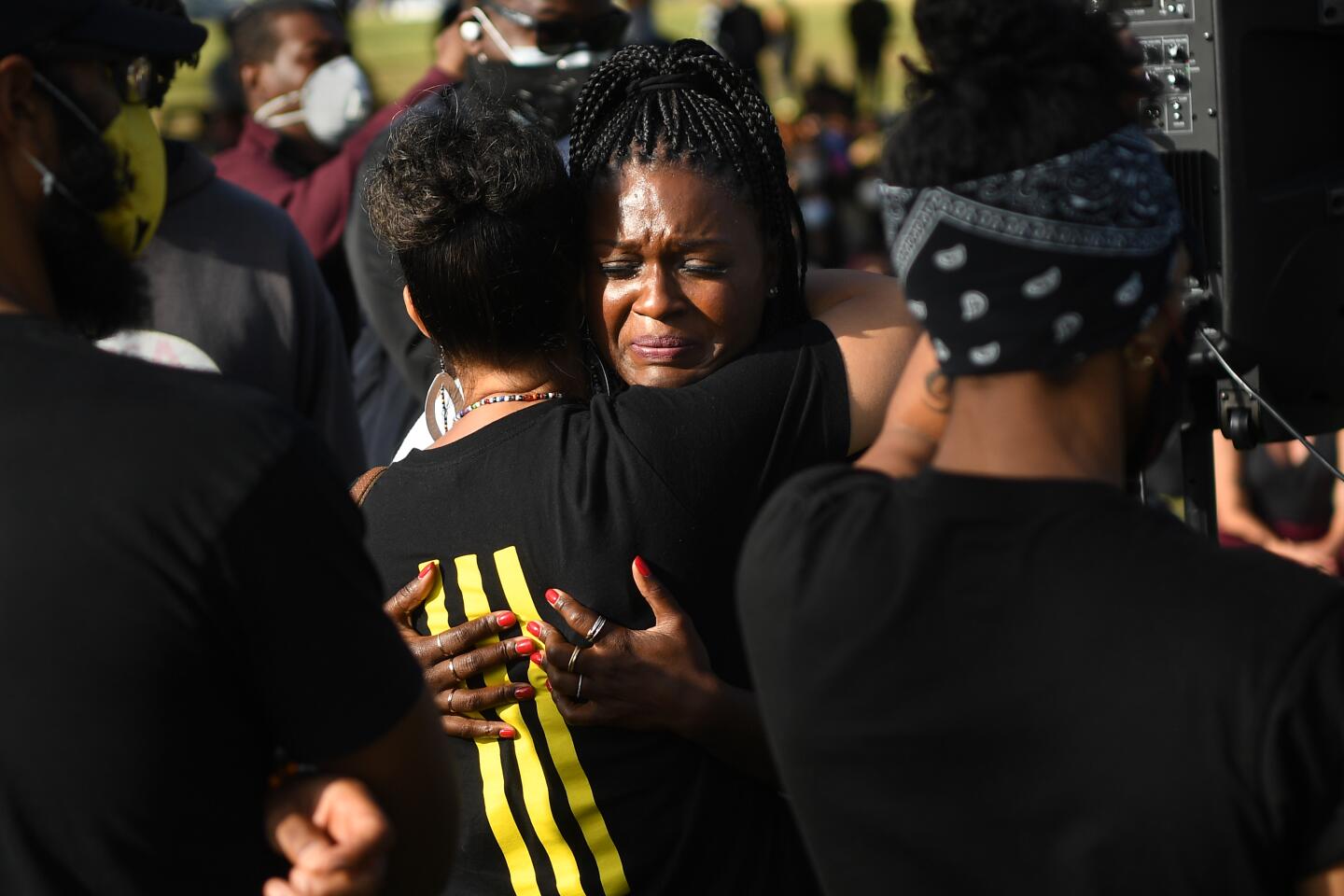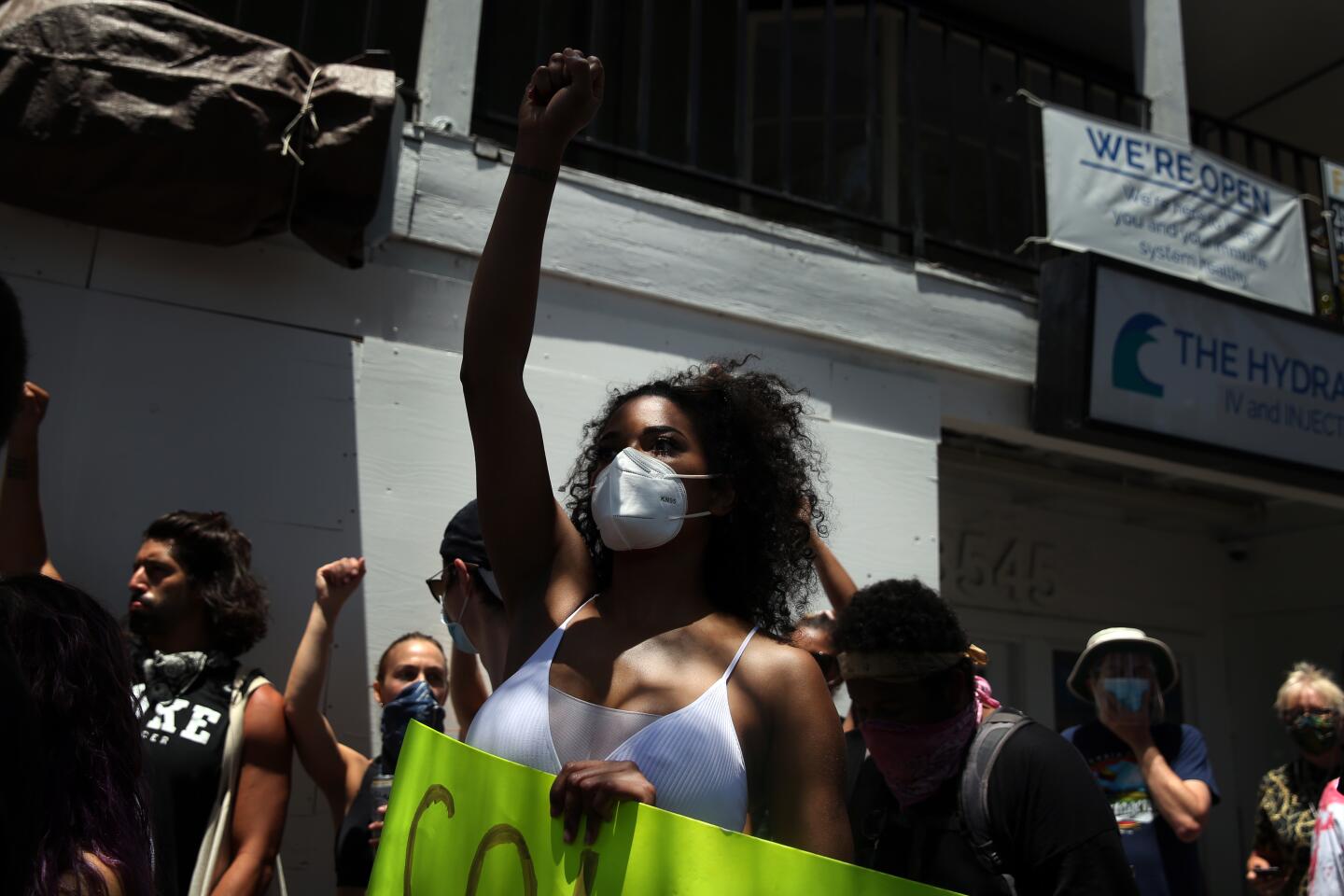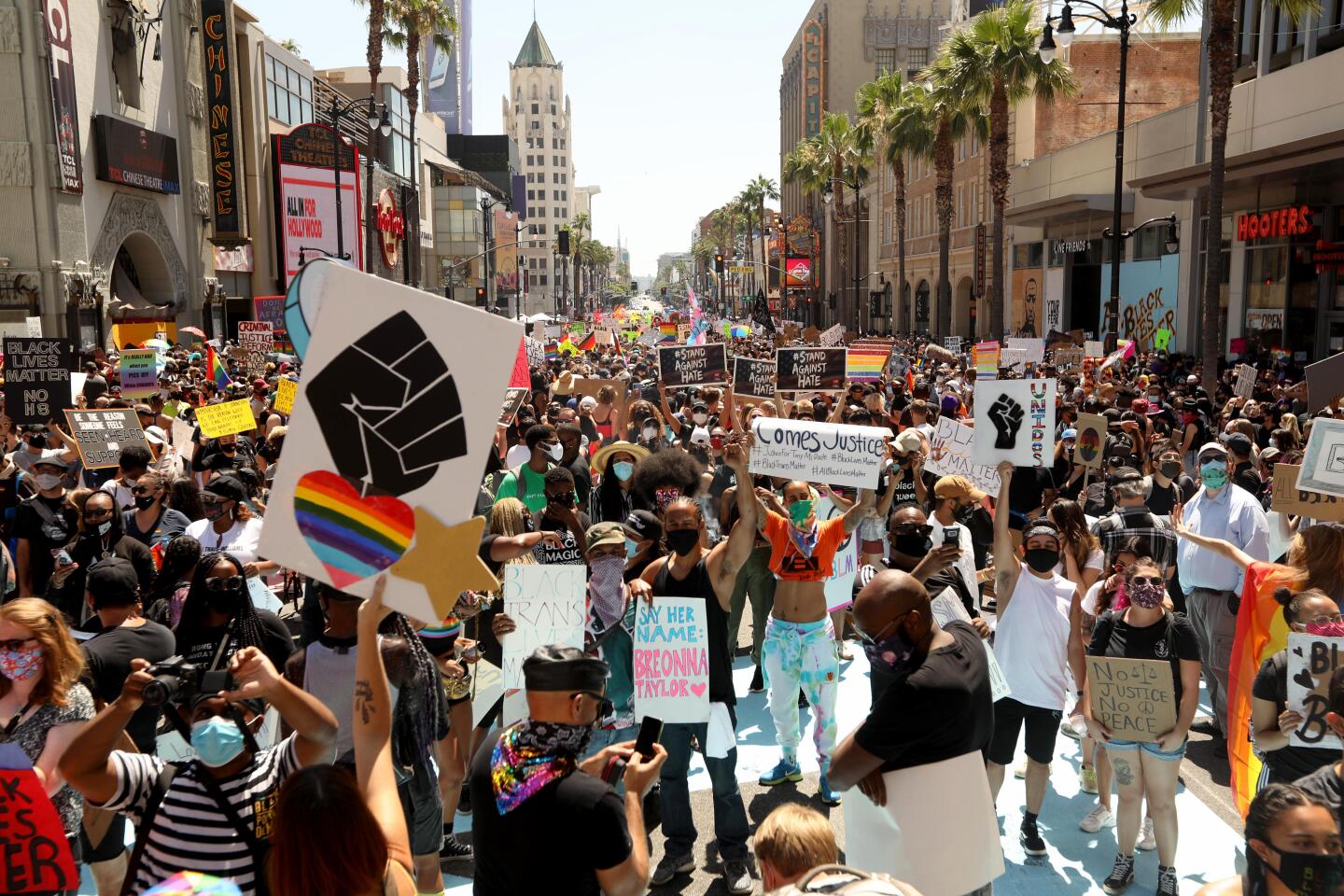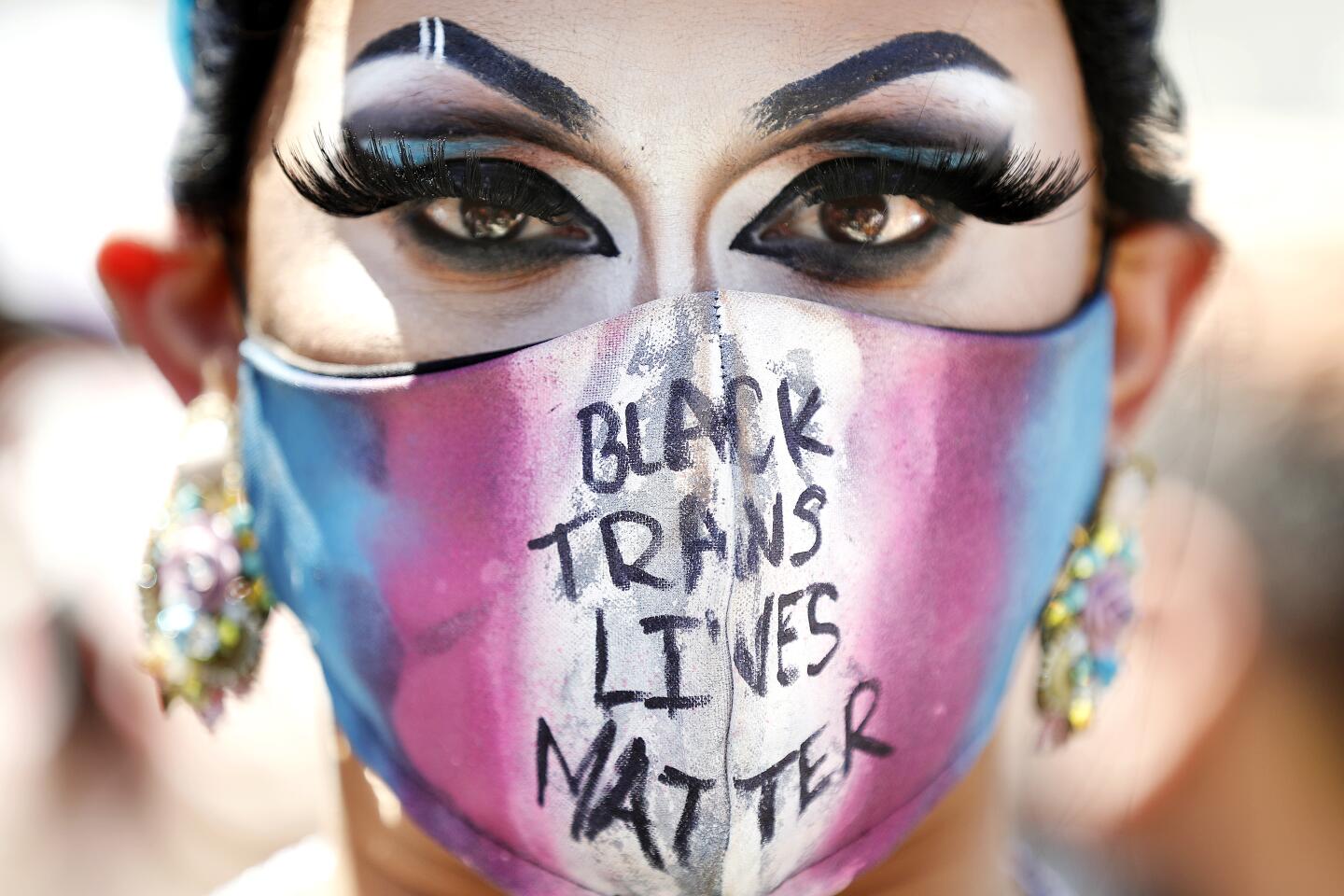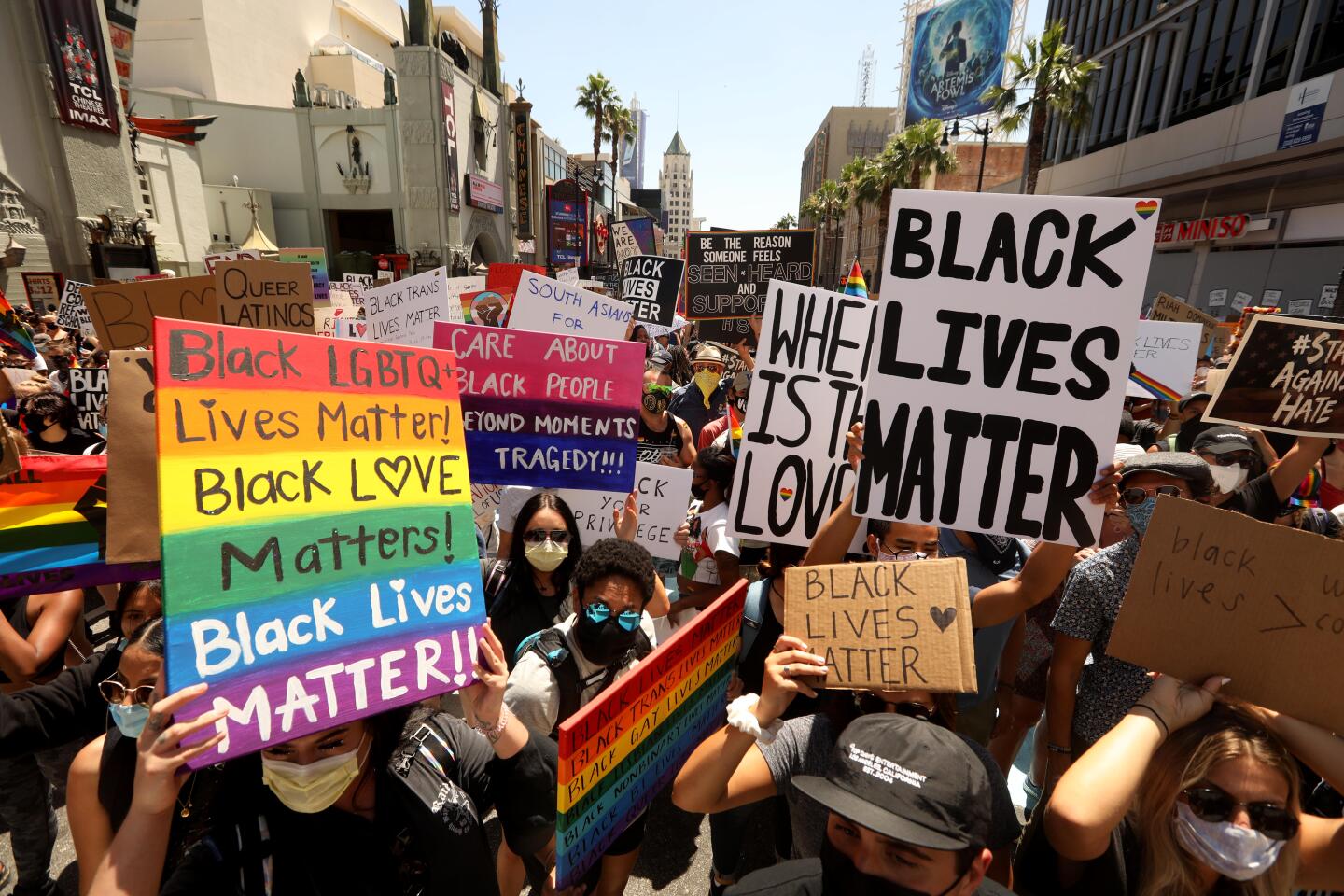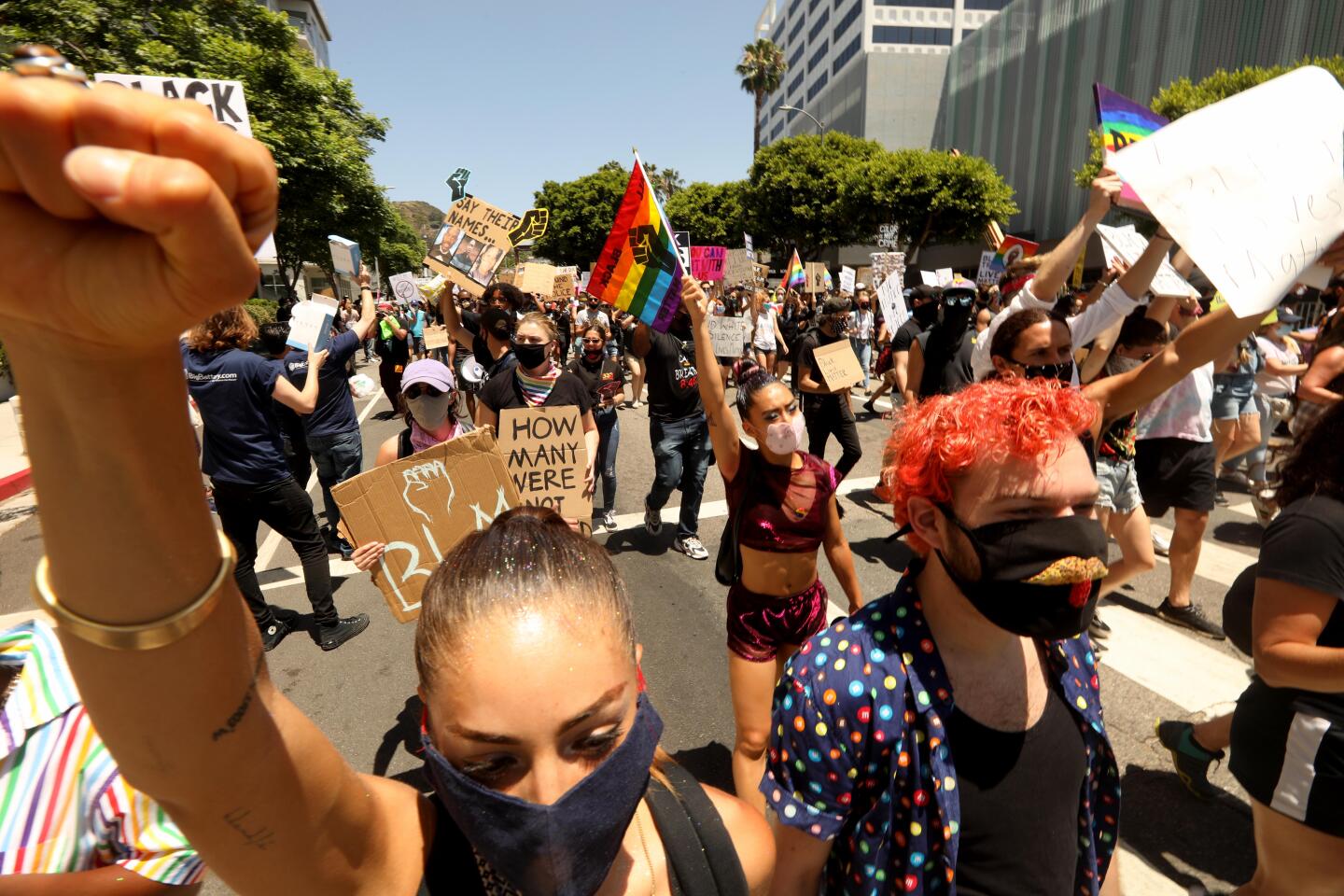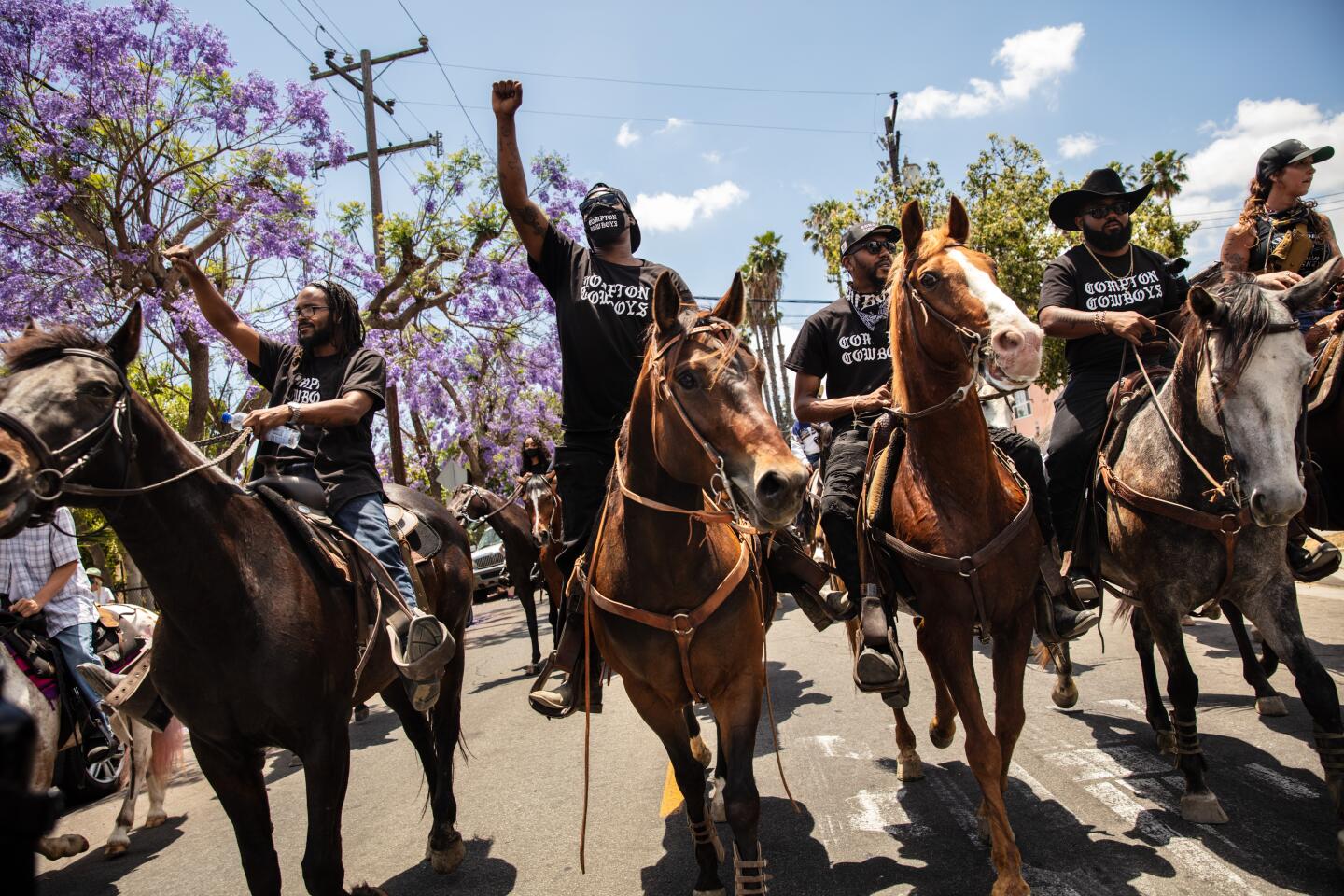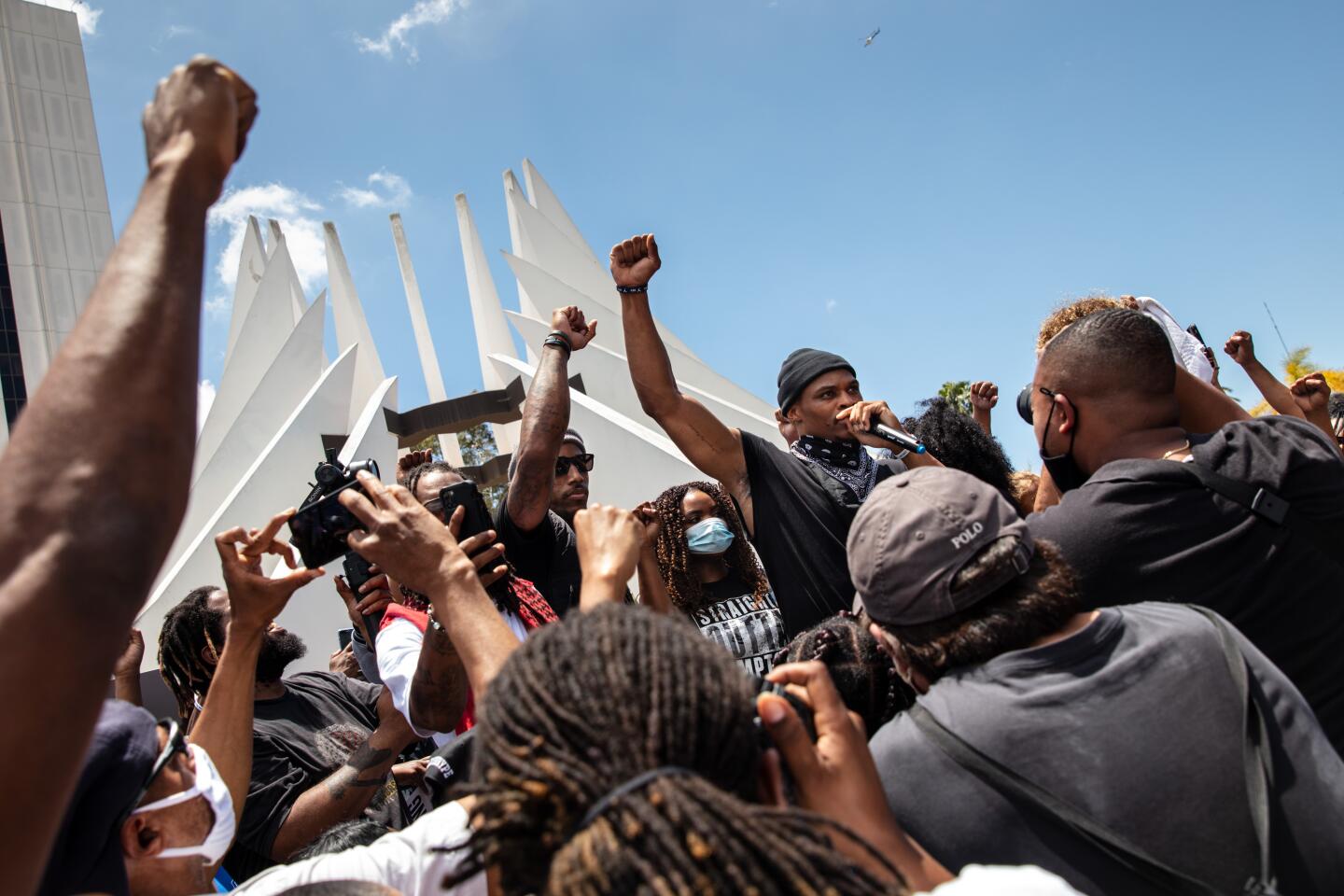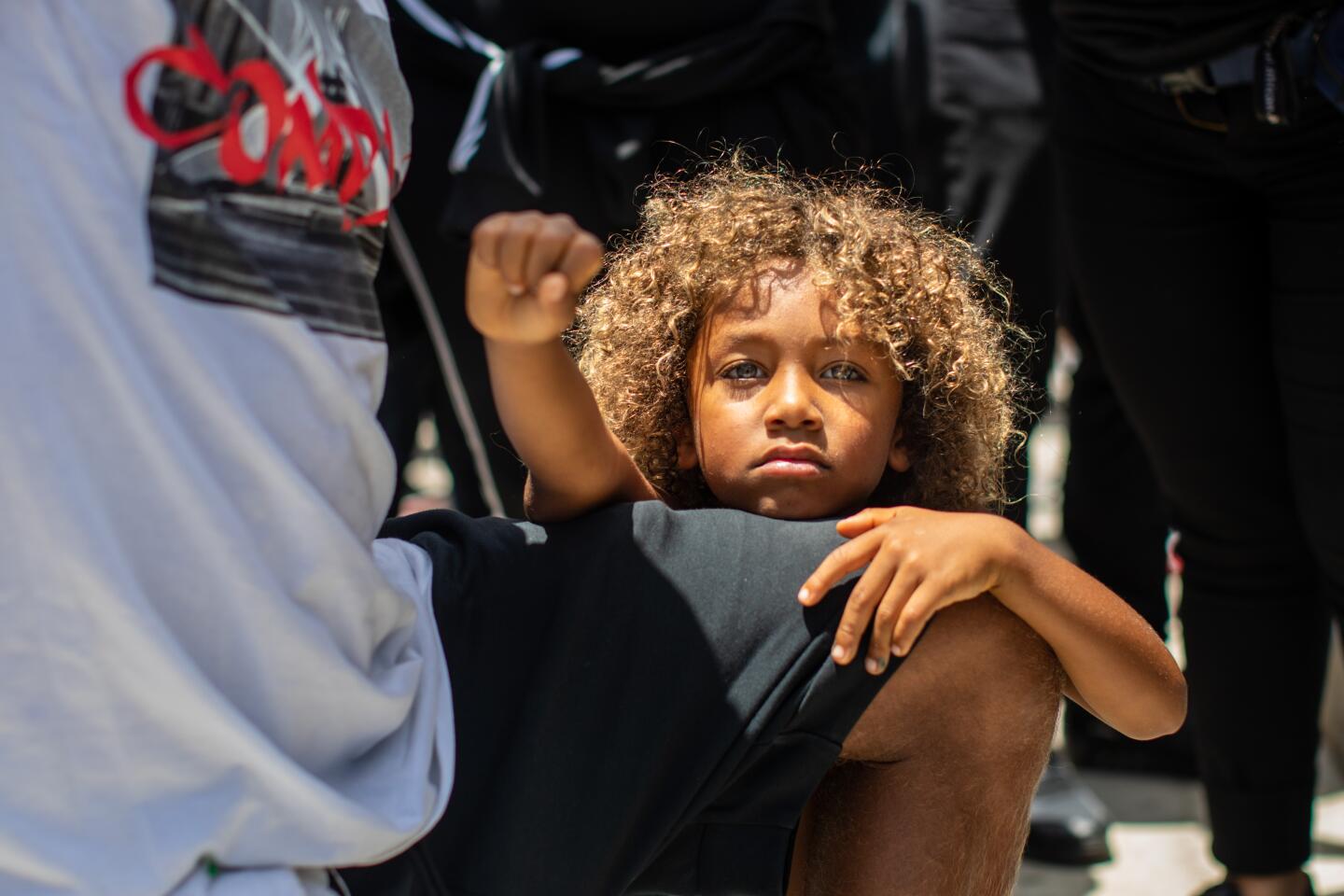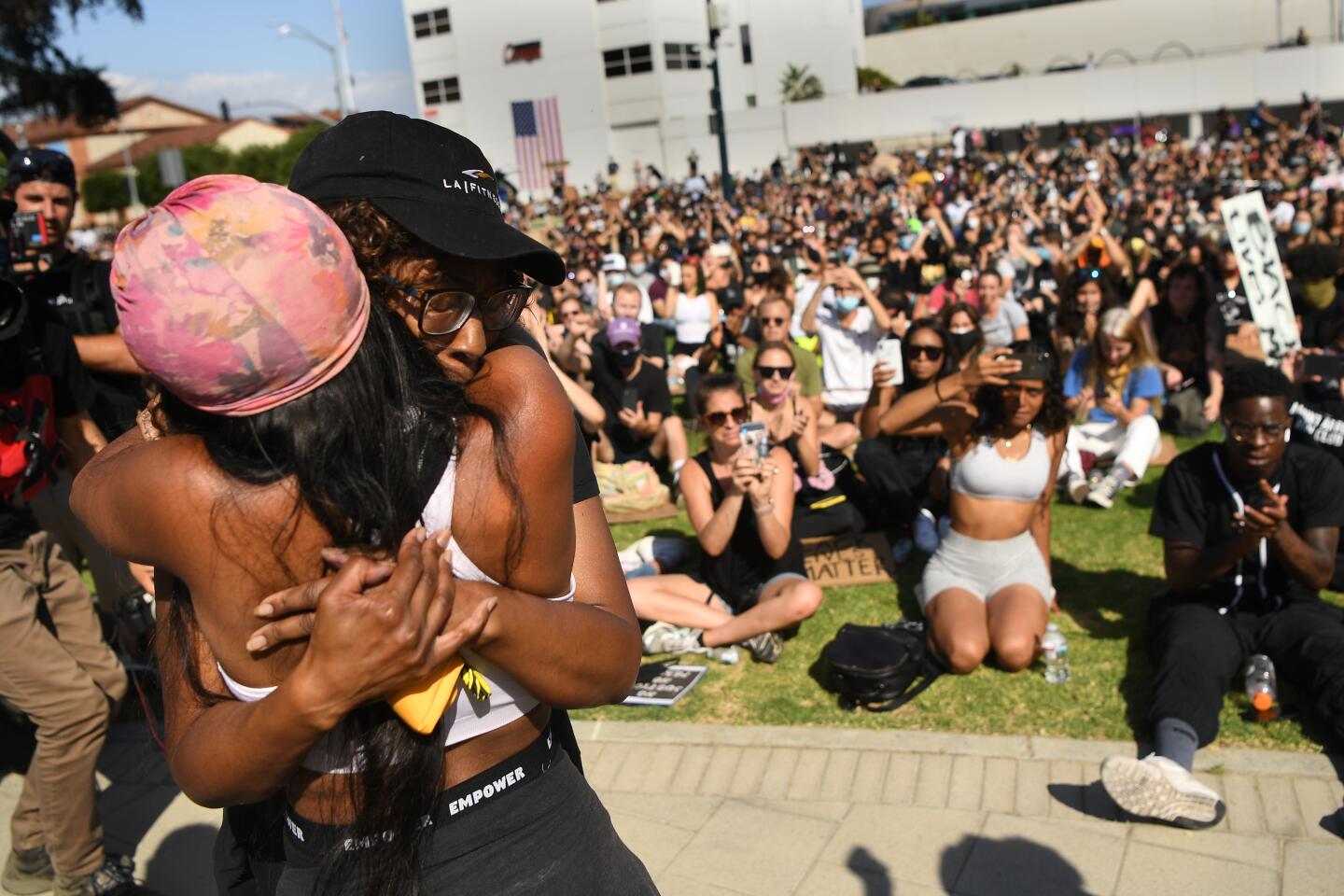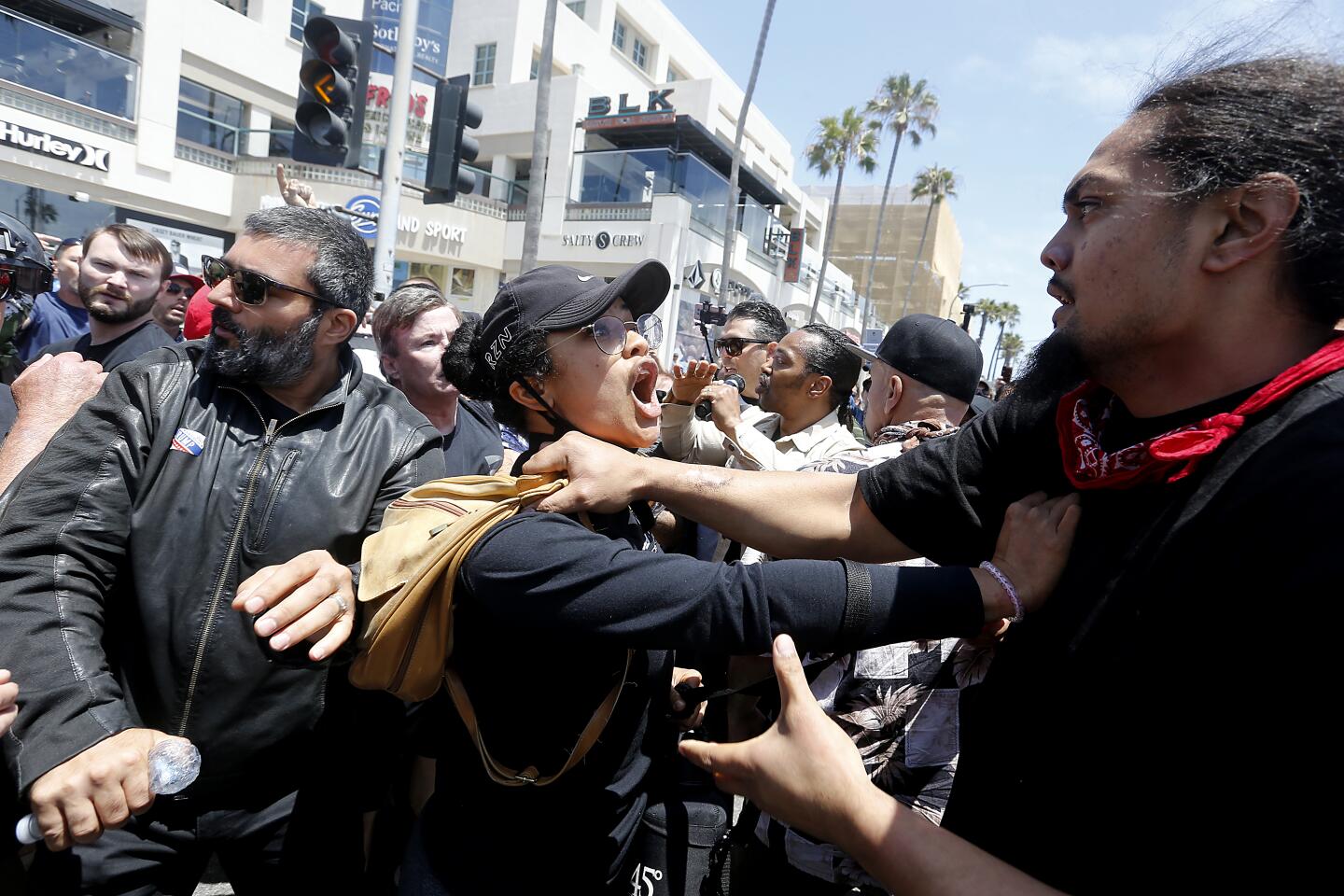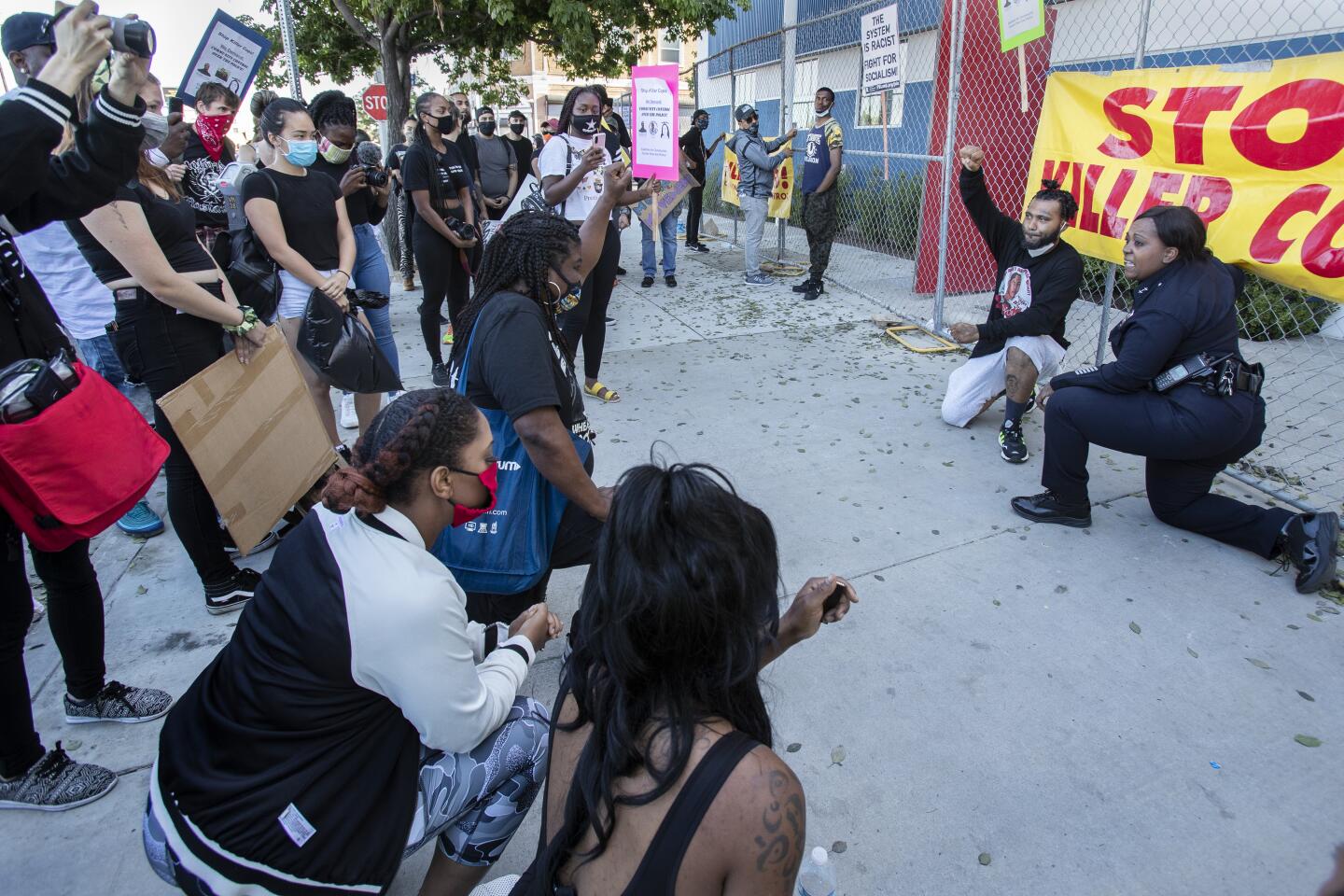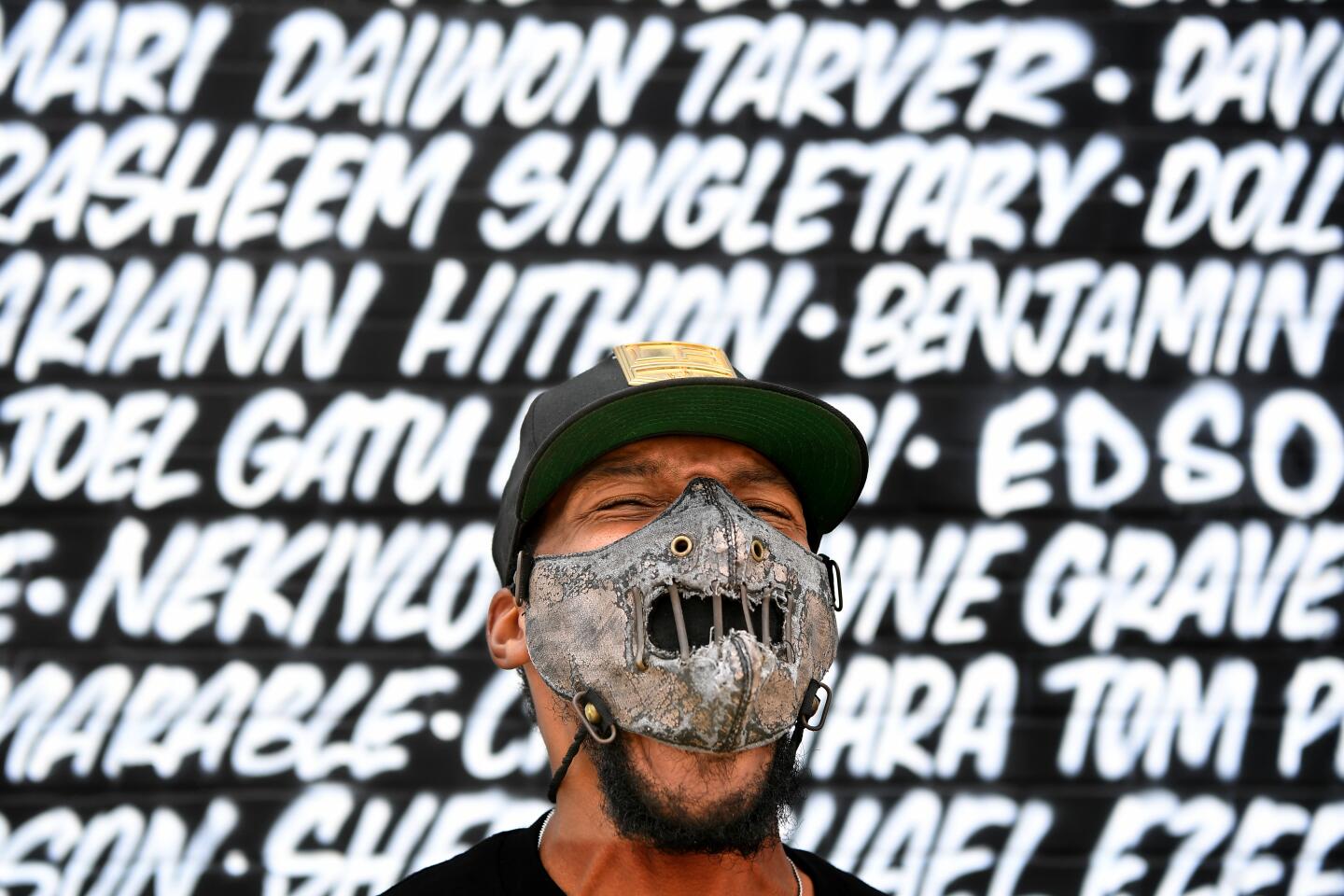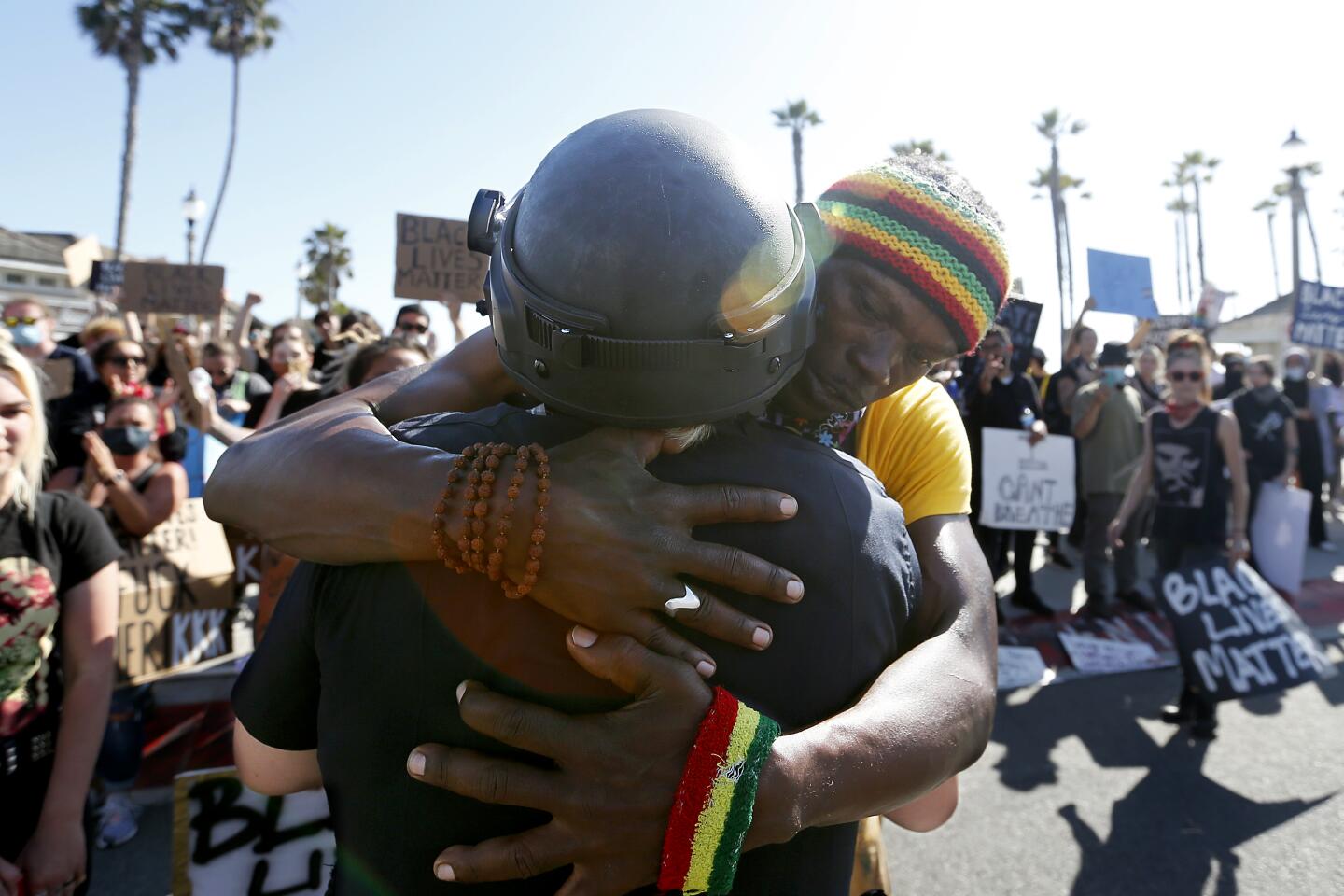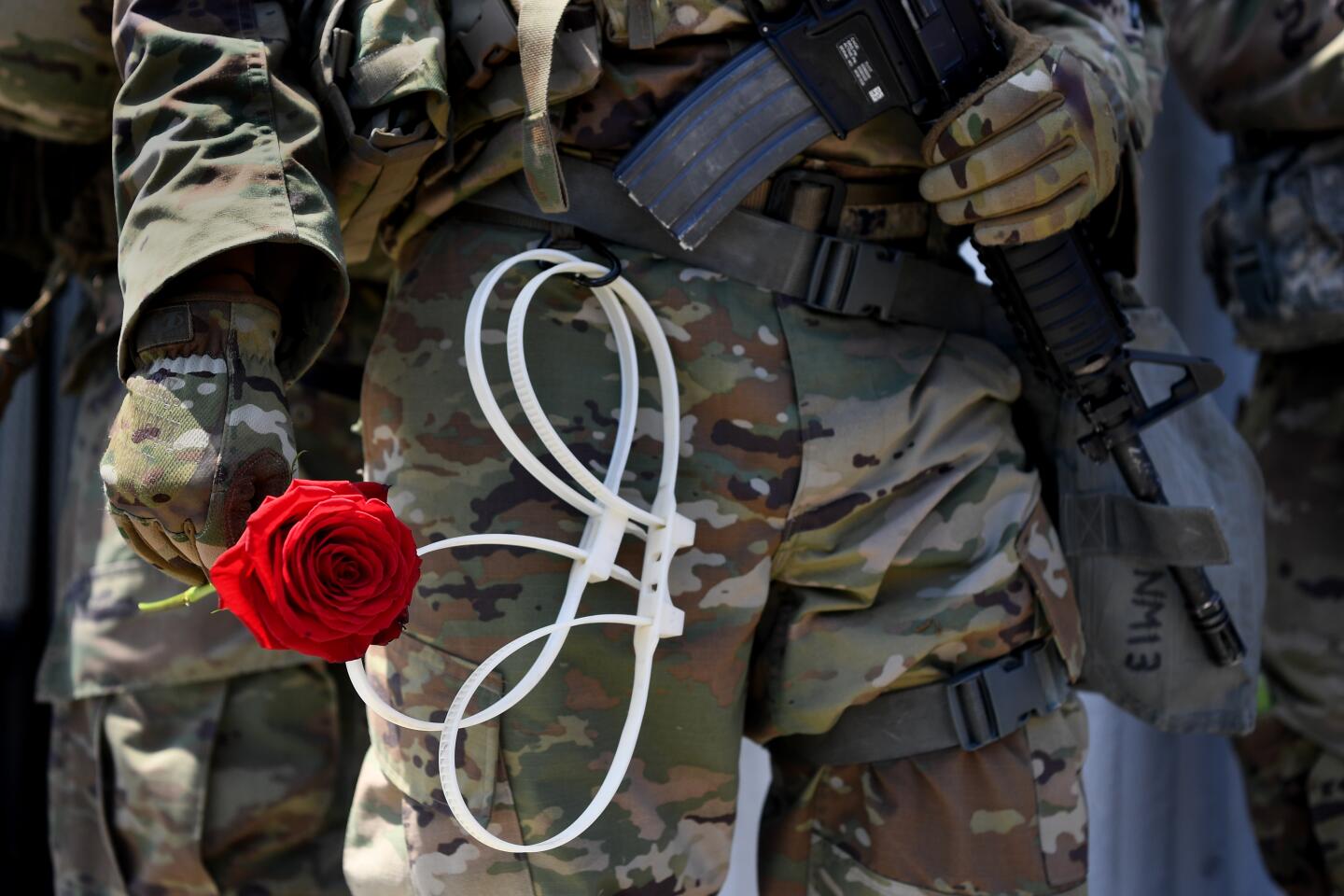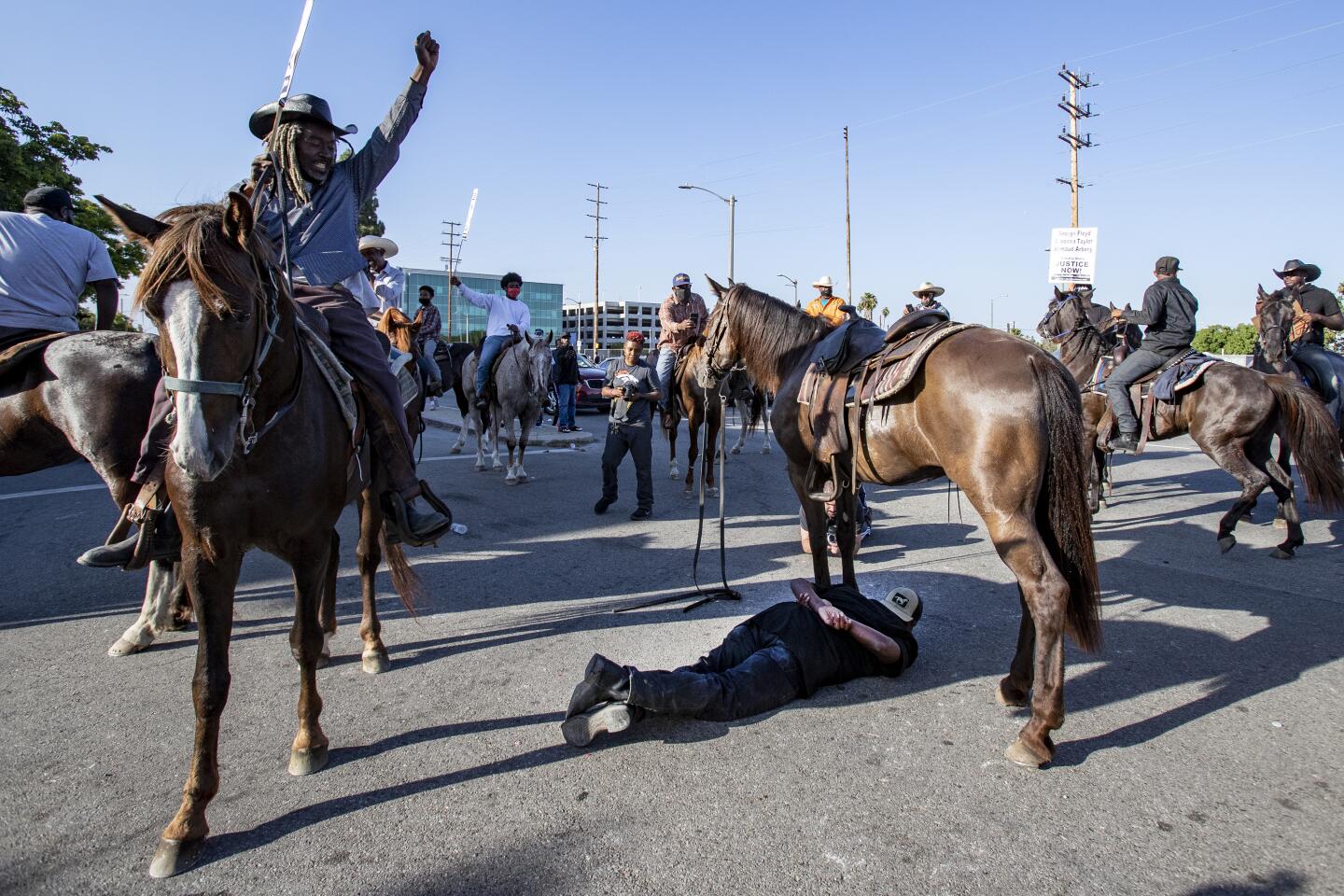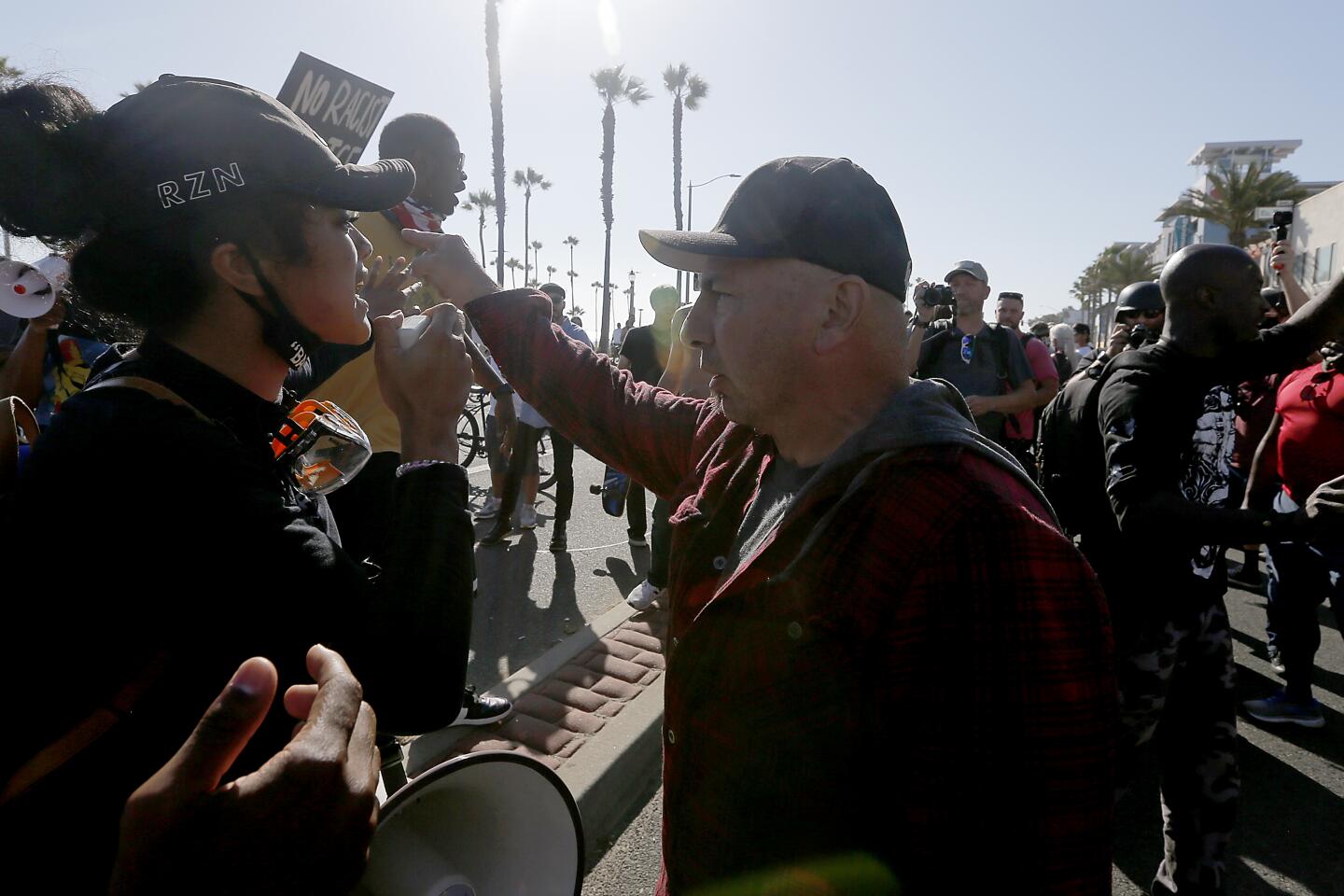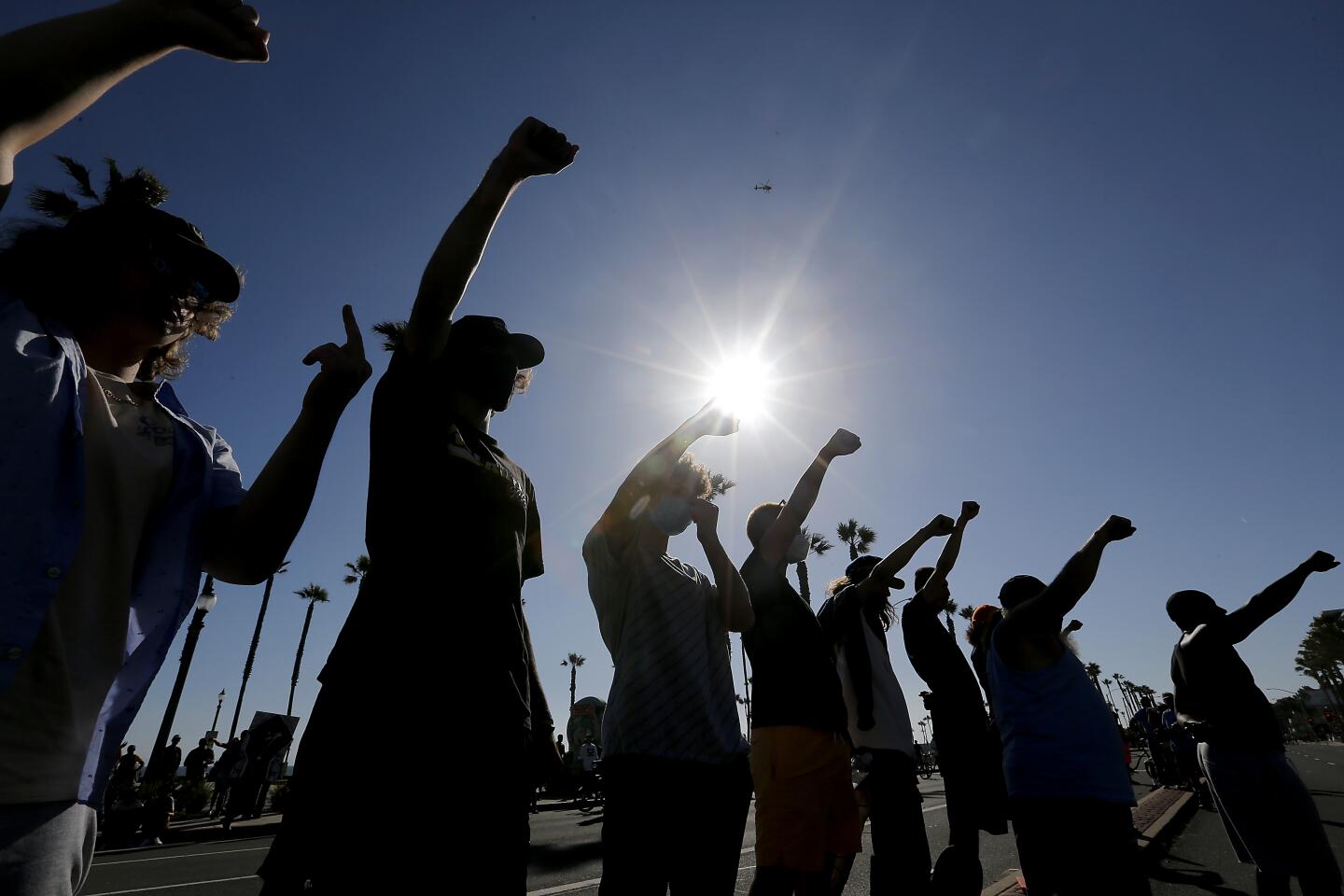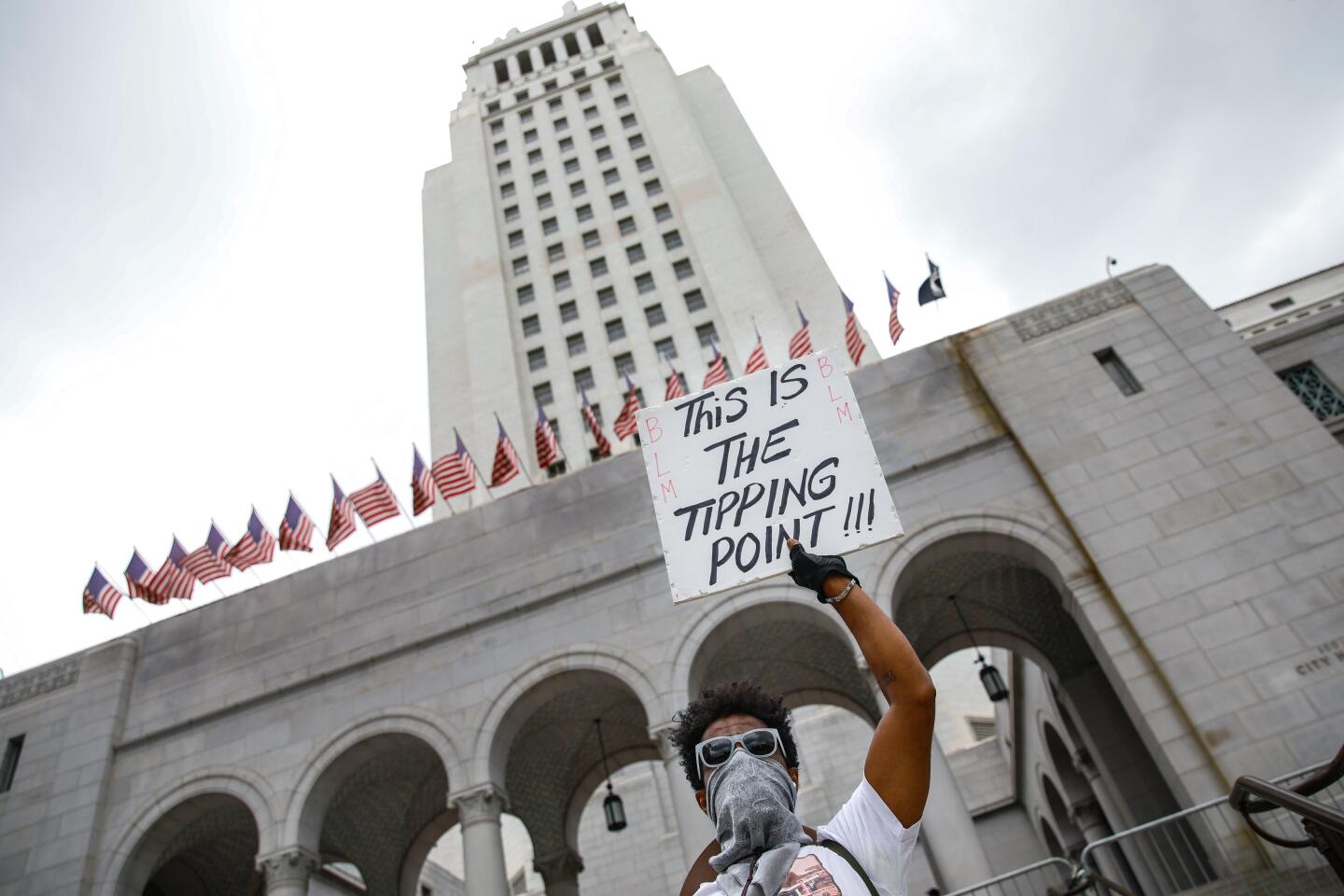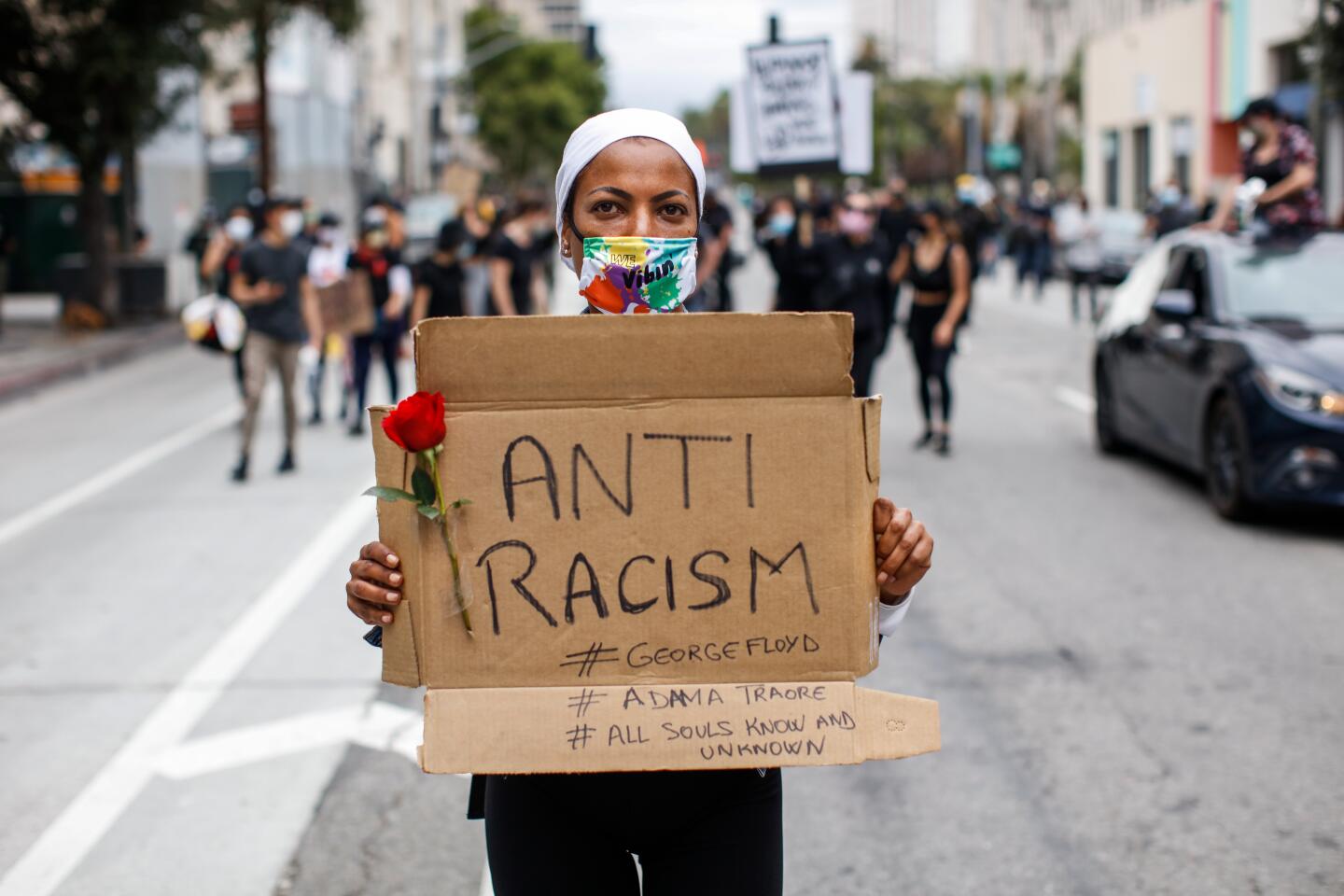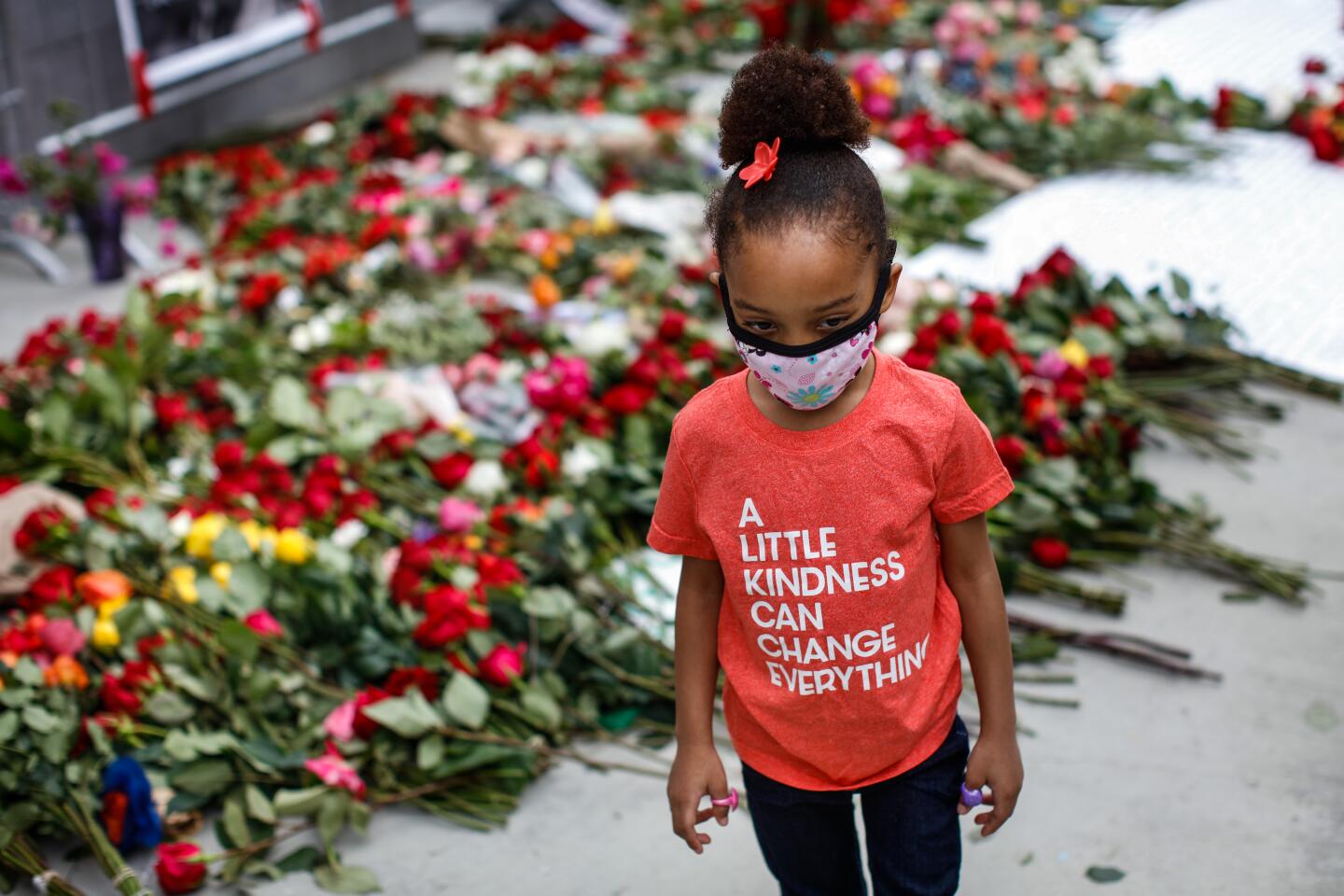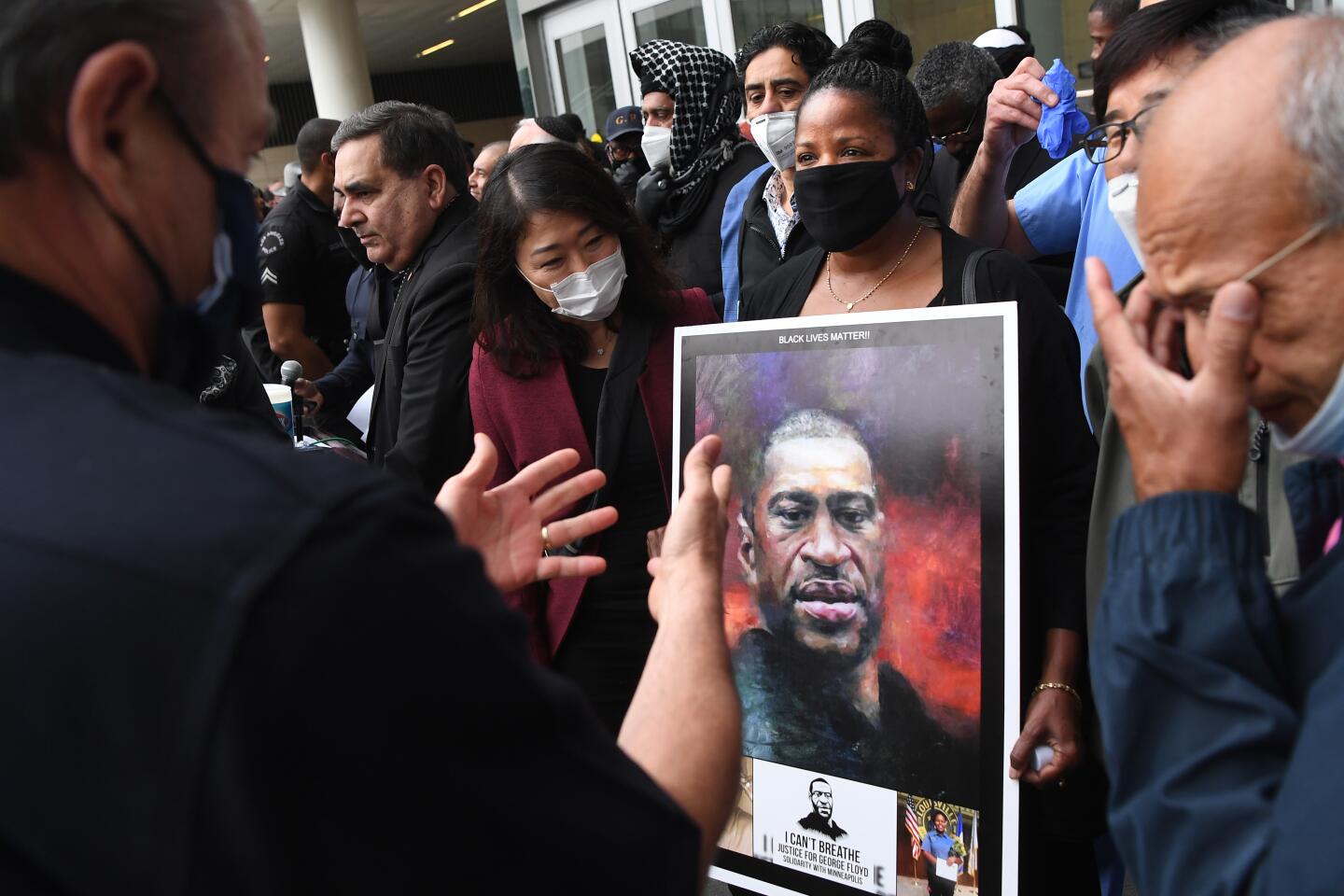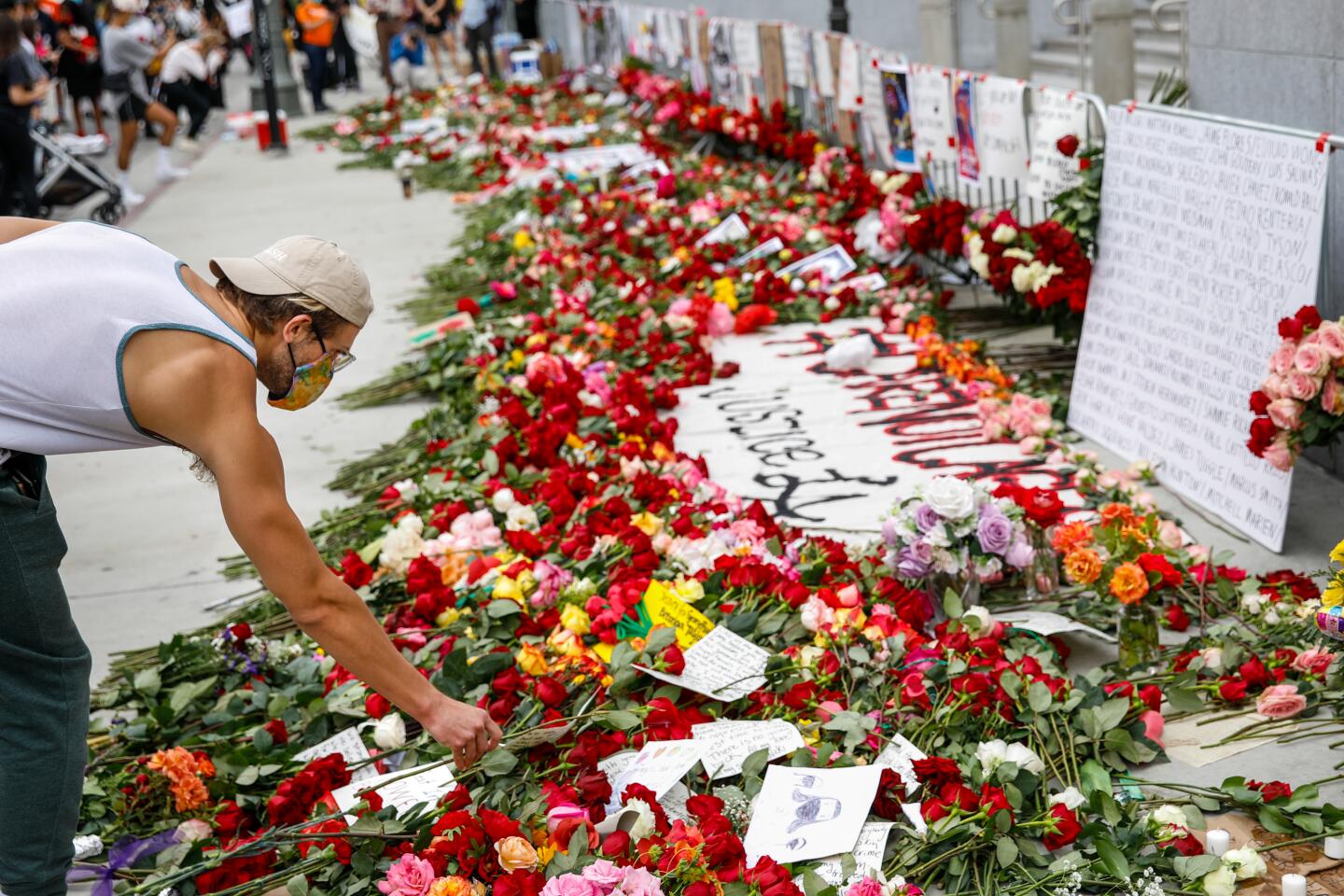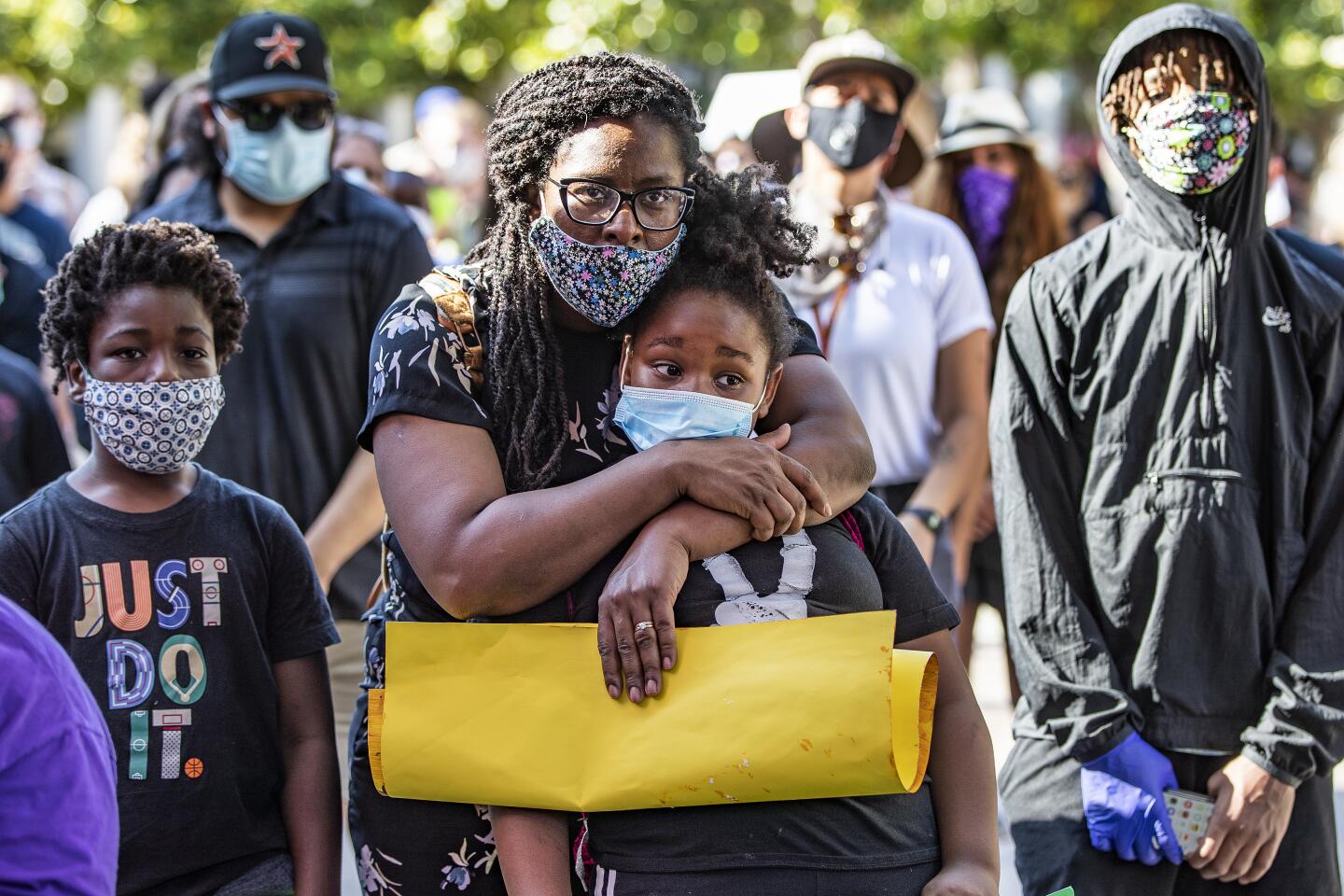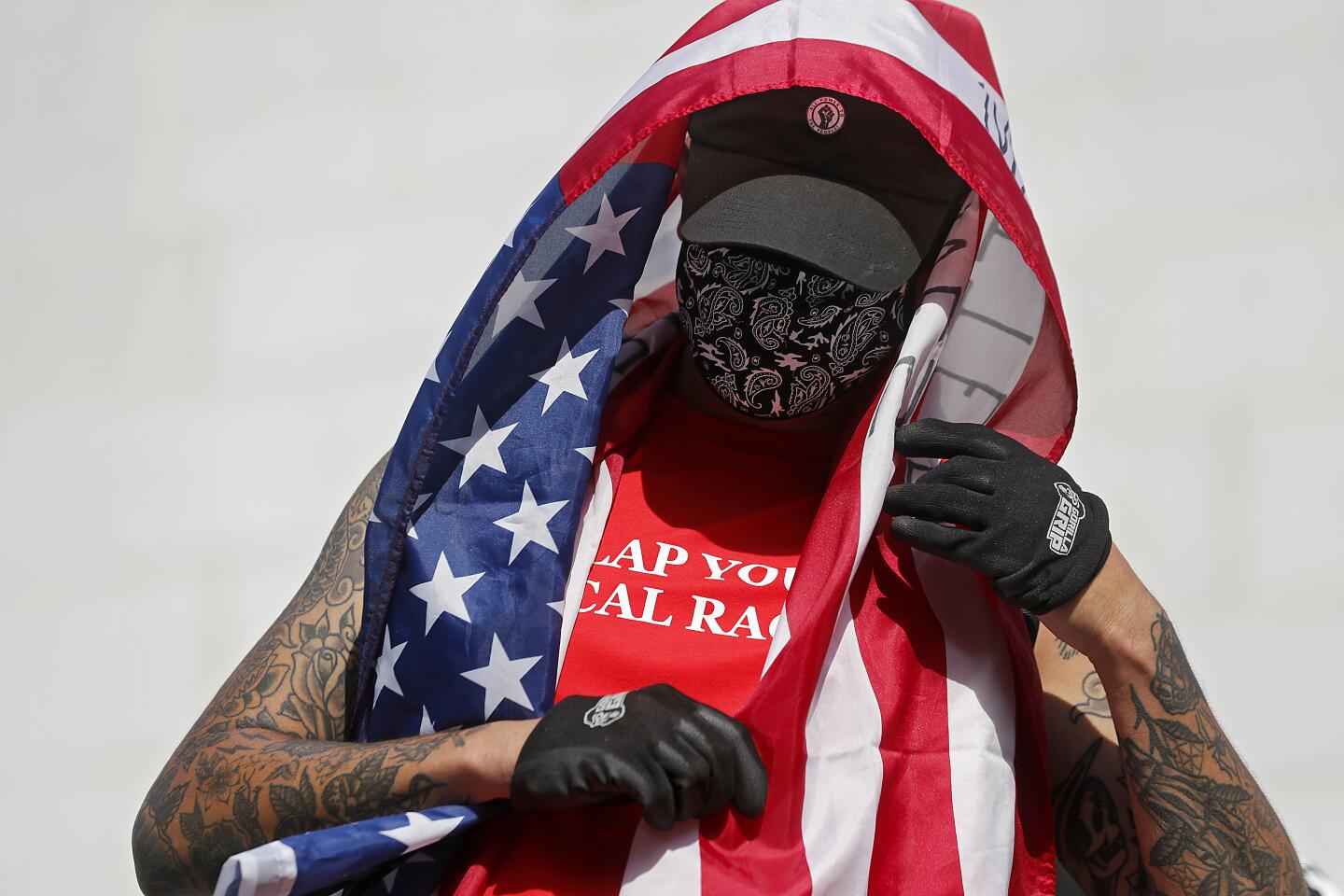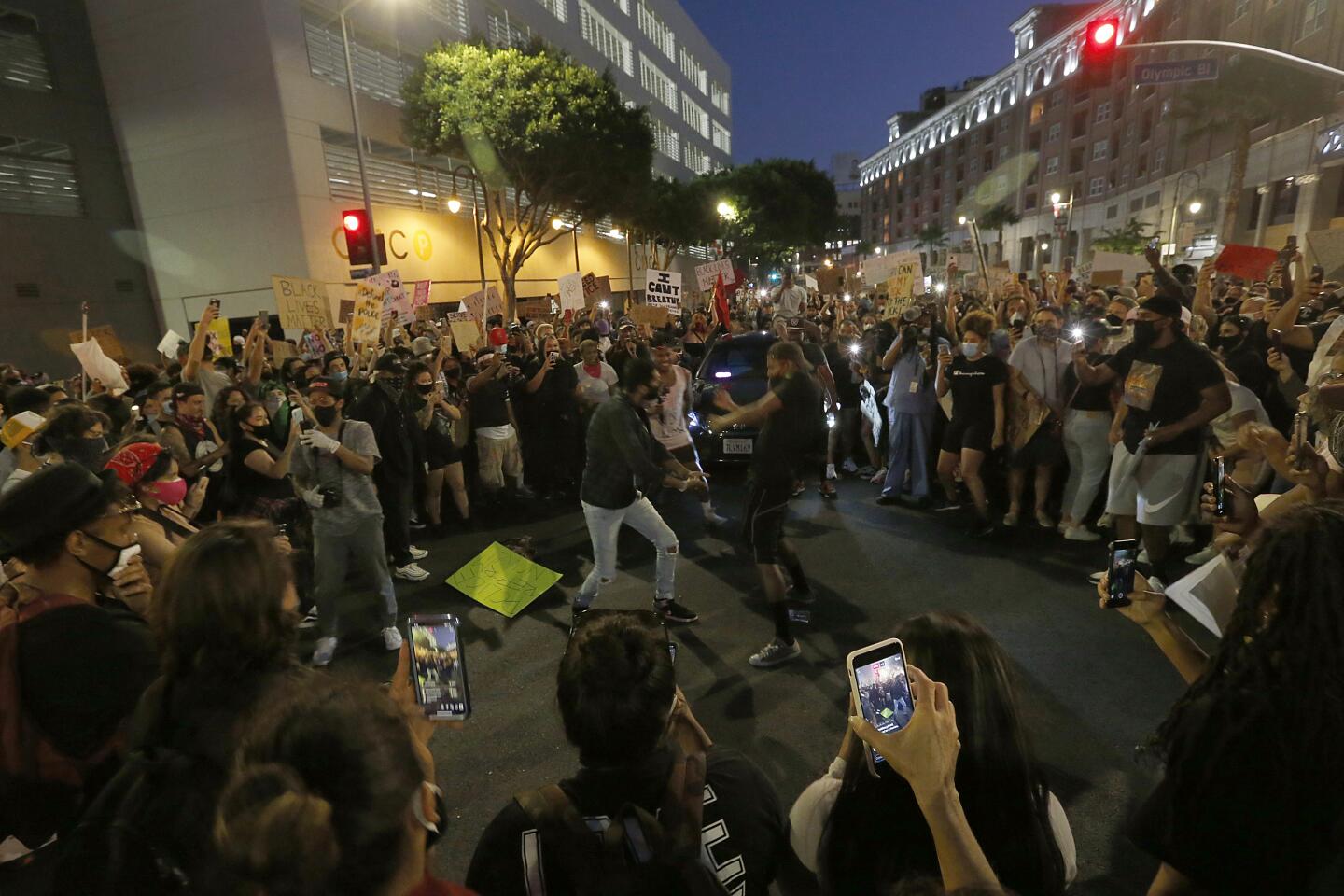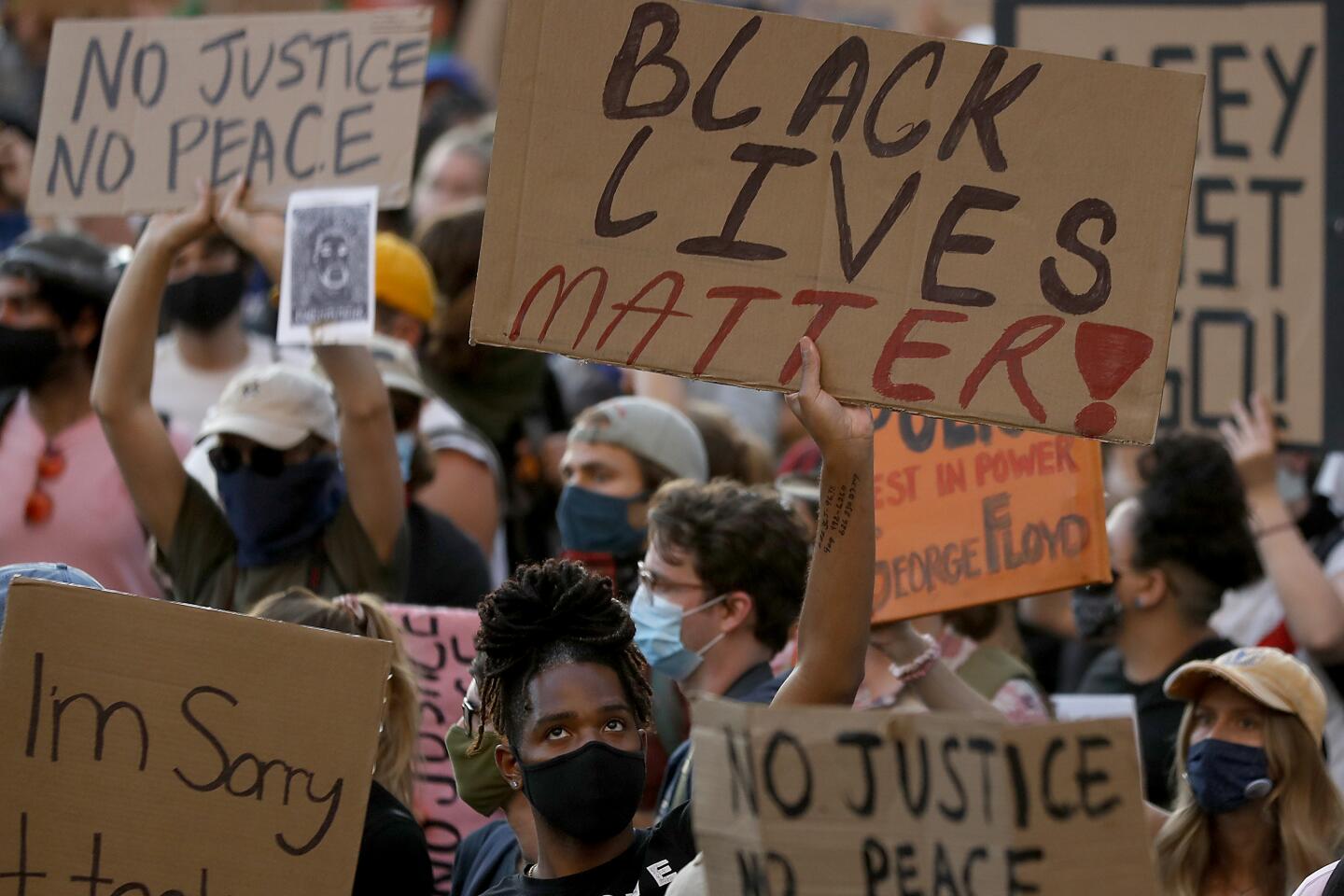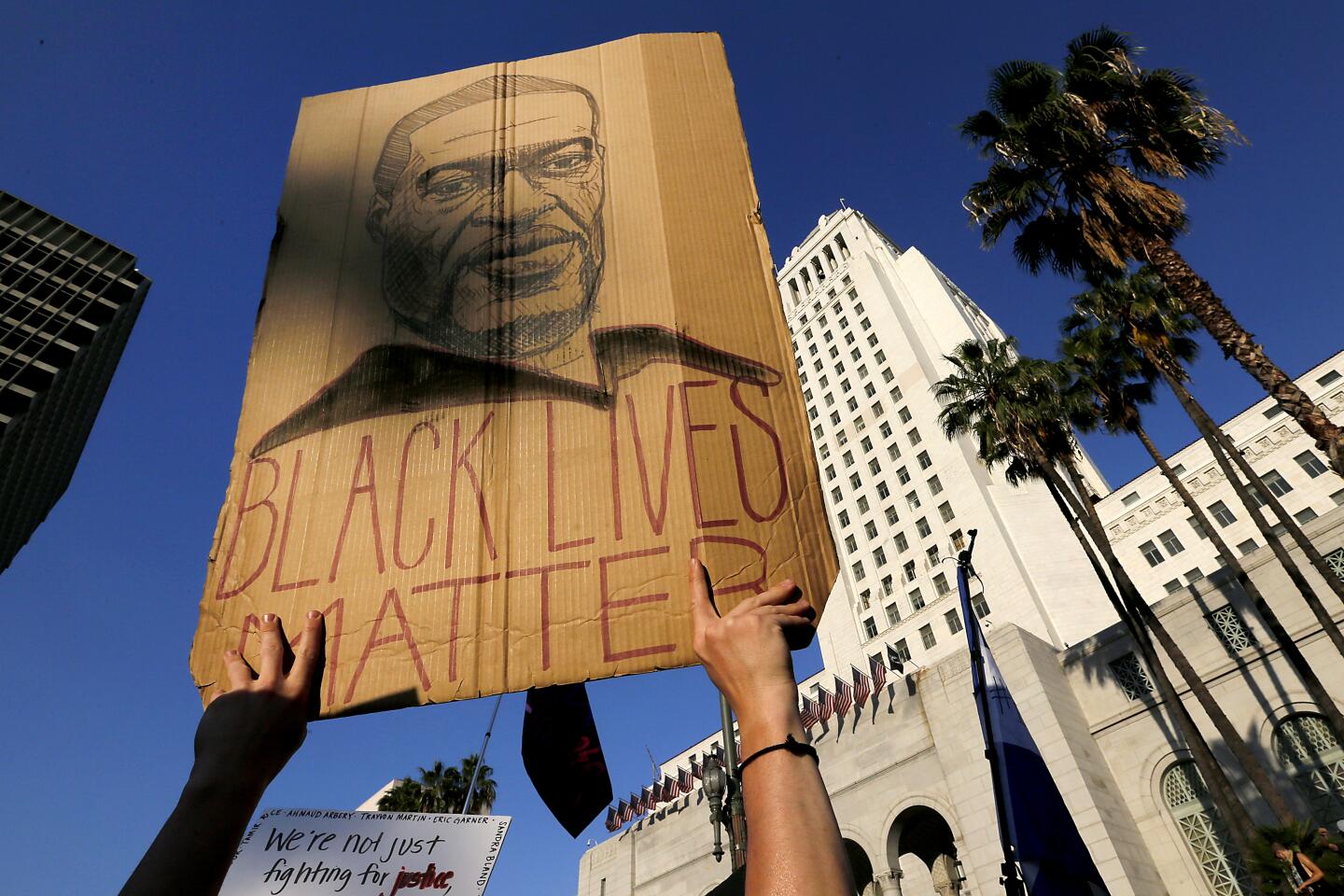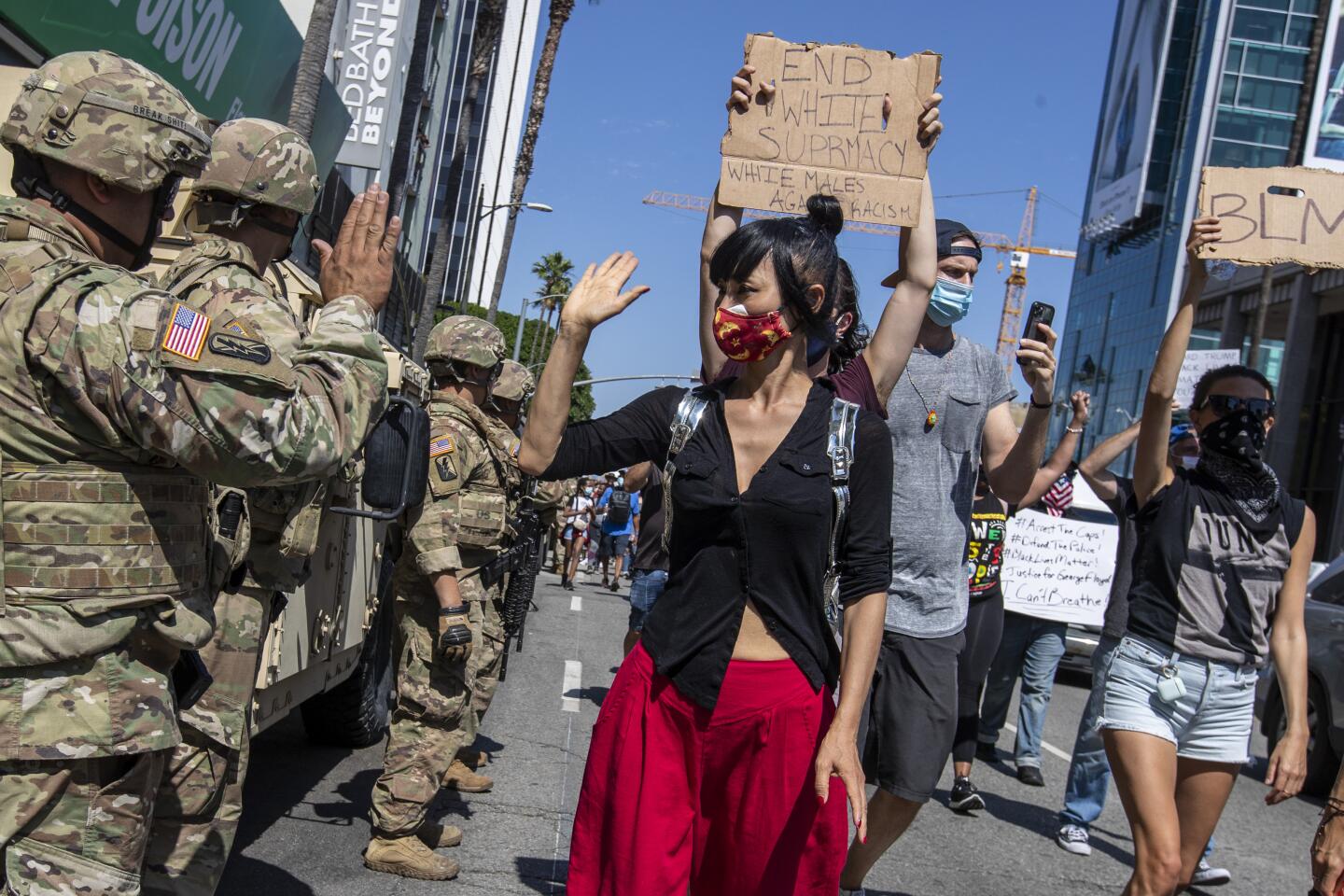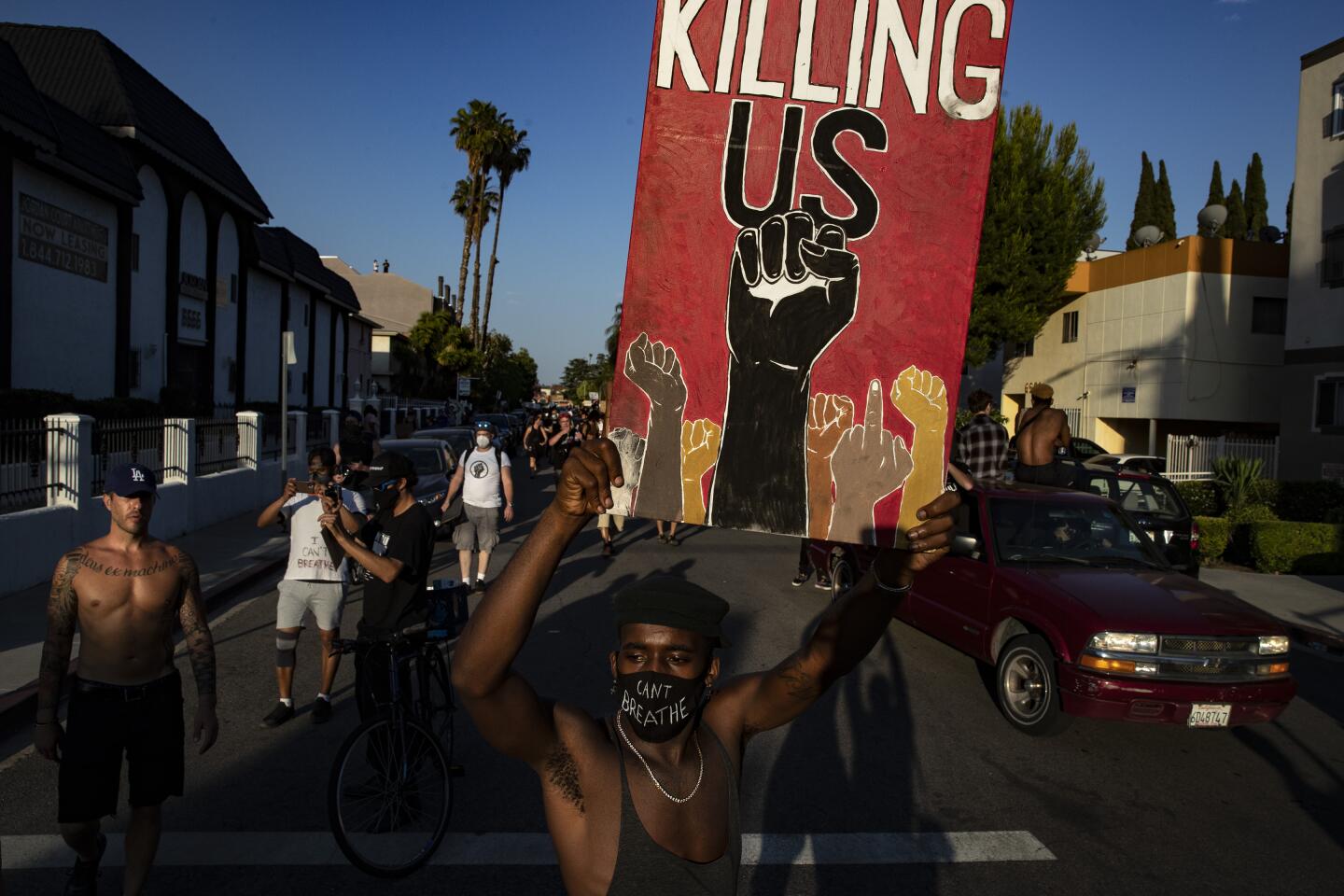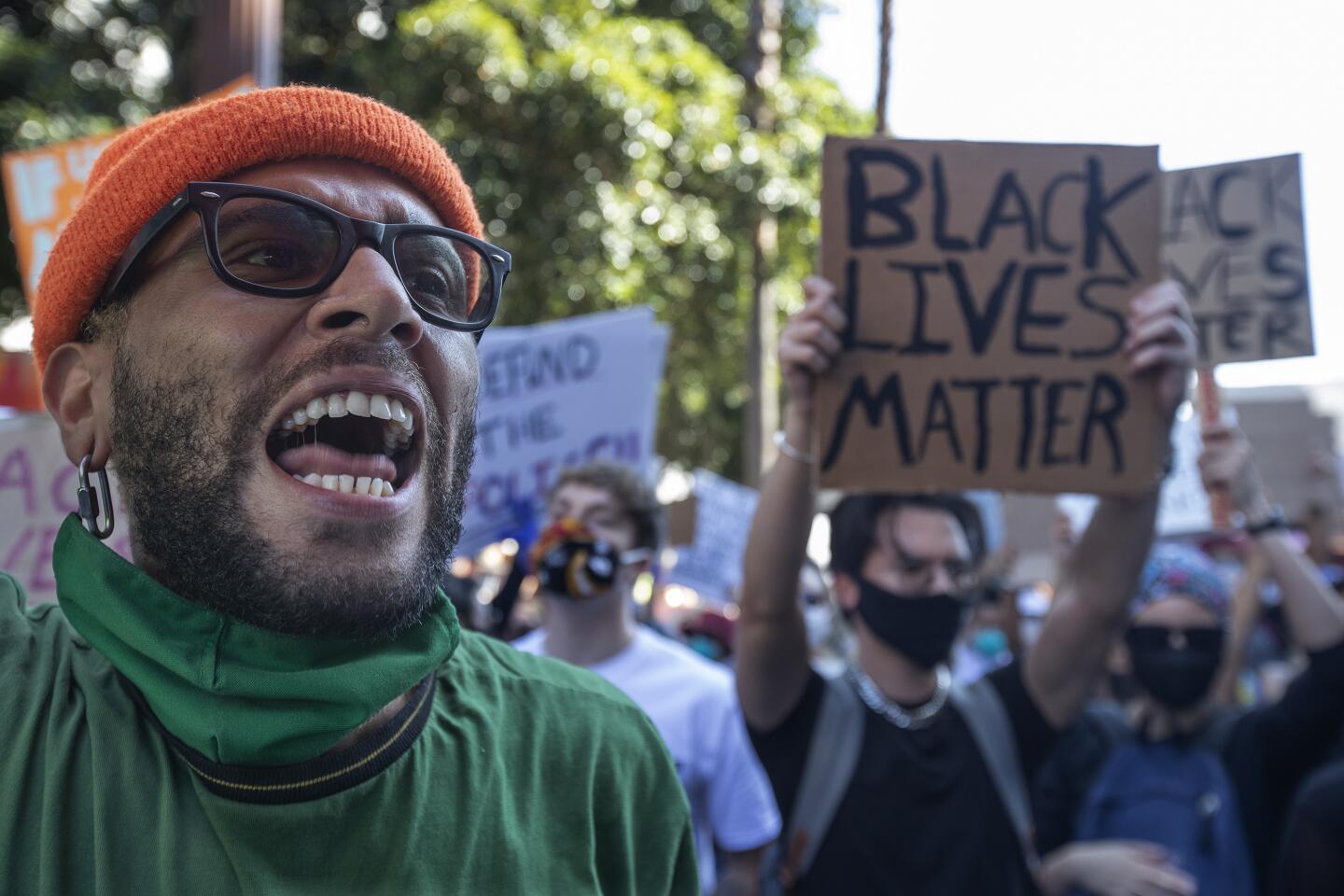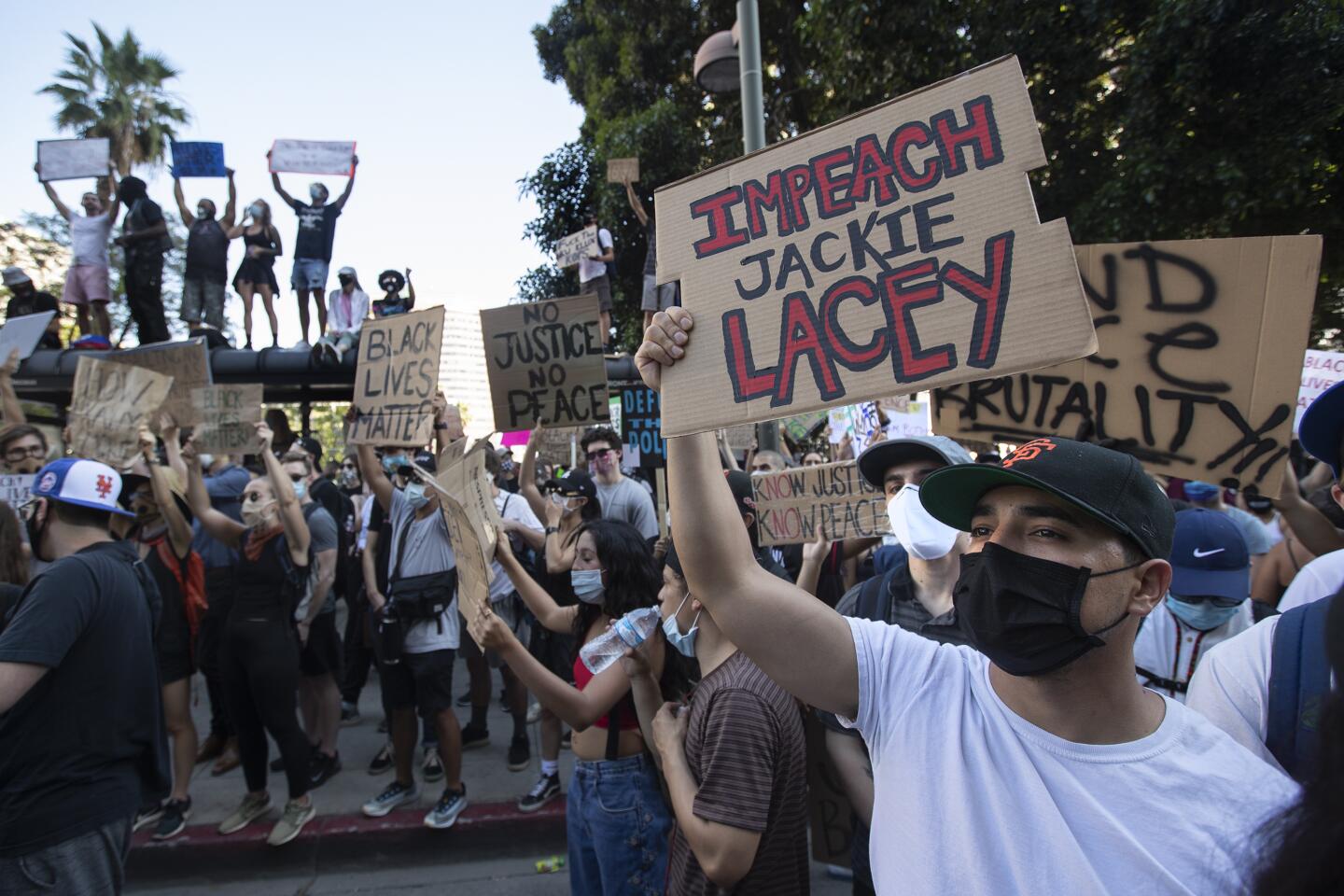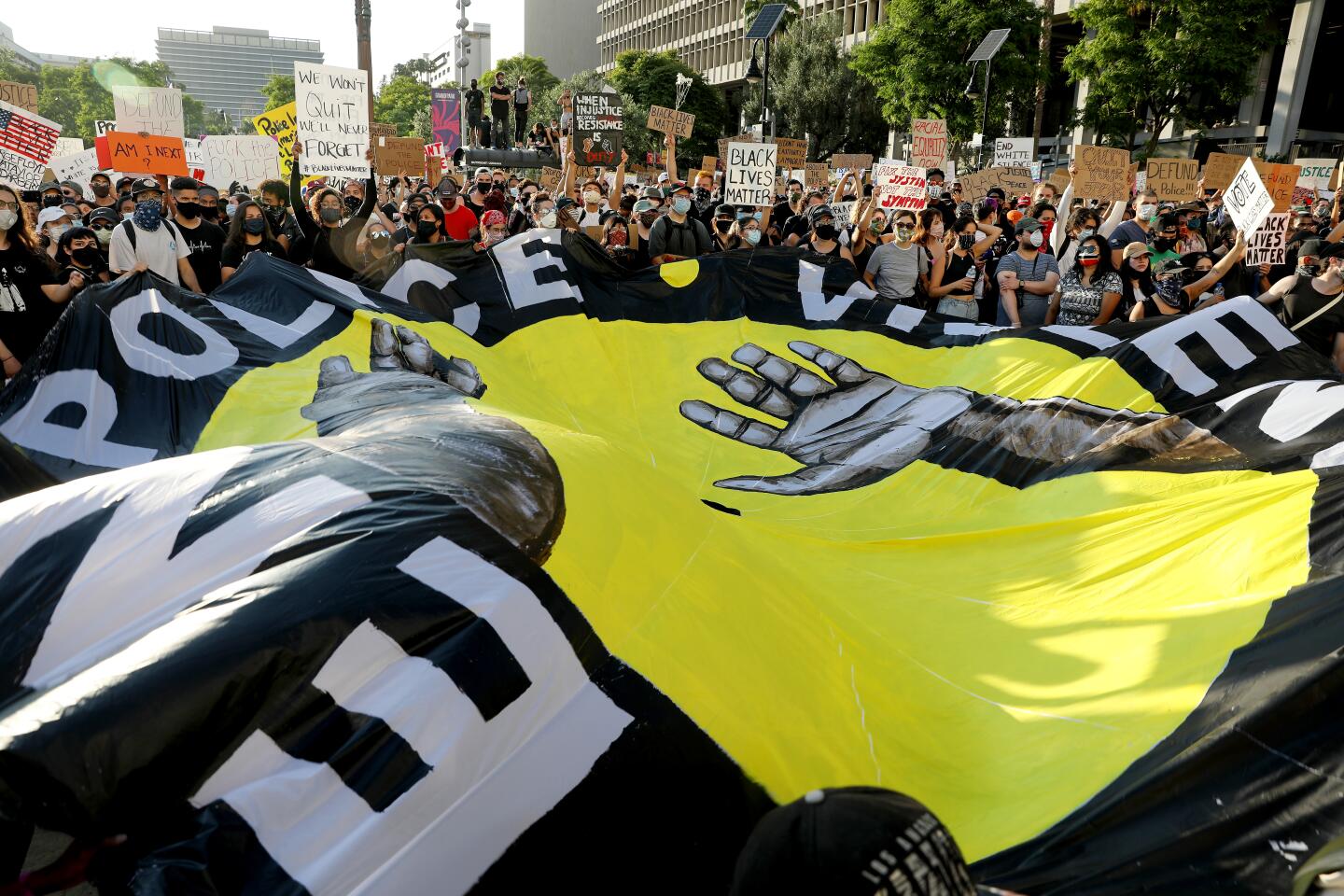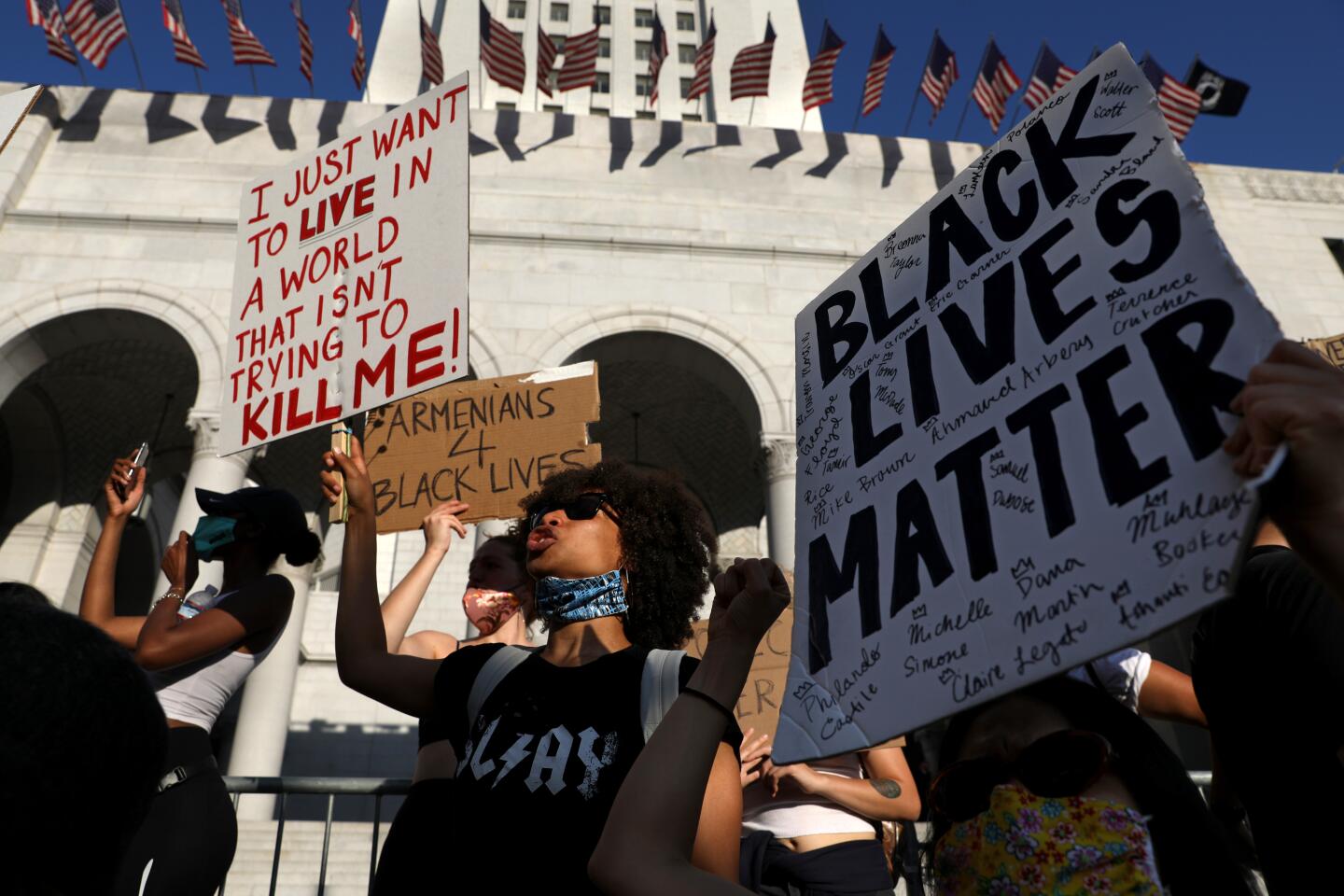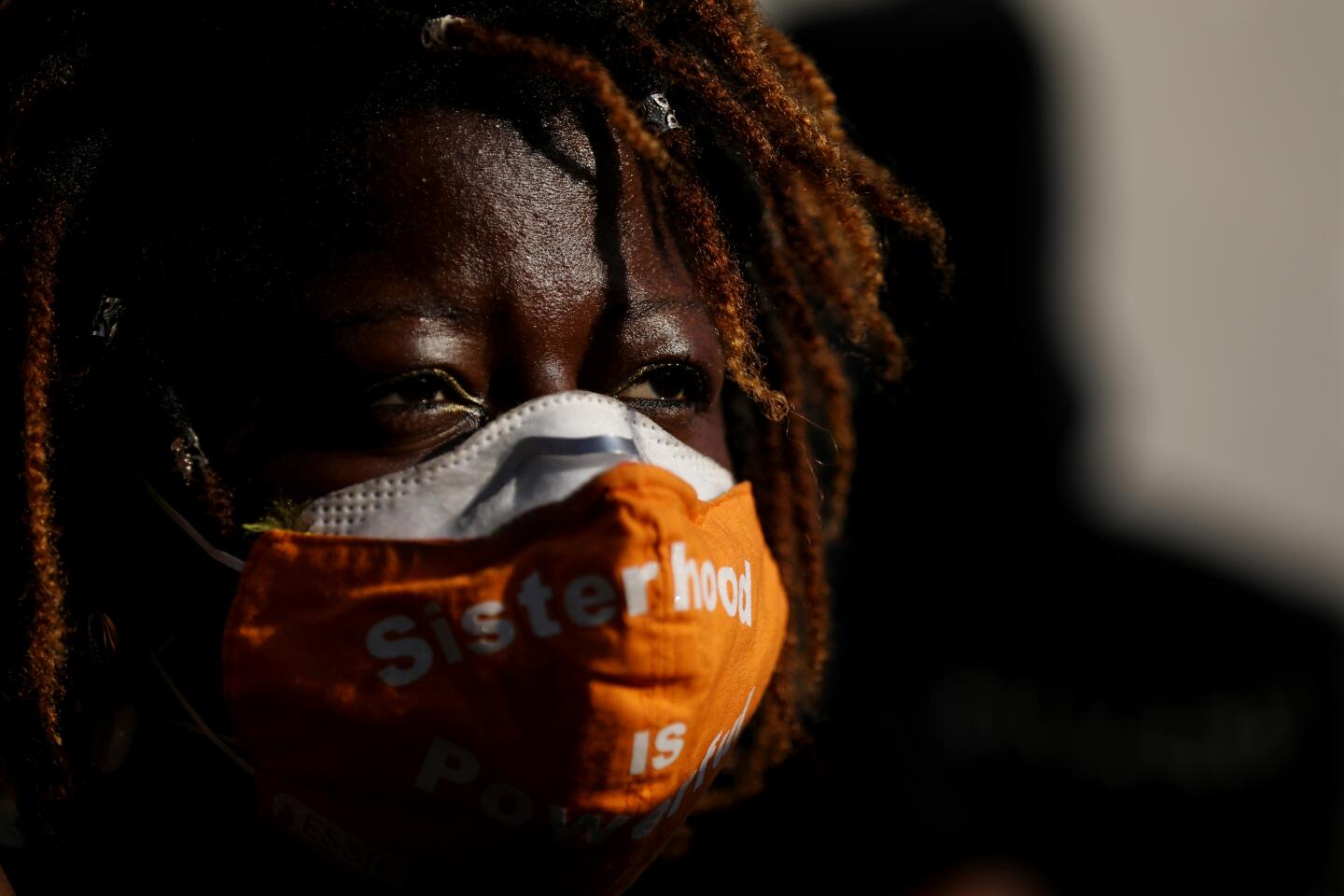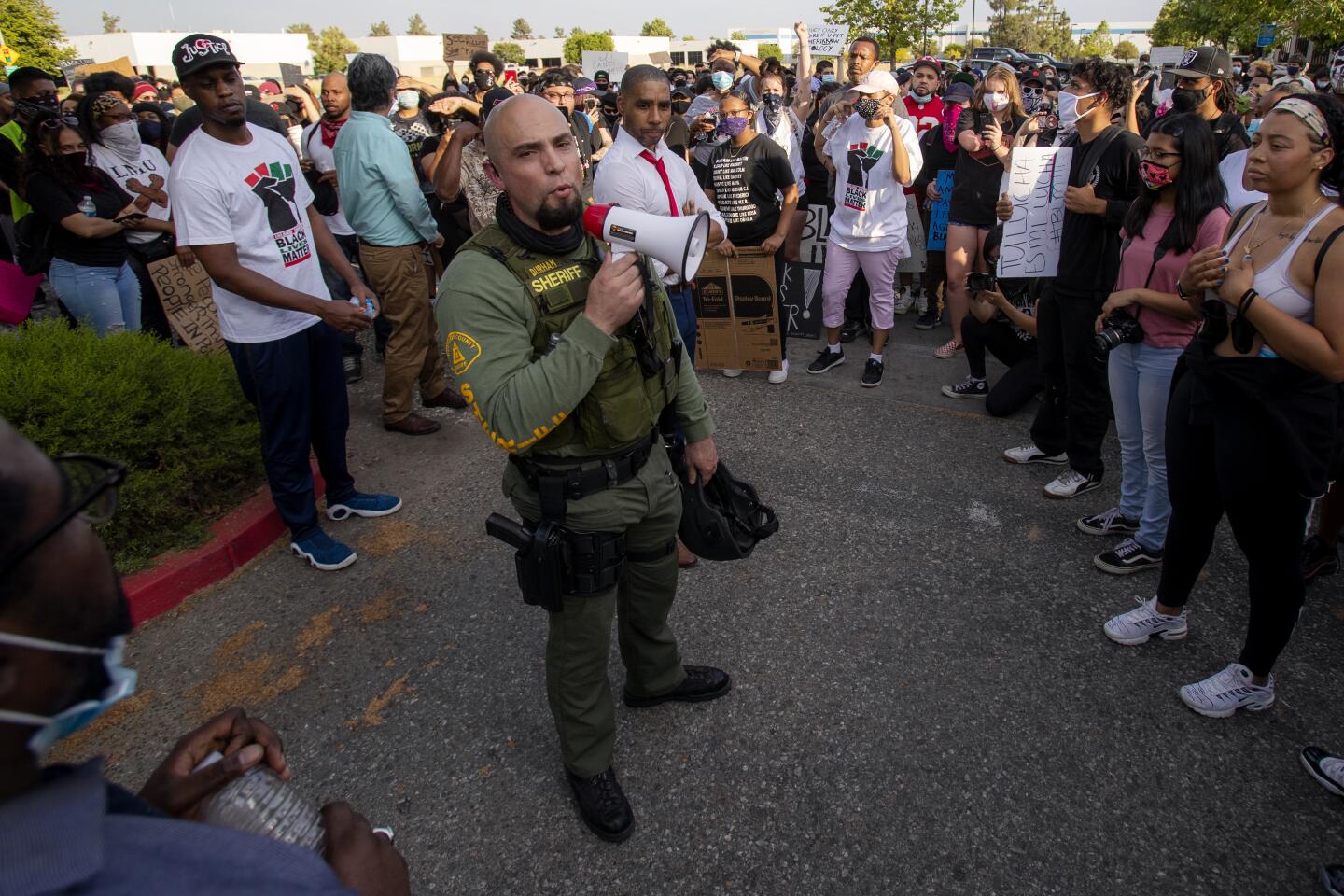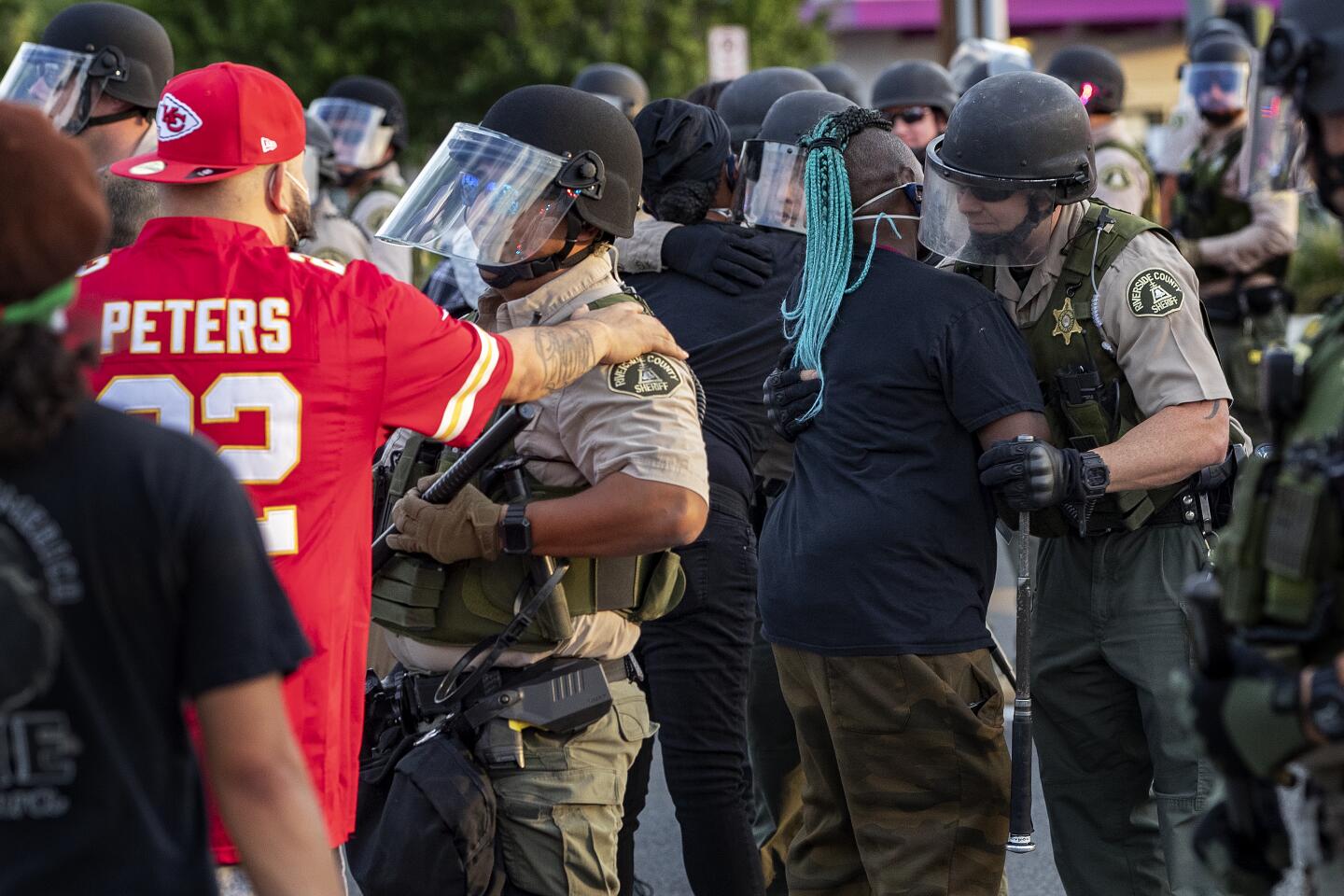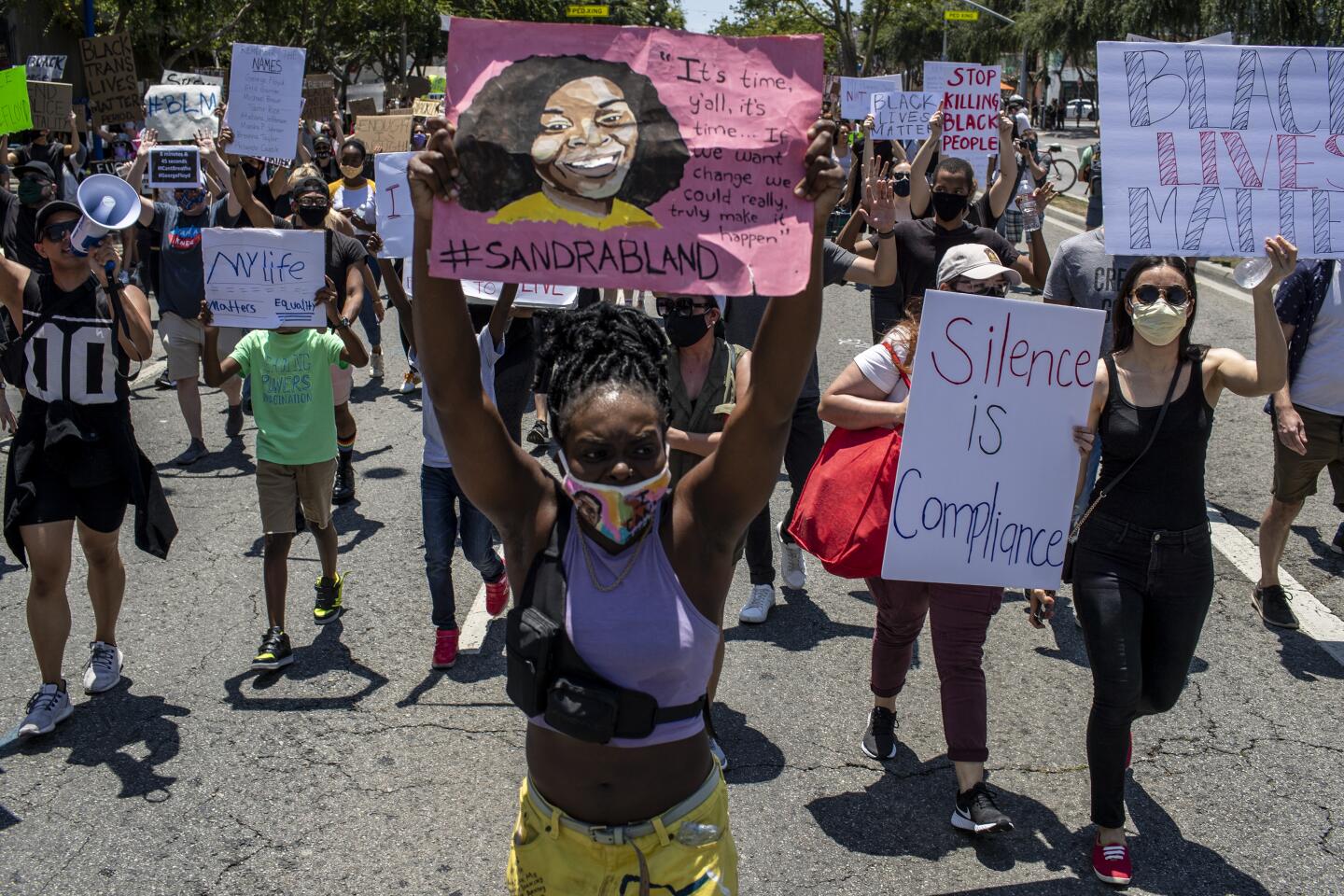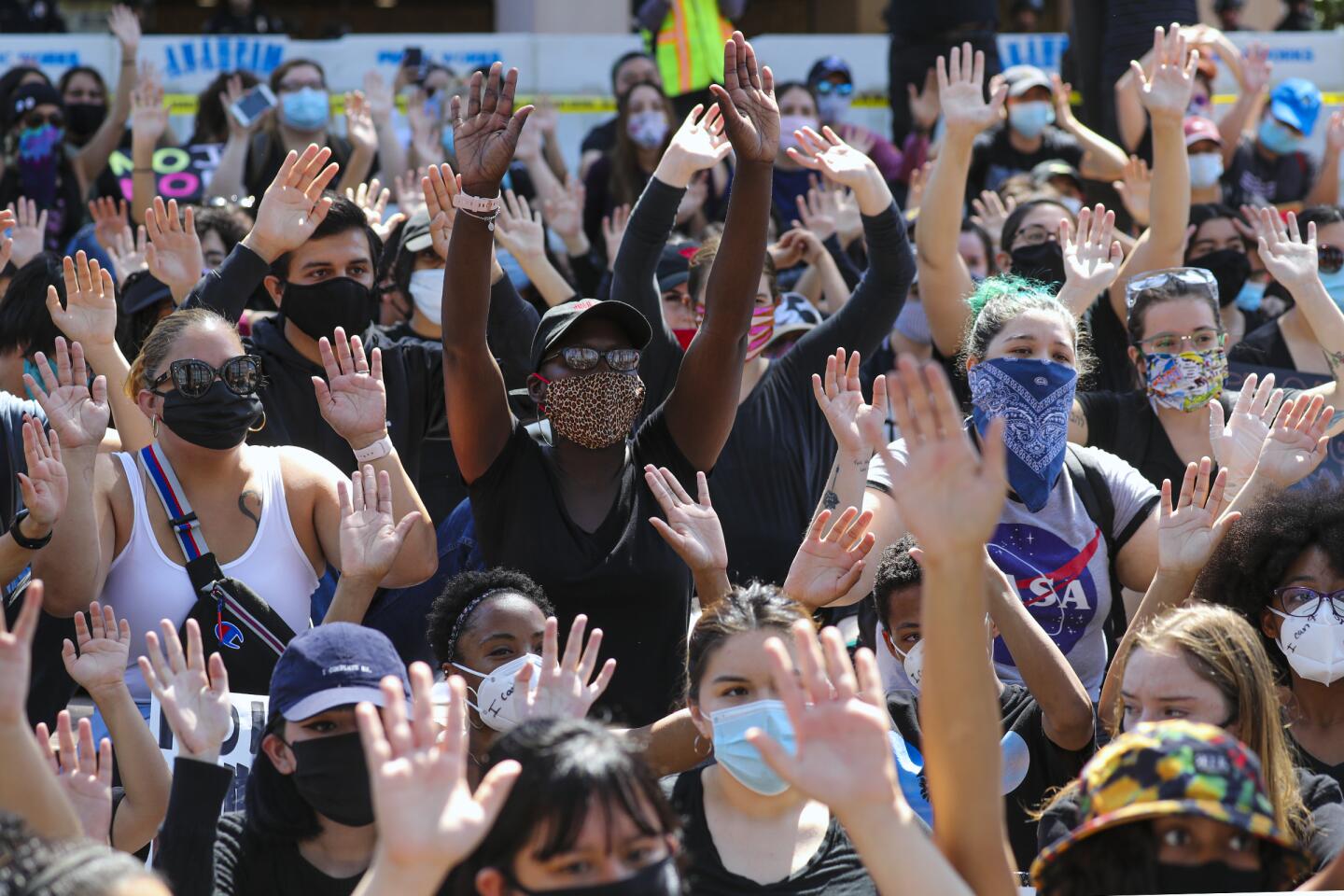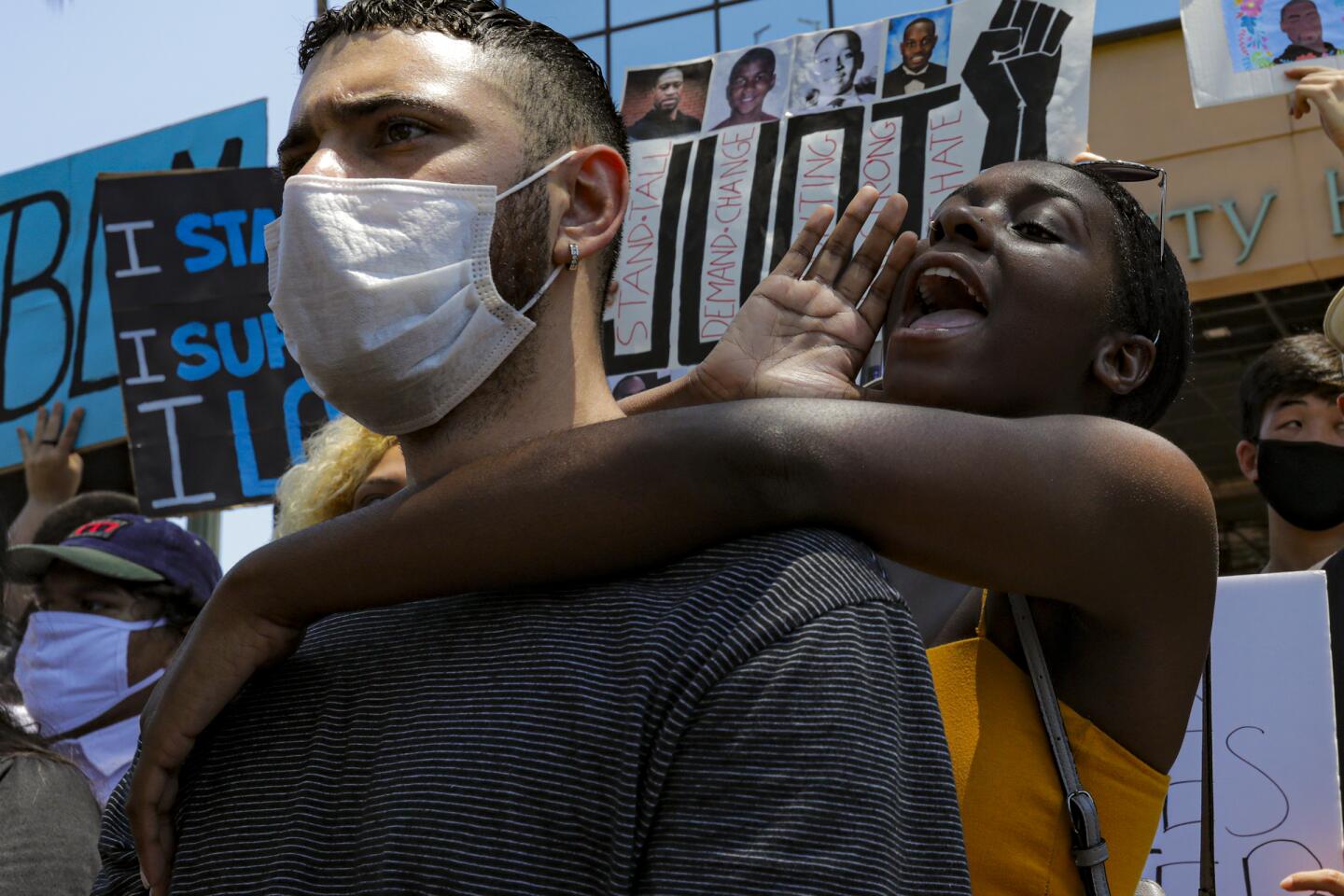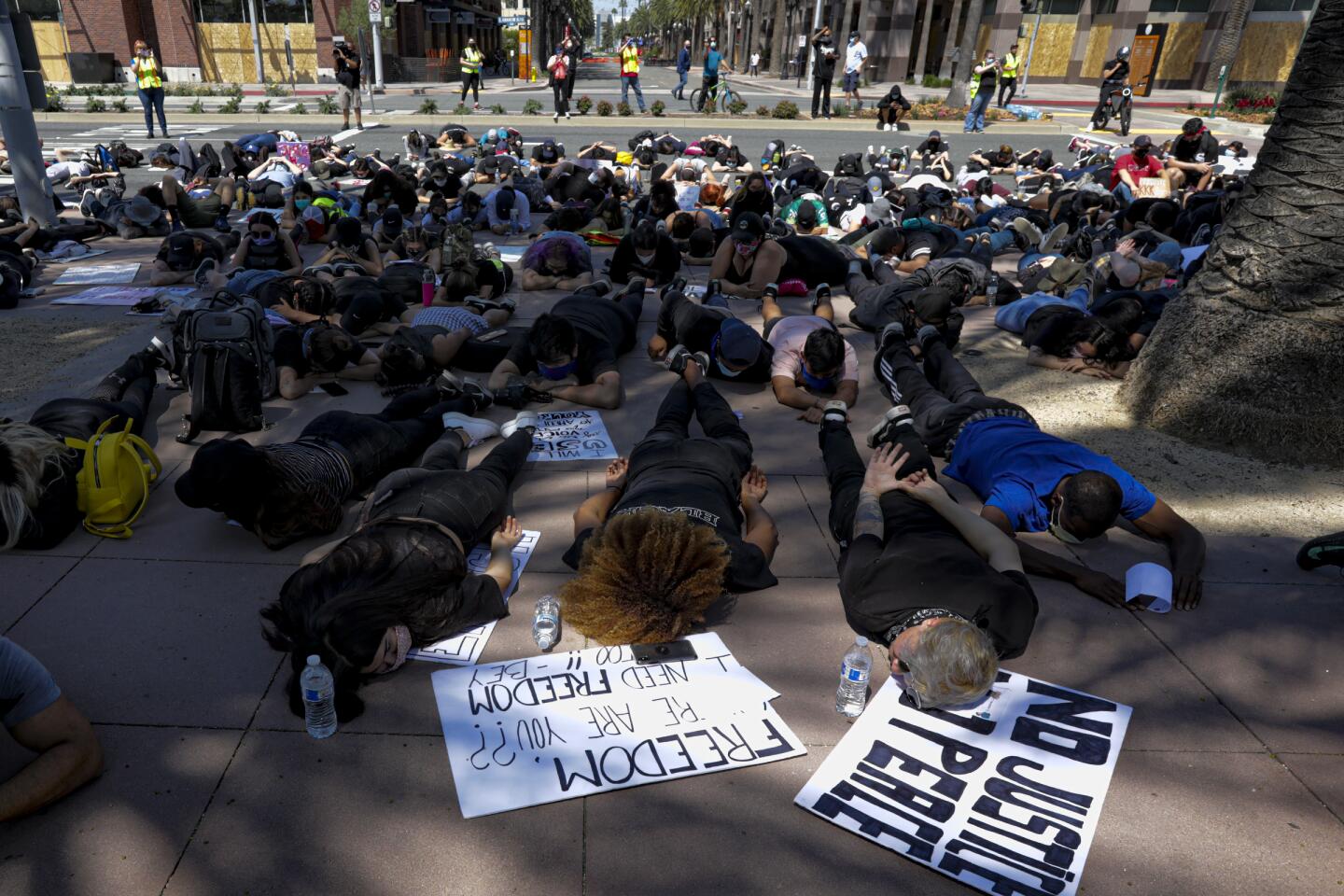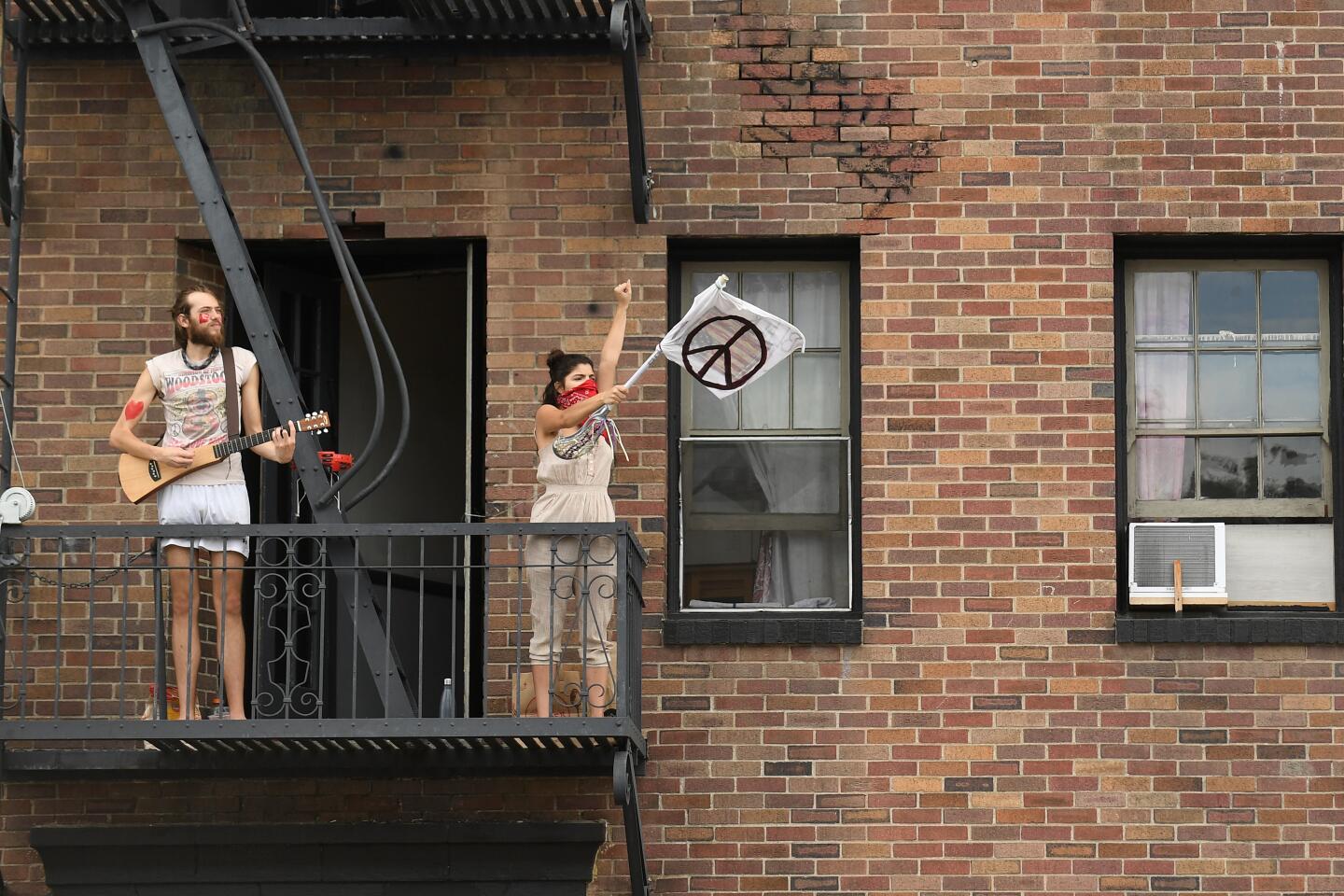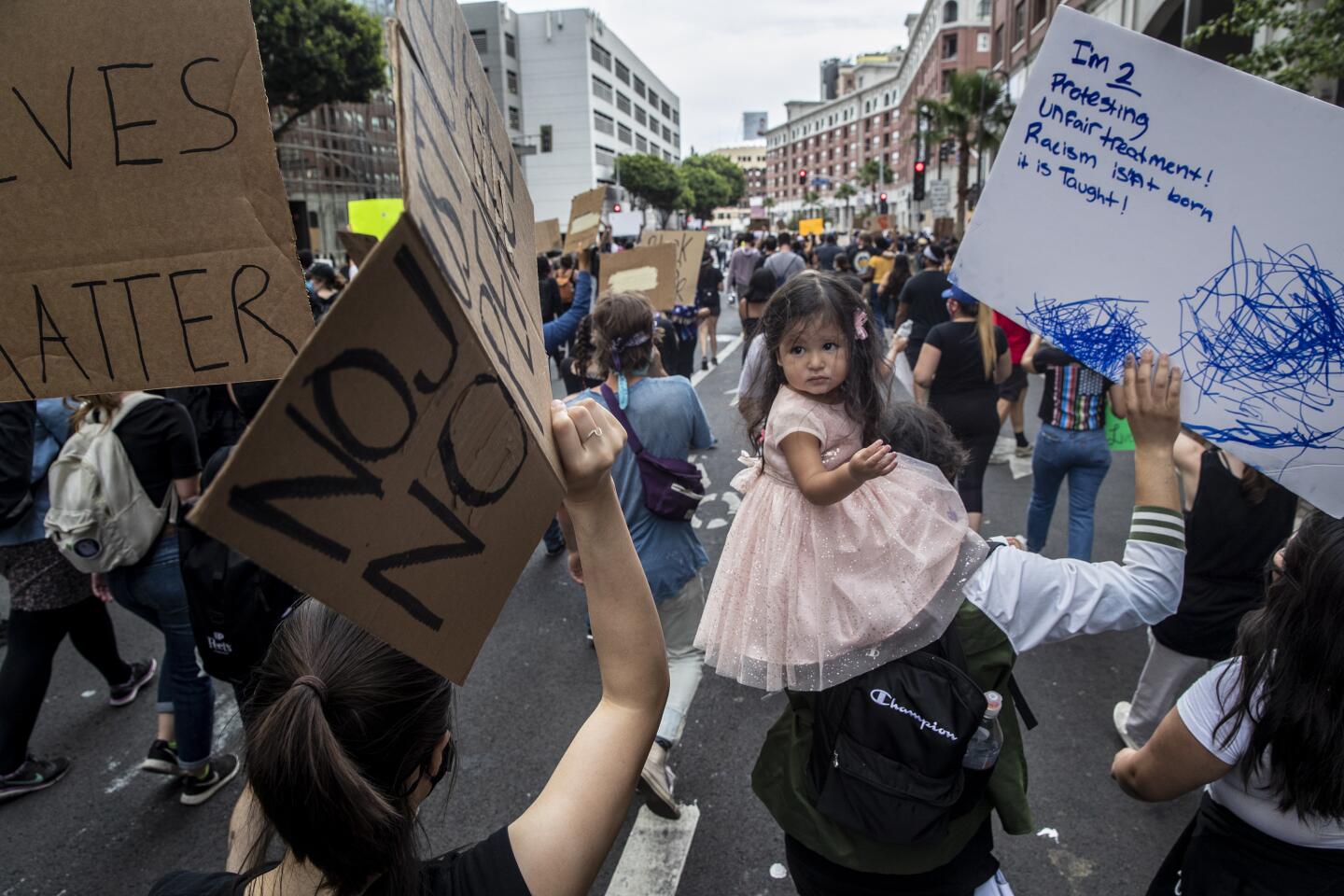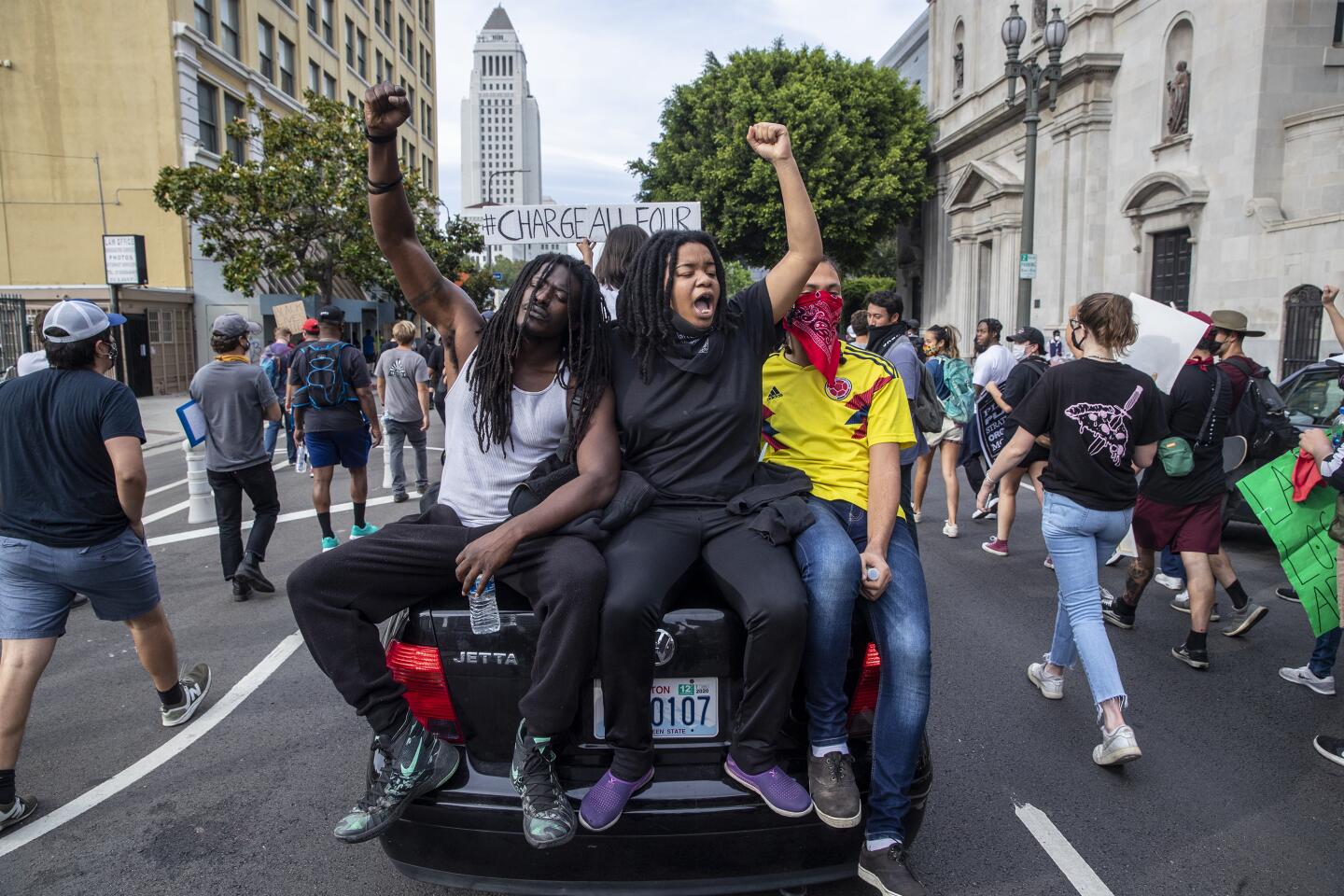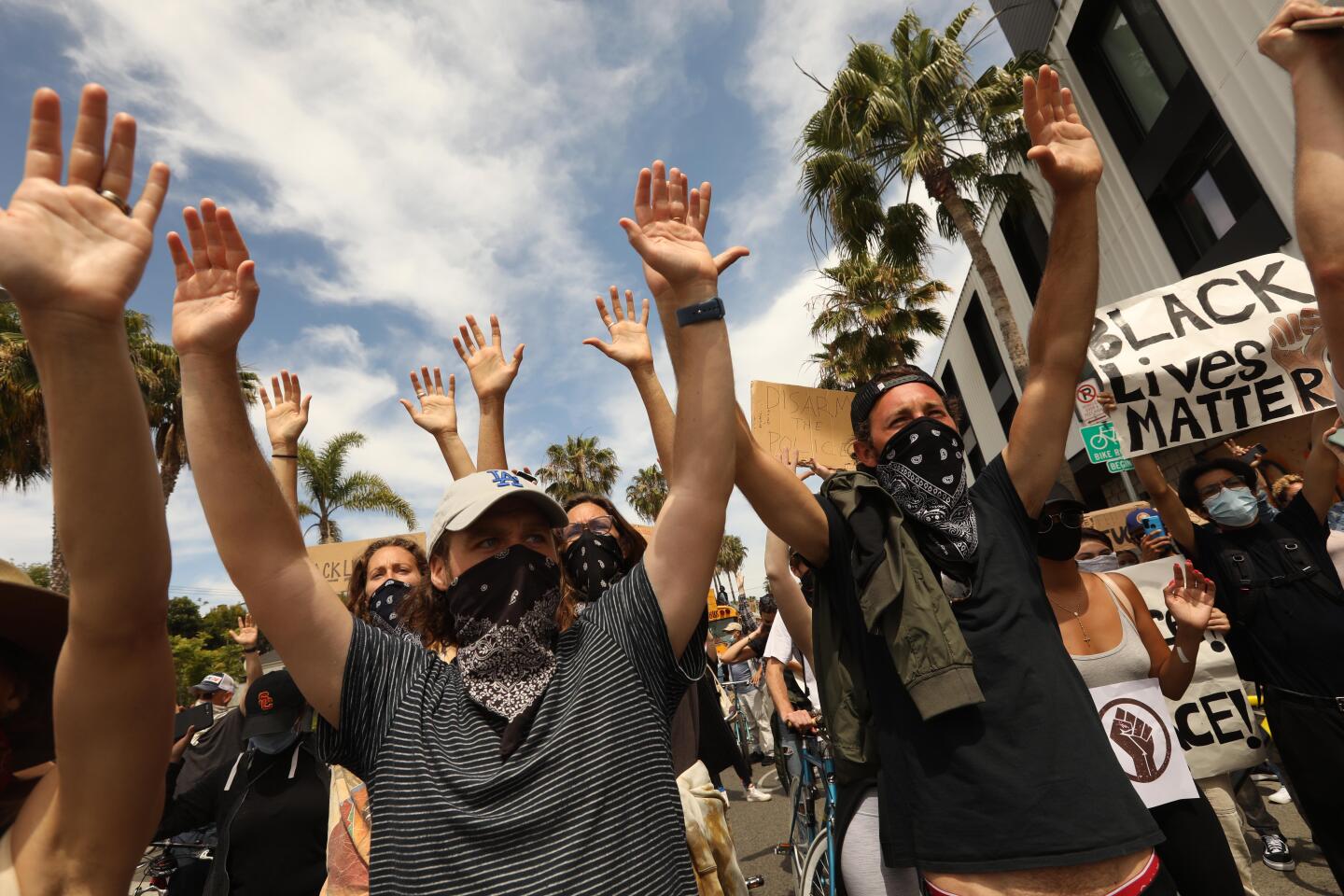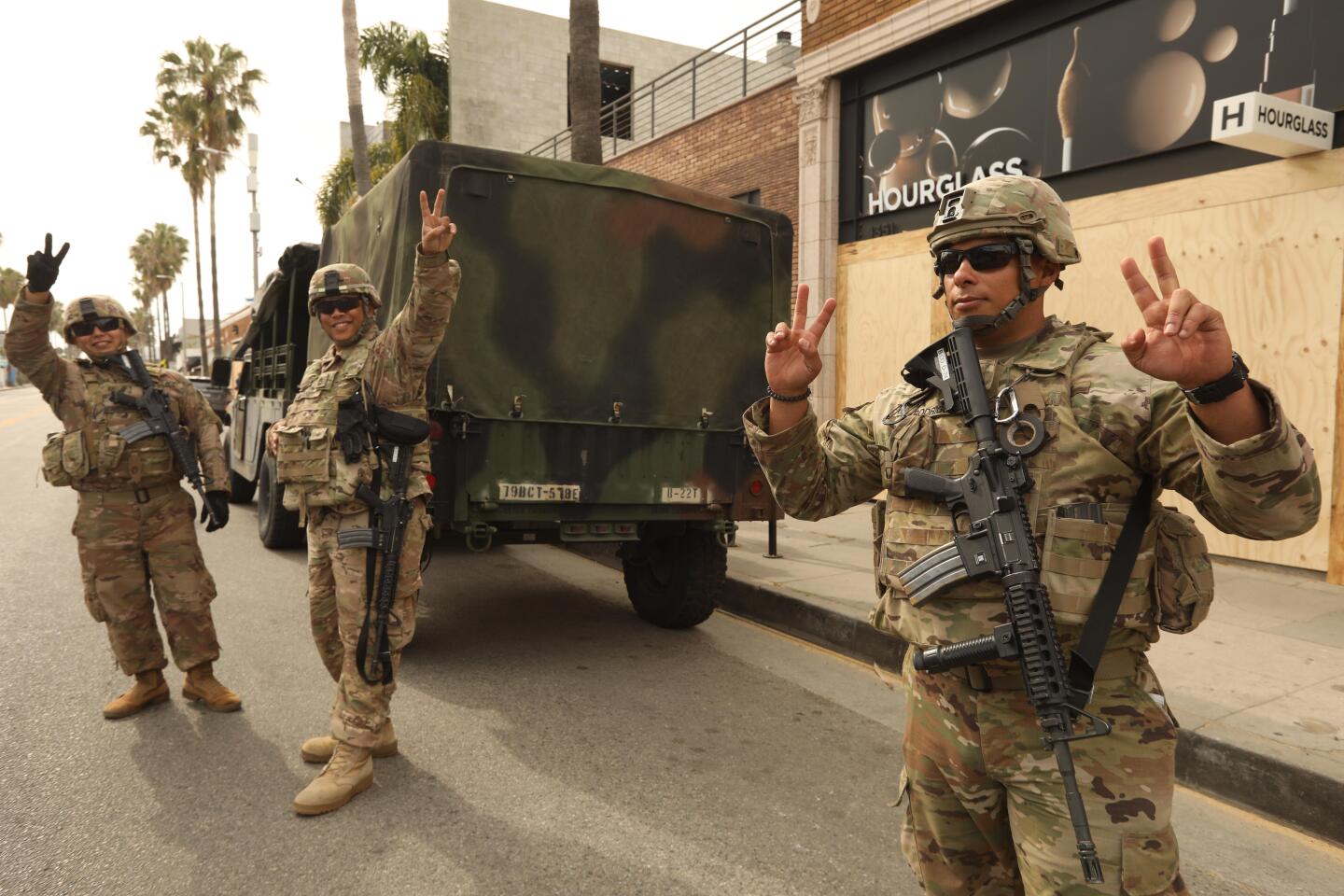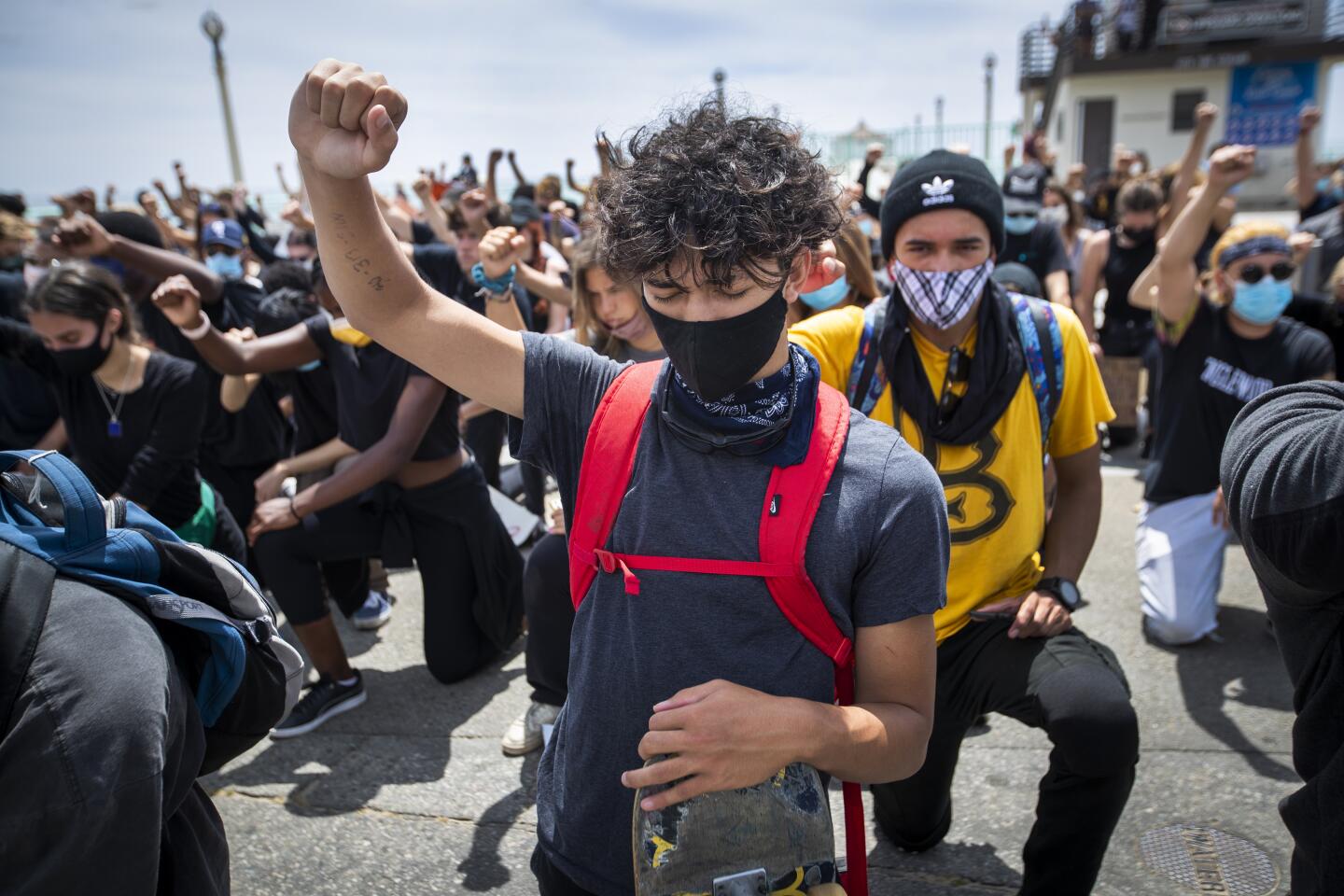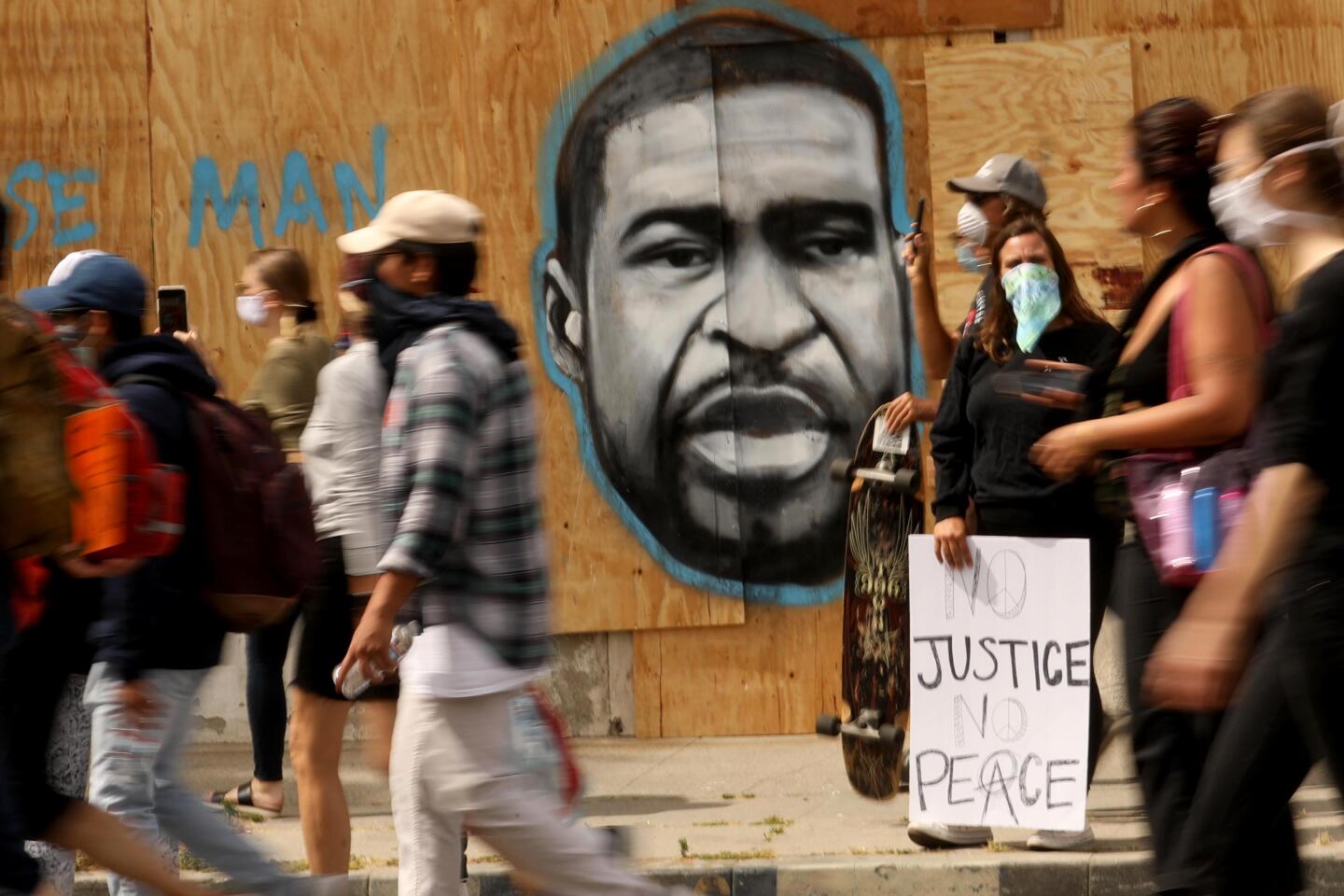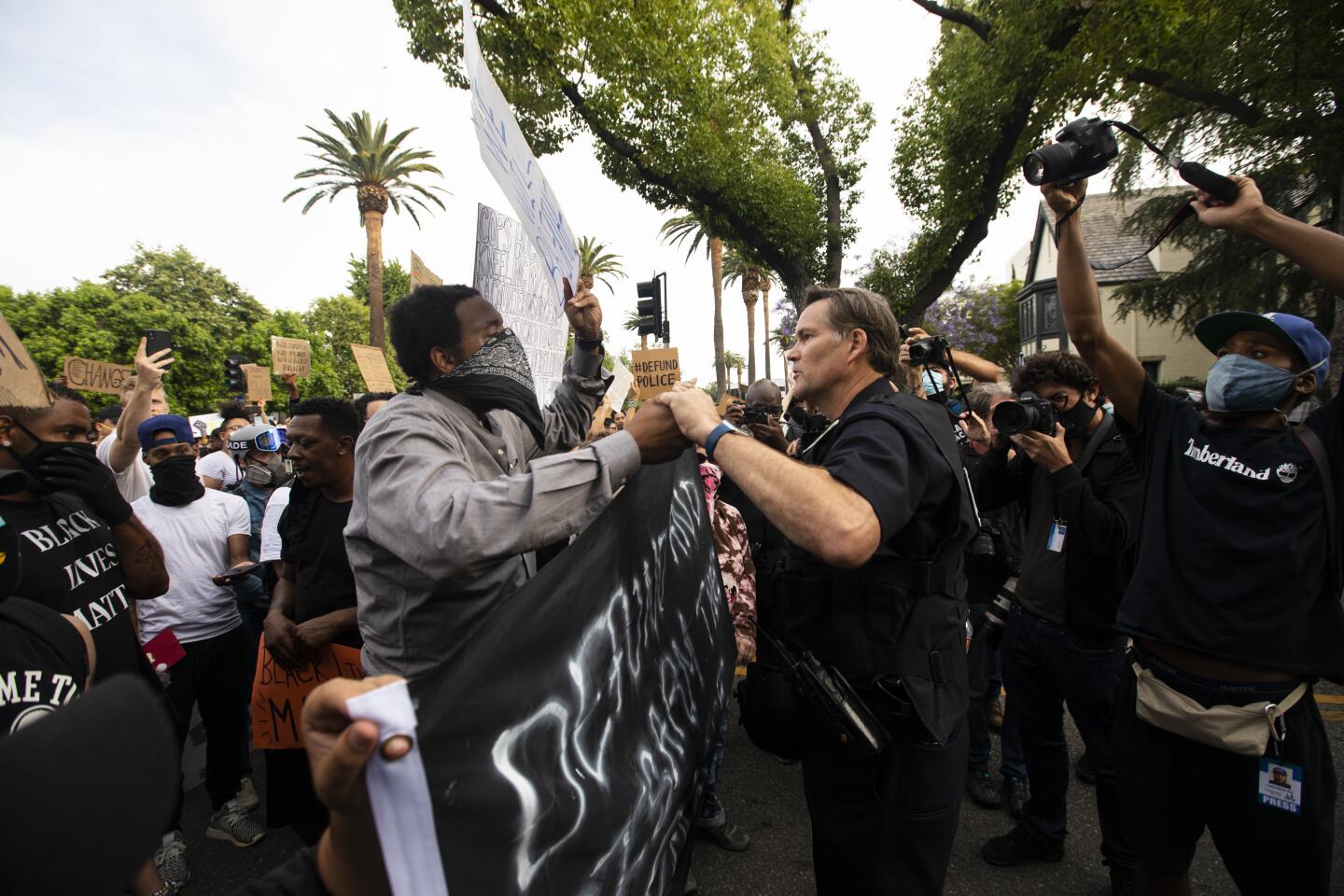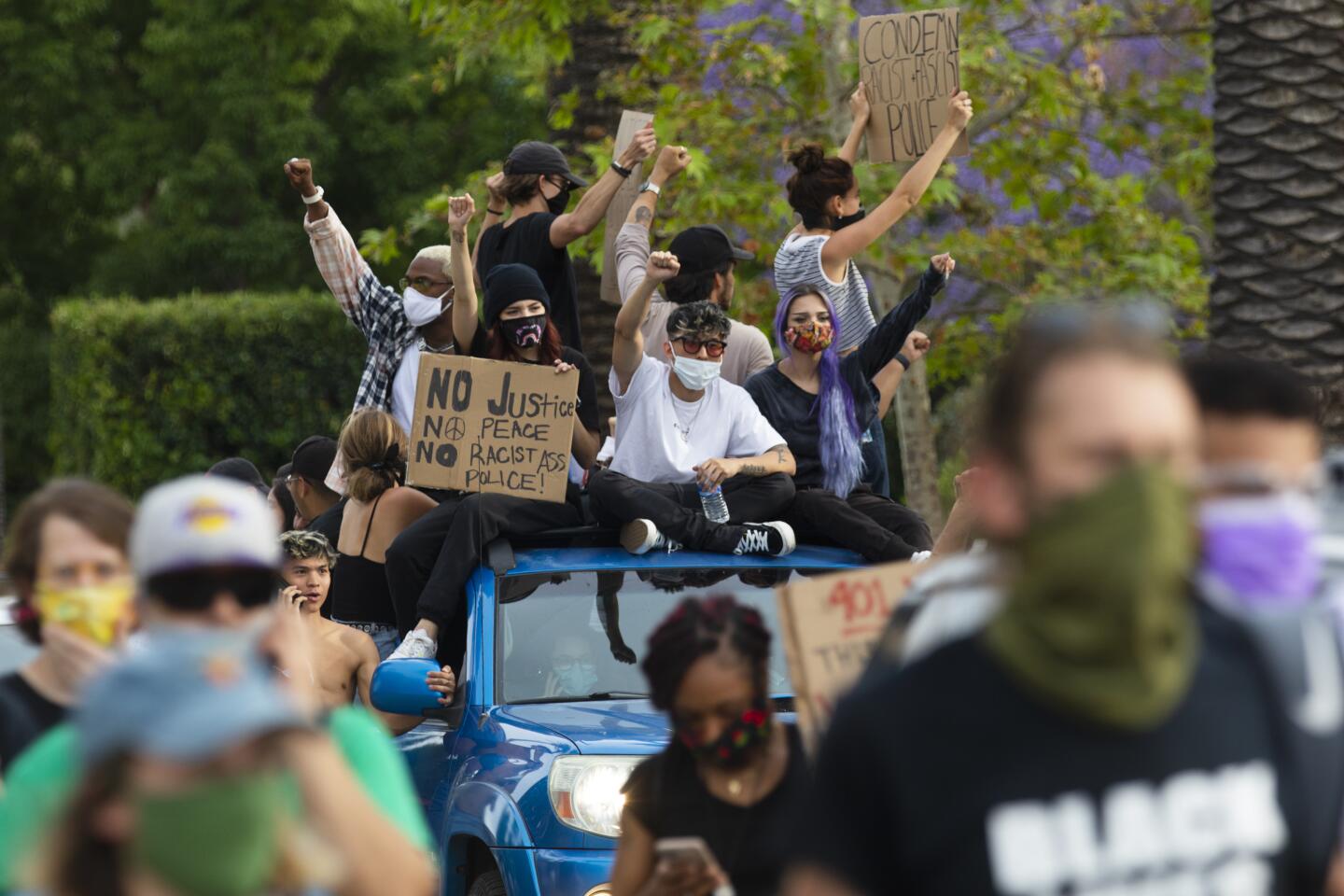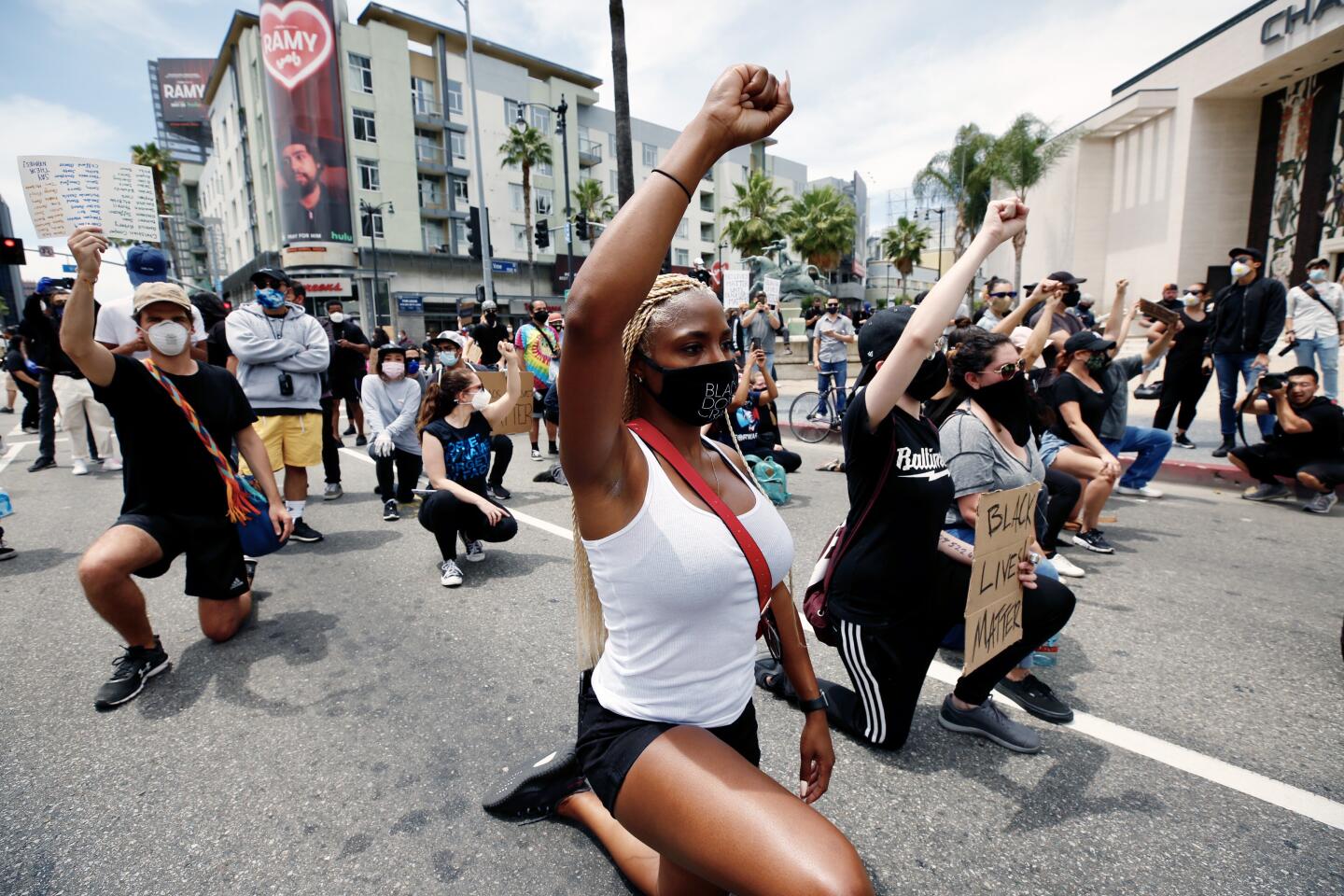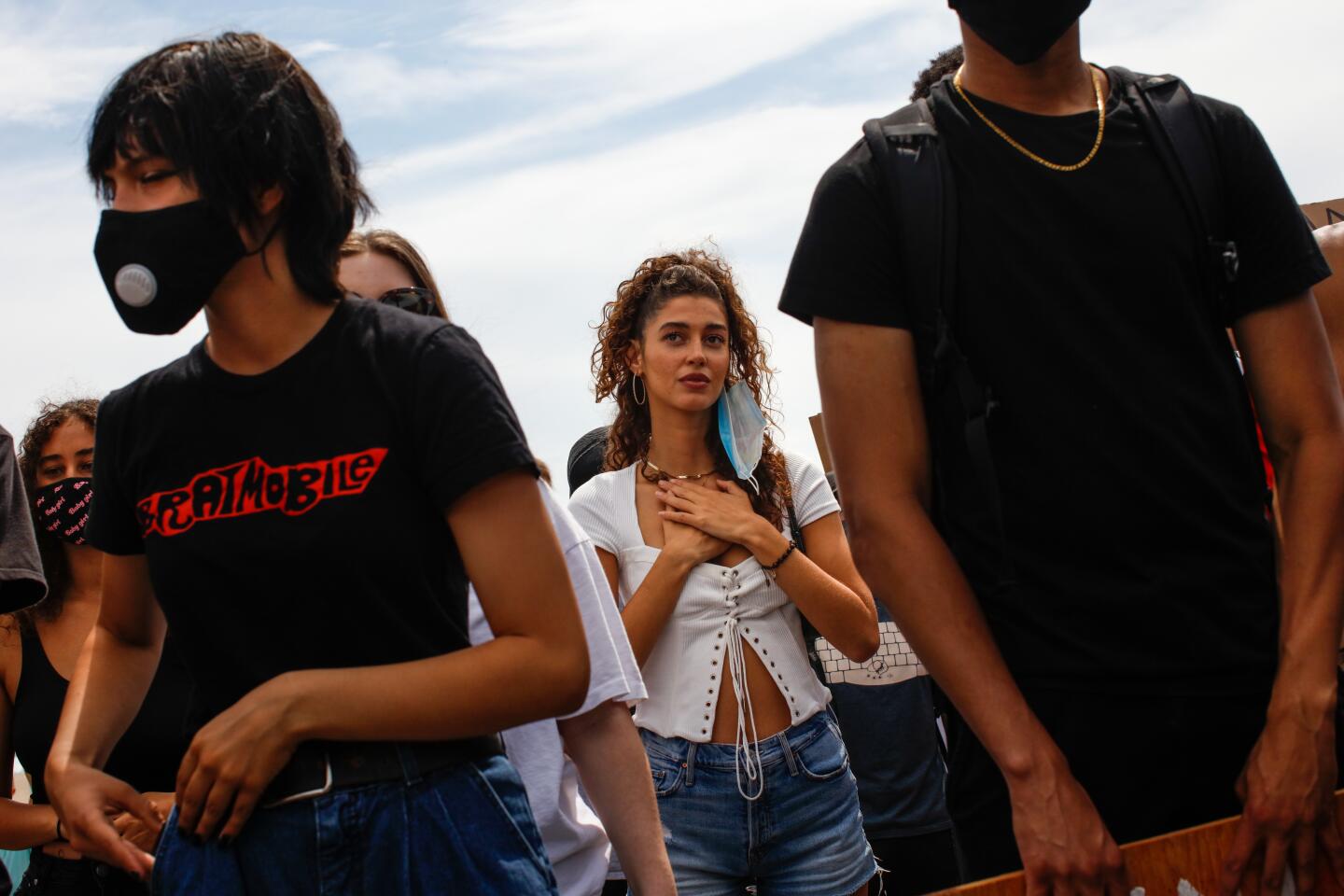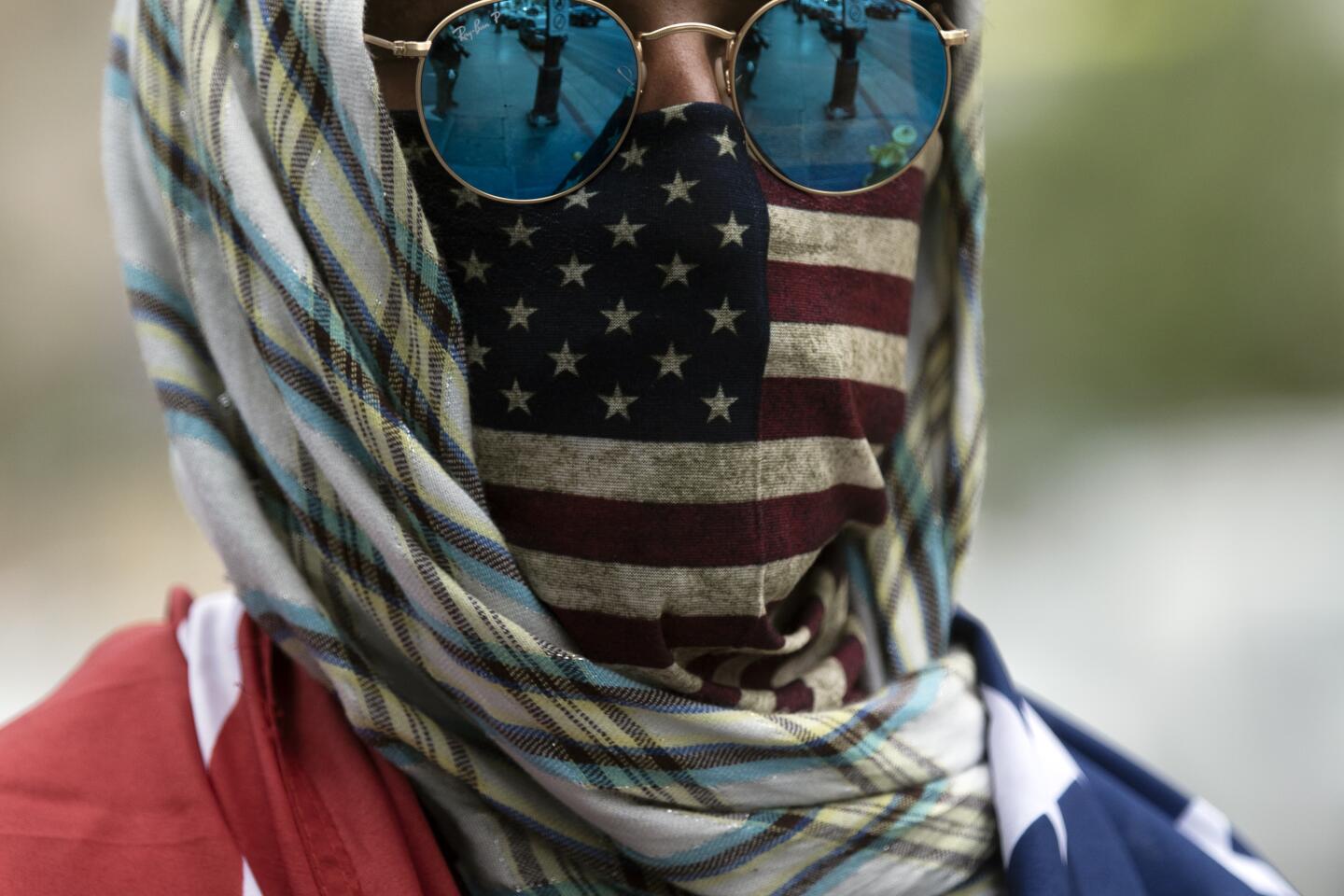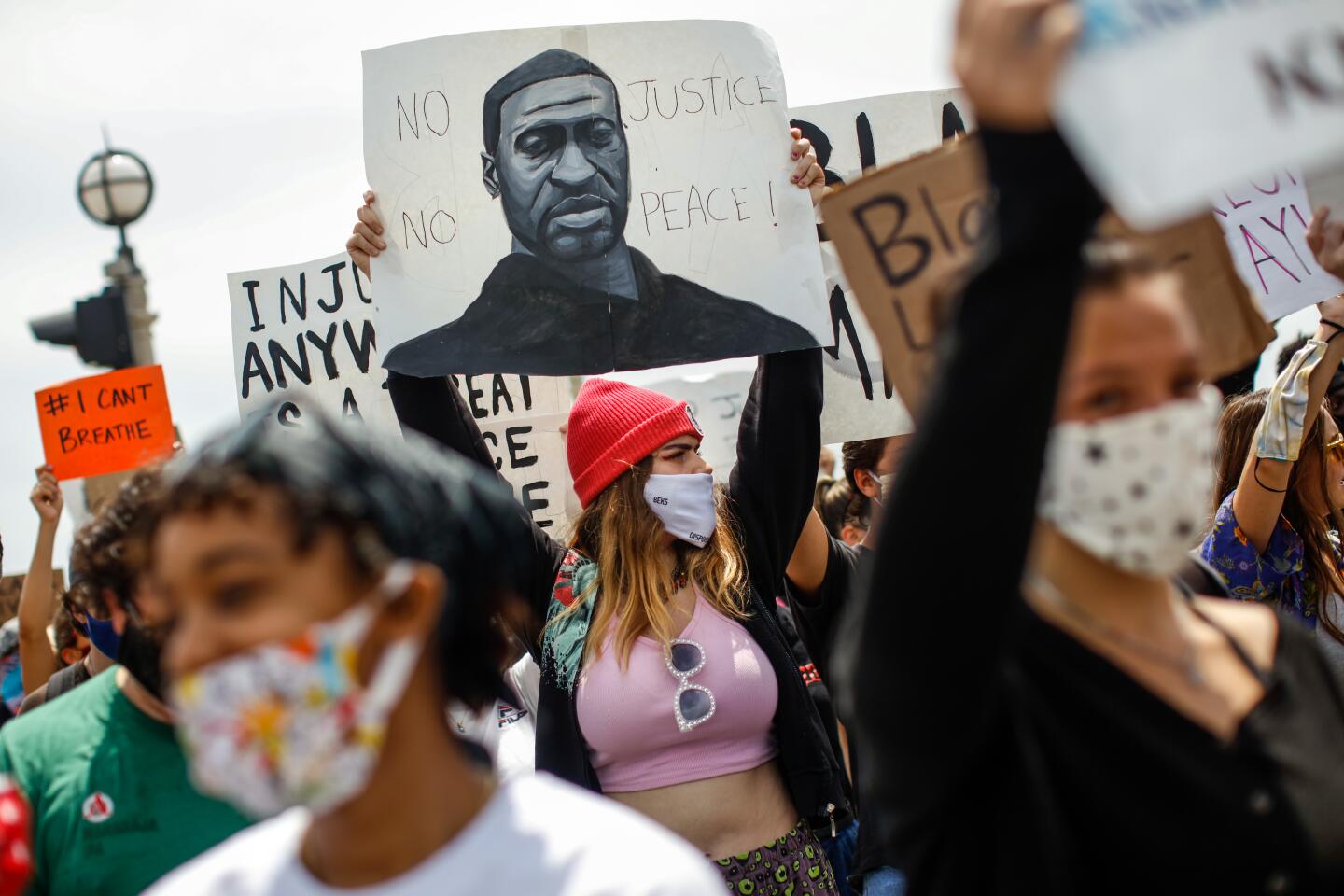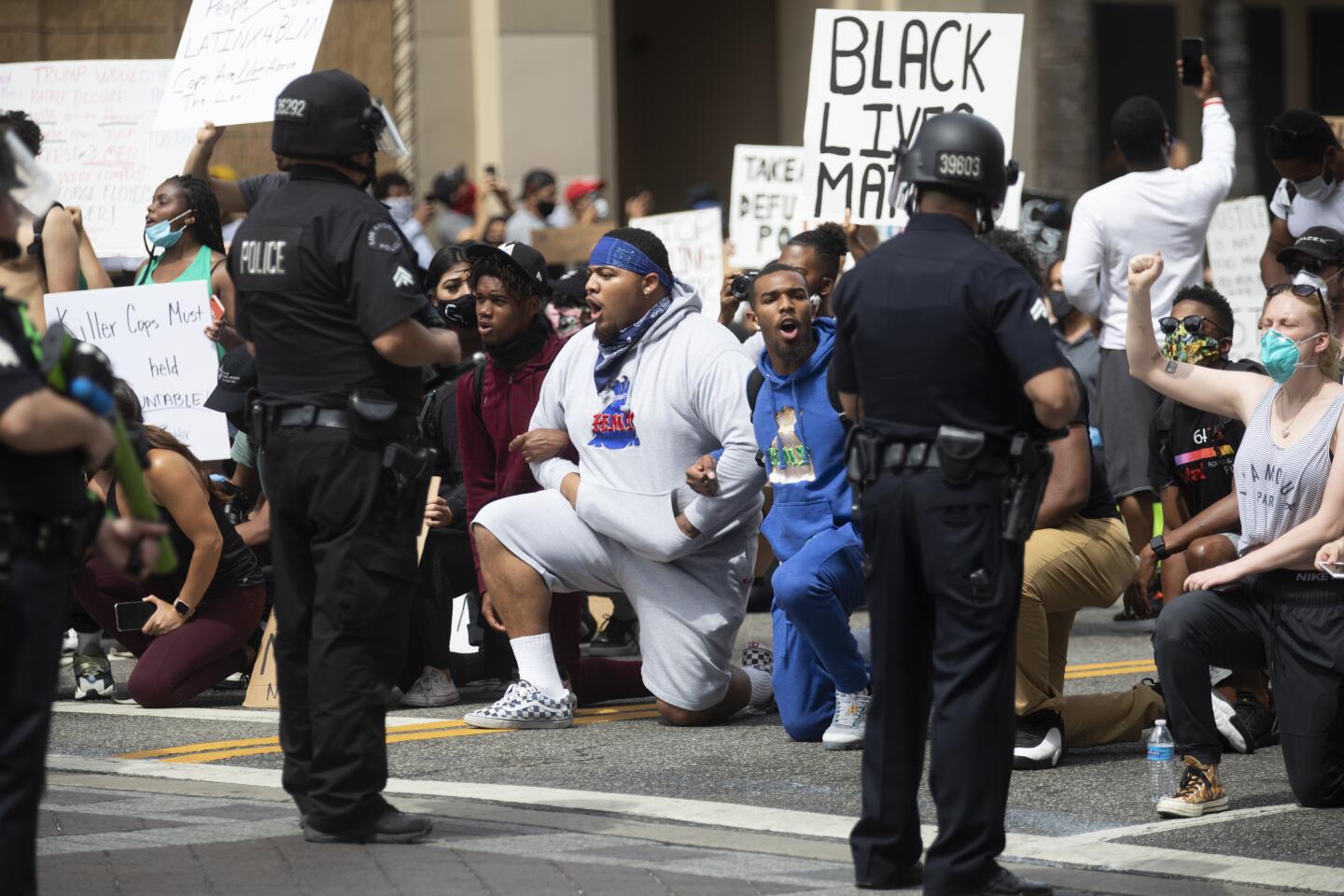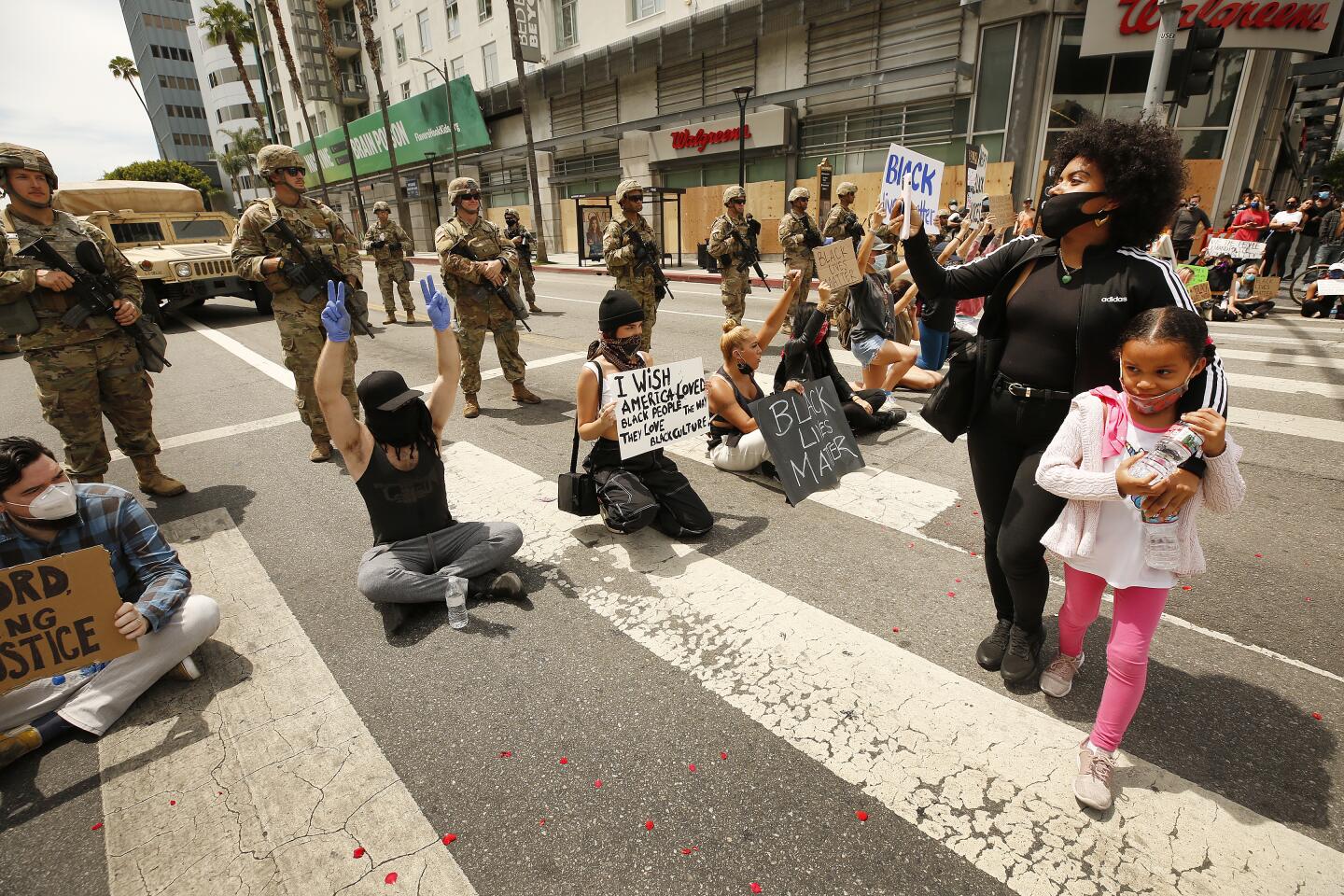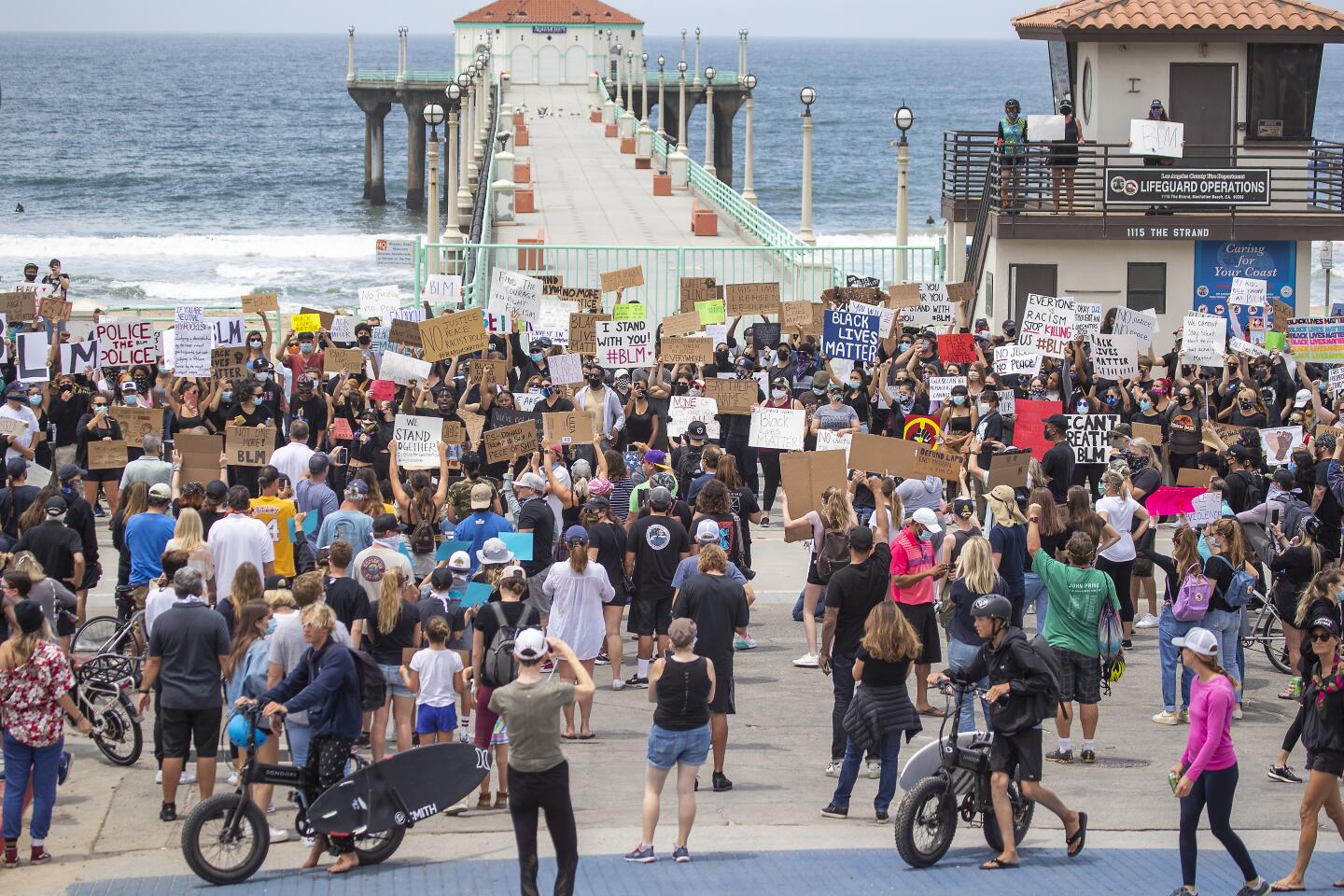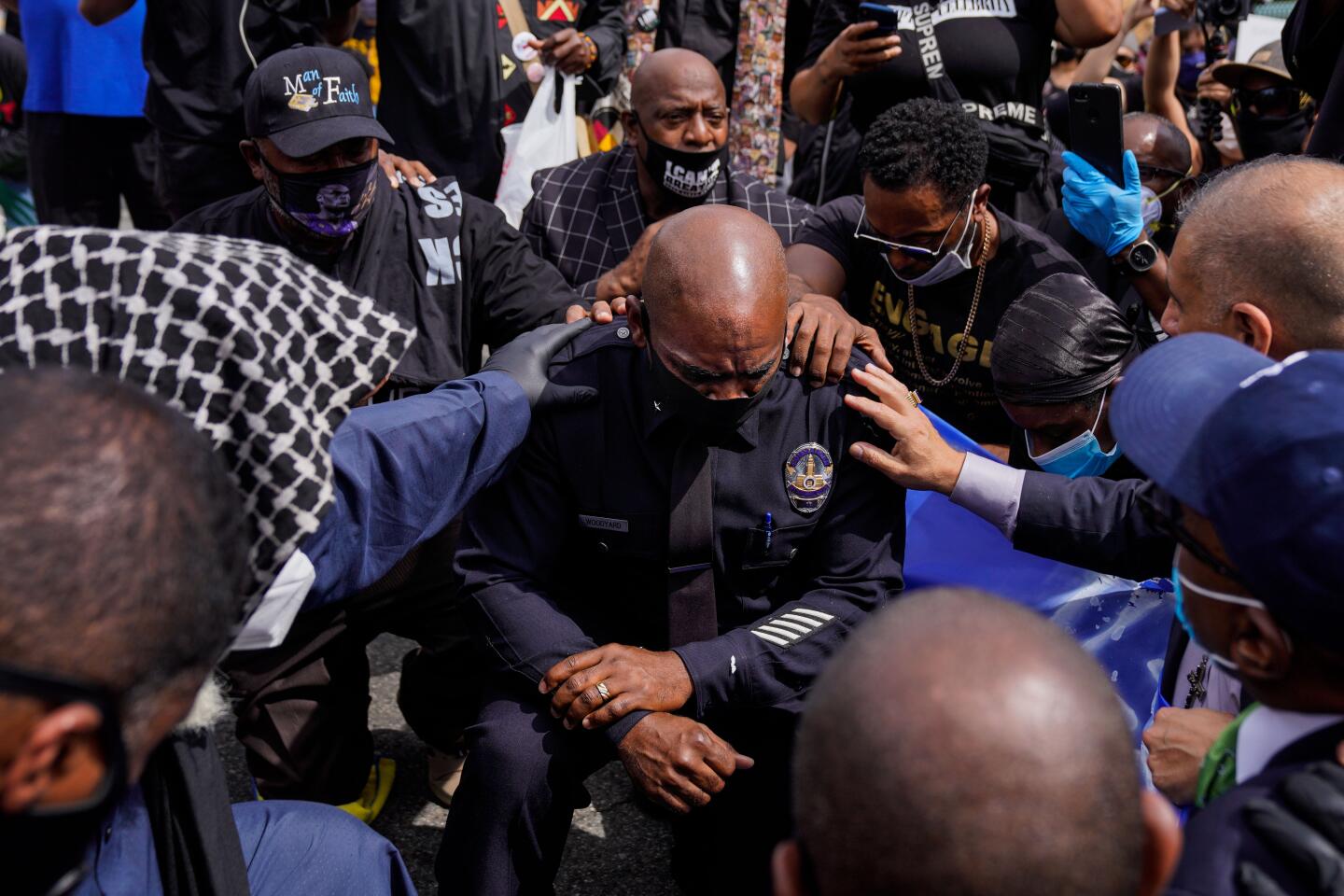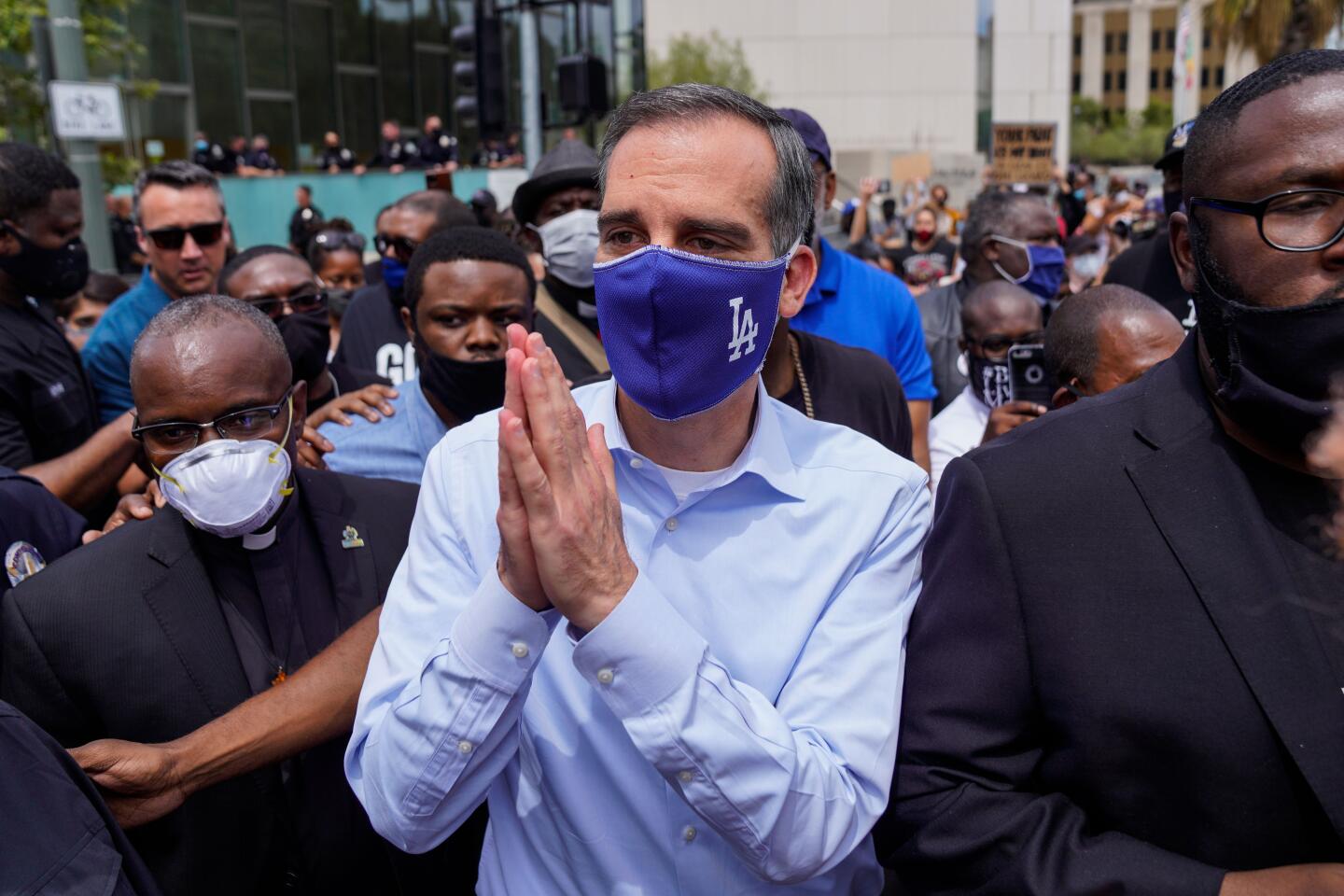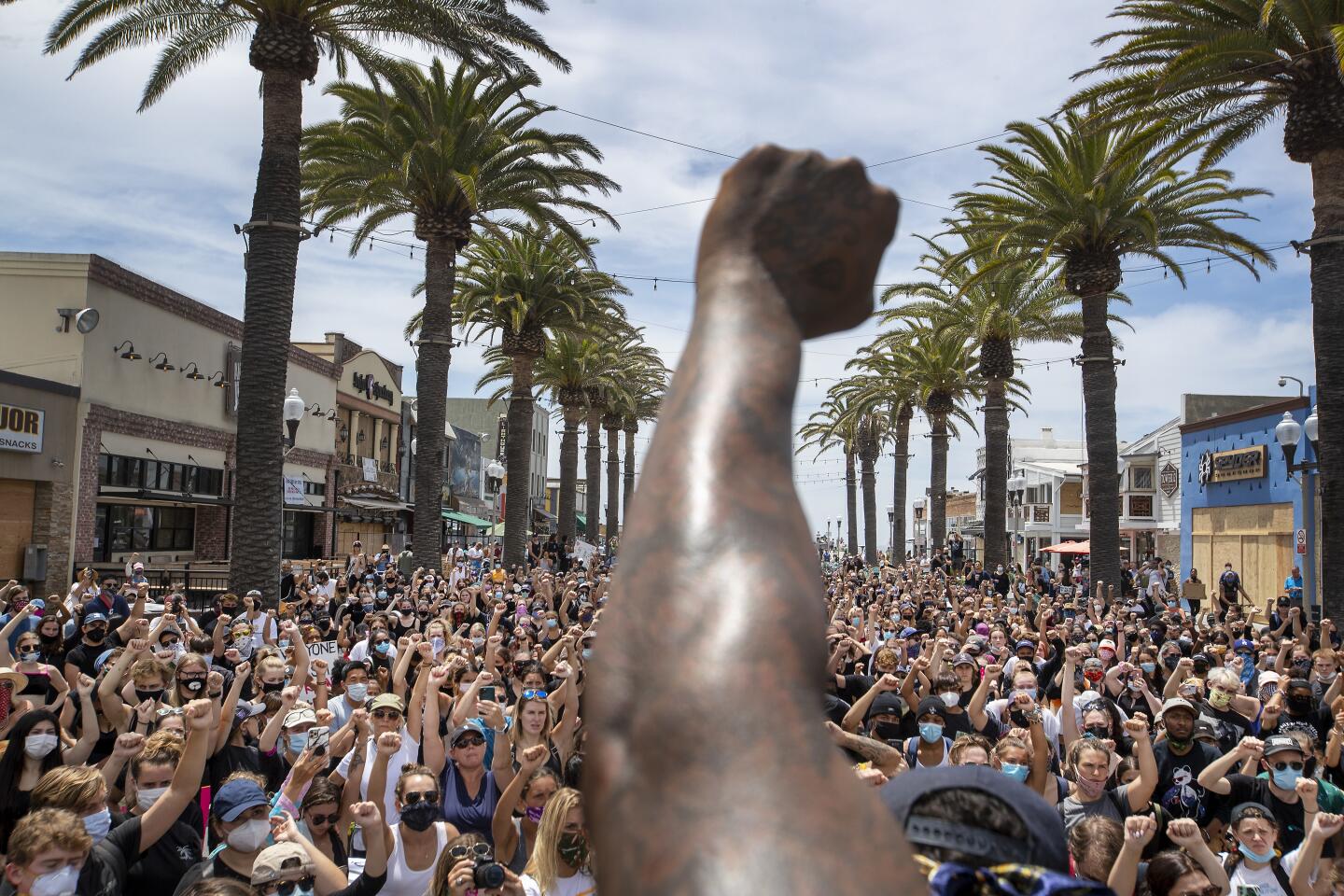Draft report on L.A.’s response to summer protests notes flaws in inter-agency coordination
- Share via
In the midst of rowdy protests, arsons and other property damage in Los Angeles this summer, officials from various city agencies that had been called into the field were requesting escorts from the already-overwhelmed Los Angeles Police without any centralized coordination and at times in areas where there was no unrest.
When the National Guard arrived to help quell the chaos, officials in the city’s Emergency Operations Center were unsure of the troops’ marching orders — and didn’t know what they were allowed to do.
And as local leaders instituted nightly curfews, there was no plan for disseminating the information to the public or the thousands of protesters in the streets — many of whom would subsequently be arrested.
Those findings and others are laid out in a draft “after action report” on the handling of the protests by the Los Angeles Emergency Management Department, which worked to coordinate the city’s response by providing logistical support to the LAPD and other agencies in the field.
The report was posted online as part of the September agenda of the department’s Emergency Management Committee, which is comprised of emergency managers from different departments in the city. Jessica Kellogg, a spokeswoman for the emergency department, said the report is still being revised.
It will eventually have to be approved by the department’s Emergency Operations Board — which is chaired by LAPD Chief Michel Moore and includes other top emergency officials — but Kellogg said she was not sure when that would occur.
The draft report is the first of several city assessments of the protests to be made public. Others that will focus more narrowly on the actions of the LAPD, which was the lead agency in the response, are still pending.
The report largely focuses on the efforts of its own staff to coordinate responses between agencies from their downtown emergency center, outlining both “best practices” that were used and “areas for improvement.”
It notes that, when the protests erupted in late May, the Operations Center was already up and running during weekday hours as part of the city’s response to the COVID-19 pandemic. That made ramping up to an around-the-clock emergency posture in response to the protests easier in some ways, but harder in others, the report found.
The report found that “partnerships and open communication already established since March of 2020 for the pandemic, resulted in a more developed, organized, and effective coordinated response.”
But it also noted that there were no clear guidelines for filling out required paperwork for two simultaneous emergencies, including status reports intended to convey to top officials where the city stood on any given day in terms of emergency resources and needs.
The dual emergencies also presented other hurdles, including forcing the LAPD to “establish a system to separate calls related to the protests and those related to COVID-19,” the report found.
The report noted other interesting facts about the city’s response during the protests, as well. For example, in the aftermath of the protests and the fires and property destruction that occurred, public works crews removed 300 tons of material from the city, including 71 tons that were “directly related to ‘broom and shovel’ cleanup related to vandalism,” the report found.
The report estimated a later protest in Hollywood on June 7 — the largest of any of the gatherings — was attended by 50,000 people.
The emergency department ultimately concluded that its response was “successful” overall, but said changes are underway to ensure that the identified problems aren’t repeated.
Asked about police officers being called out to quiet areas to escort other city personnel during the height of protests, Josh Rubenstein, an LAPD spokesman, said the department always works “with the goal of ensuring the safety of our fellow city partners,” and recognizes that protests are inherently dynamic situations where conditions can change on the ground quickly.
He otherwise declined to comment on the findings of the emergency department’s report, citing the ongoing nature of the LAPD’s own review — which he said would cover some of the same topics.
Rubenstein said he did not have an estimate for when the LAPD’s own report would be completed and made public.
Los Angeles Times reporter Emily Alpert Reyes contributed to this article.
More to Read
Sign up for Essential California
The most important California stories and recommendations in your inbox every morning.
You may occasionally receive promotional content from the Los Angeles Times.

